It’s been three years. Which is roughly how long I needed to recover from writing the last one of these things. While I had planned to write this last fall, that didn’t happen. But now that a lot of us are either stuck indoors, or about to be, it’s as good a time as any. So welcome to The Beast of a round-up.
This time though, I’m simplifying it a bit. Last time I covered some 20 different apps. While many of those apps do still exist and are now more mature, I’m going to focus this round-up on what I believe to be the Top 11 indoor trainer apps. With that metric largely being driven by the userbase, and how often I actually hear people talk about it.
As much as every company wants to tell me their app is most important, I tend to find if nobody is talking about it…then nobody is actually using it. It’s a surprisingly simple concept. In the case of 2020, it’s all relative. With Zwift at more than 300,000 users, the stakes are higher – as is the baseline.
So, without further ado – here’s what I’m covering this time around, in alphabetical order (use the left sidebar to quickly skip to a different app):
– Bkool
– FulGaz
– Kinomap
– Peloton Digital App (sans-Peloton Bike)
– RGT (Road Grand Tours)
– Rouvy
– The Sufferfest
– Tacx Training App
– TrainerRoad
– Xert
– Zwift
One could likely argue for PerfPro, or Golden Cheetah. Perhaps Kinetic Fit. Maybe CVRcade. One might also suggest OneLap – though given my readership here is 99.9% not in China, and that platform is 99.9% catered to the Chinese market (albeit with some rough translations for some parts in English). Then there’s apps that are much smaller, but still might be cool for a follow-up in future weeks. For example some of the one-person developer type apps like Arcade Fitness or The Velo Set, or a handful of others.
Ultimately, as I said before that I could try and get everyone on this guide, but then the guide wouldn’t ever happen. And while I’m sure someone from missed apps may disagree, I think this is by far covering every one of the major and middle players of apps people are using these days. Oh, and finally – I paid for access to all these apps myself, or used their various 14-30 days free trials. None of this is sponsored in any way, shape, or form. In fact, I pay these companies as part of my monthly subscriptions, just like you. That’s just the way I roll.
What you’ll need:

It probably goes without saying that you’re going to need some sort of indoor trainer here. But it doesn’t have to be an expensive one. Virtually every one of these apps will actually work with so-called ‘dumb’ trainers, ones that don’t have any smarts at all. Ones you might have laying around in your garage from a decade ago. Most of these apps will have those models in there and you’ll be up and running with usually nothing more than a speed sensor.
Still, a lot of you will have (or want) smart trainers. I’ve got a separate post on that with all my recommendations. Go check that out, it’s just as detailed as this post, except it’s about trainers instead of apps. From budget to expensive smart trainers, and my favorite accessories, it’s in there.
Finally, you’re going to need something to run the apps on. A computer, a phone, a tablet, perhaps Apple TV. Whatever it is, you’ll need at least one device. Each app varies on what platforms they support, but the vast majority of apps today support at a minimum iOS and Android, or Windows and Mac. Some apps even require two pieces of hardware (such as a phone + a bigger screen device). We could go beyond that and talk about how to get this stuff up on a big screen TV, and I did that a few years ago too, but for now, we’ll just focus on the apps themselves.
With that – let’s get straight into the apps. Again, they’re all ordered alphabetically, and you can use the navigational sidebar to skip ahead to the different chunks.
Bkool:
Back in the old days, Bkool sold hardware. These days though, they divested their hardware business last fall, and now focus exclusively on software. Training software to be precise. And actually, they’ve got two different apps. One app is essentially the Bkool that you know and love from yesteryear with races, group rides, outside video rides, VR rides, etc… While the newer secondary app is basically a blend of Peloton and structured workouts, with a substantial amount of Spanish classes.
I’m going to mostly focus on the more typical trainer app here, though I’ll briefly touch on the other bit. If you buy a full subscription, you get access to both. The logic behind splitting it out is that the more casual fitness crowd that’s using the Bkool Fitness app isn’t likely to need all the very bike-specific features like racing or more complex structured workouts of the Bkool Indoor app. In any event, here’s the main homepage of the Bkool Indoor app:
At first glance you might assume it’s all videos, but in reality, each one of these videos is actually a threesome: It’s a video, a 3D representation of the world (à la Zwift), and then a map-view of the world. Don’t worry, we’ll get there in a second.
But wait, there’s more. For some odd reason they split out the non-live events into a separate page that you don’t realize is there till you go into the search panel, then you’ll see the other four sections. Some of these have boatloads (like, thousands) of options within them. For example if I open up the Routes one, and then select ‘The Whole Catalogue’, then I see tons more:
And the same is true of ‘Workouts’, and then there’s a handful in the Velodrome games folder:
In any case, we’ll back up to the main dashboard first. These are sorted first by those that are live events, with other real-world people. Aside from Zwift and Peloton, there’s no other platform that comes even remotely close to the live user numbers you see here. Many of the recent nights I logged in, a number of the live events had 100+ people in them (though, Bkool says the app might struggle at over 100 people in a given race). During the daytime, most of them had around 20-30 people in them. The fact that I’ll predominantly show a live event is mostly to get the most bang for my buck text-wise here. If you choose one of the non-live videos above, it’s all the same (minus other people).
If you tap on one of them you’ll see information about it, including a course map and elevation plot. You can also poke at the settings as well as the other racers in the course currently:
From a sensor pairing standpoint, Bkool seems to support all the normal stuff you’d expect. Smart trainers, power meters, speed sensors, cadence sensors, and HR monitors. Depending on which platform you’re on, that’ll be both ANT+ & Bluetooth Smart.
Once you’ve got those paired up (which it saves for next time) we’ll go ahead and start one of the sessions. By default, it’ll start in the 3D Terrain view, but you can change that (both the default, and the current view):
If you want to change to either the video view or the map view, simply swipe across the screen:
Back in the video view, the replay of the video will match your speed. You’ll also see competitors along the left side, and then down below you’ve got all your stats and time/distance remaining. Up top in the right it’ll notify you of people entering the event. I couldn’t find any obvious way to turn-off those entry notifications, which got a bit annoying after a while. Perhaps it’s hidden somewhere.
Next is the 3D Terrain view. This is loosely modeled after the terrain you see in the video, but definitely loosely so. Sometimes the two lined up really well (primarily in fields and such with bridges or what-not). Whereas other times in towns it just showed a field, or vice versa. The other thing is that the time of day didn’t really match. So I rode at night in the 3D Terrain view, while it was daytime in the video. To have things match realism-wise, I’d think it’d just match the video. Still, that’s probably nitpicking a bit. Within the 3D Terrain view you’ll see your competitors on the screen, just as you would in Zwift:
Lastly there’s the map view. This can be changed from satellite to terrain to standard map view within the app settings prior to starting. You’ll see your competitors on the map, allowing you to formulate just how viable that totally unrealistic gap is to close.
Now, the one caveat I’ve got is that this was the *only* app during my review period to crash mid-ride. Which isn’t to say I’ve never had other apps crash. Certainly over the years I’ve seen Zwift and others have a bad day. But, given I was mostly focusing on comparison of apps in the last couple weeks, this one did crash mid-ride. However, it also did recover my ride and let me resume a few moments later. I did also find that swiping between the 3D and Video view would result in some weird lag/speeding up. It’d usually sort itself out in a few seconds, but it could probably use a bit of refinement.
Next, over on the Bkool Fitness side, this is where you’ll do any structured workouts you want. These could be instructor-led, or they could just be structured workouts atop pretty scenic ride videos:
If you crack one open you’ll see the exact structure of the workout:
You can pair a power meter or a heart rate strap here, but not other sensor types like a smart trainer or cadence sensor, which is honestly a bit weird since they already have that code based in the other app. Seems like a silly limitation.
Note that you can still go back into the Bkool Indoor app and do structured workouts there though (sans-video) with a smart trainer/cadence sensor:
Finally, the last piece of the Bkool puzzle is their Video Editor, which allows you to upload your own videos to the platform. So if you’ve got a GoPro on your bike, you can go out and record a ride, and then re-ride it in the app later on. This feature is free to use, and allows you to share rides/routes with your friends.
Phew, ok – I think we’ve reached the end. BKool is a huge platform, once you manage to find all the pieces. On one hand, by showing the live events upfront and center (and hiding the non-live events behind a few more taps), the company has managed to significantly increase the community and social aspect of the app. And with the huge subscription numbers they have, that strategy seems to roughly be working. Still, I wonder how many people don’t realize large parts of the platform are buried in the app, or on the secondary app they might not even have installed.
Still, it’s definitely worth a whirl – and I’d say especially so if you’re Spanish speaking, given the number of classes that are available in Spanish.
FulGaz:
If you’re one of those types of peoples that just wants to ride beautiful outdoor rides, from the comfort of your sketchily compiled pain cave – FulGaz is probably the one to be at. While other applications like Rouvy and Kinomap undoubtedly have more rides, the rides on FulGaz, in general, tend to be highly curated. I personally use the Apple TV variant of FulGaz, which I’d also argue is the cleanest Apple TV trainer app out there, from a user interface standpoint.
To get started you’ll be presented with a huge swath of outdoor rides to choose from. They’ve got various categorizations so you can flip through Netflix style until you find the end of the internet:
You can also favorite certain ones, and pre-cache the video download, including in 4K. Heck, for those geeks among us, you can even pre-cache them onto a local NAS server if you want to. The 4K bit is notable because apps like Zwift don’t actually render in 4K on Apple TV 4K, whereas this does. Cool stuff.
When it comes to sensors, the app supports everything out there that you’re likely to use, from power meters to smart trainers, and heart rate straps too. They’ve also done a fair bit of work behind the scenes with the Wahoo KICKR CLIMB to really nail that experience. They do that by using a more advanced version of Wahoo’s CLIMB API, to send the commands just a tiny bit ahead of the trainer, so that what you see on the app matches what you feel in your legs precisely. It might sound like a silly nuance, but if you ride FulGaz on a constantly hilly course, and then ride some other app on a similar course – you’ll immediately notice how much more realistic FulGaz feels. Might also explain why Wahoo often will use FulGaz on KICKR CLIMB demo stations at trade shows.
Once you pick a course you’ll see the course profile and a few tidbits. And again, the ability to download it to your cache (to guard against any connectivity issues if you have a sketchy internet connection).
After that, simply hit go and get rollin’. The app shows all your power/HR/cadence/etc metrics, and even will show gearing for certain smart bikes. Again, we see FulGaz lead the way here showing gearing for the Wahoo KICKR Bike, something no other app to my knowledge has implemented yet.
The video playback speed will vary based on your output. In general, the vast majority of these videos are shot on a bike, with special GoPro camera setups and then post-processed to make them pop a bit more. Most look really good. As with Rouvy and Kinomap, there is the occasional case where your speed is faster or slower than the filmed recording speed, so you might see quirks there – but I find that tends to be somewhat more rare here than the other apps. Perhaps because FulGaz is a bit more selective in their uploaded routes. Or maybe the people filming it more closely match my normal speeds.
When it comes to post-ride functions, your data will share up to all the usual platforms you’d want it in. So Strava and such. And depending on your settings you can also receive a .FIT file with your ride too. Also, as with the ability to load files on a NAS server, the geeks in the house will find plenty of tweakable features deep in the settings – including things like playing with virtual road resistance (Crr). So the beauty is more than just skin deep here.
As I said early on – pretty outdoor rides is really FulGaz’s bag. However, they do also have some 12-week training programs in the app as well. These include a climbing focused program and an FTP focused program. The plans include a blend of scenic rides within FulGaz, matched with a structured workout that overlays atop the screen.
There isn’t a massive amount of depth to these structured workouts or the numbers of them, but hey, they are there for those that want to be a bit promiscuous from time to time away from the scenic rides.
Ultimately, I like having FulGaz in my pile of apps I can dig into, and with boatloads of rides to choose from (you can actually see the entire list here), many of them exceptionally long climbs, you won’t go bored anytime soon.
RGT (formerly Road Grand Tours):
It’s been roughly a year since Road Grand Tours rebranded to RGT Cycling. As part of that rebranding they also overhauled their app platform and made it more widely compatible. RGT as an app allows you to ride and race against other competitors in virtual worlds that mirror real life locales. These include places like the famed Cap Formentor in Mallorca. Plus some city spots like Canary Wharf in London. All in, there are 8 different worlds you can choose.
However, before we start that, we gotta get the app installed. Twice. See, as part of that overhaul I mentioned, RGT split up the app into a ‘Screen’ app and a ‘Companion’ app. And it requires both, on two separate devices. So you’ll need both your phone and another device like a tablet, computer, or Apple TV. While I agree that in practice, most people probably use two devices while they’re on the bike anyway. But in principle, it’s just annoying AF – especially if you just want to simply use a tablet:
Now some of you might say ‘But Zwift has a companion app too, how’s this any different?!?’. Well, namely in that the regular Zwift app can operate just fine without the companion app running. RGT can’t.
The ‘RGT Screen’ app is where you’ll view the game, whereas the ‘RGT Cycling’ app is how you’ll control the screen app. It’s sorta like a remote. In my case I predominantly used the RGT Screen app on my Apple TV, while the RGT Cycling app lived on my phone. The screenshots here are from a blend of the RGT Screen app on both Apple TV & iPad. You’ll pair up the two parts by putting in a simple four digit pin:
Once that’s done, you’ll use the companion app to navigate the menus of the screen app. You can’t touch your iPad and navigate things, you have to use the phone. In any event, RGT has basically two core categories of routes: ‘RGT Real Roads’ and ‘Magic Roads’. With Real Roads, it’s one of the aforementioned re-created routes. Whereas Magic Roads allows you to e-mail in a .GPX file and they’ll recreate the route in the app on the fly (the turns and elevation primarily). Here’s a quick gallery of all those routes:
In total the routes offered are:
– Cap Formentor, Spain
– Mont Ventoux, France
– Borrego Springs, USA
– Passo dello Stelvio, Italy
– Pienza, Italy
– Paterberg, Belgium
– Canary Wharf, UK
– 8bar, Germany (short 1KM crit course)
Once you’ve picked a route, you’ll go ahead and be able to start it, joining others on the platform. Up until the last week, the number of people on RGT was dismally bad. Like, virtually none (I know, they’ll say otherwise, but realistically it was empty except for bots). Last week it started getting better, and as of earlier today, it’s not too bad. Most of the courses mid-day European time have 20-30 people on them. You can see side by side my companion app with the screen app. However, there have been some cases in the last few days where it’s showing upwards of 100+ people on a given course.
Once you’re in a ride there’s some basic controls on the companion app to wave at people, change the camera angle, and tweak the on-screen display elements. Plus chat.
There are elements of RGT that are more realistic than Zwift, and yet others less so. For example, when you corner in RGT, your avatar actually slows down, versus Zwift it just screams through the corner like a drunk rider. Inversely, I find more graphical quirks in RGT – random rendering type issues that I don’t see as much in Zwift.
In terms of realism, that too depends, and people’s opinions vary. I think on a hugely spec’d out machine RGT will probably look better than Zwift on certain courses. However, for run of the mill iPad and Apple TV implementations, I think Zwift tends to pop a bit better.
That said, RGT aims to replicate a given route outside, whereas even in Zwift’s re-creations of certain courses they take varying degrees of creative liberty with structures and such nearby the courses. Again, to each their own.
RGT has races that are roughly every few hours. So that’s less frequent than Zwift, but that’s probably a good thing to ensure people in them. More notably though is that RGT has done a better job at allowing community creation of races. Today in Zwift, that all has to run through Zwift HQ. If you want to create a race, they have to approve it. Sure, you can create casual group events on Zwift, but that requires manually adding each person to a list by name, sending the invite, and being capped at 50 people. But with RGT you can simply create an event or race and send out the URL to a broader social media platform or e-mail list, and then even toggle whether or not it appears on public calendars. That’s a much better solution for teams or larger groups of people.
Aside from the clunky two-device requirement, my only issue with RGT is more about people. Or rather, lack thereof. On the smaller crit courses with COVID-19 it’s not an issue, because more people are indoors. But when you take a route like the Stelvio and only toss 20-30 people on there, it feels empty. That’s because while Zwift effectively locks it down to two live courses per day, RGT allows any course to be selected any time. I’ve long argued they should reduce that to 2-3 live courses on any given day. For example, they could have one mountain course, one non-mountain course, and one crit course live. That’s it. That’ll drive more people into those environments which make it feel much more alive.
Finally, RGT has a pile of structured workouts you can execute too, which are done atop a course of your choice:
You can even e-mail them structured workouts and it’ll end up in your account. This and the e-mail of Magic Roads are a good example of finding balance between offering features and having it be totally automated. RGT doesn’t quite have the volume to need to automate the ingest of these functions, so e-mail still works. Whereas someone like Zwift at the scale they have, e-mail doesn’t work, and they need to automate more. For now, RGT is perfectly fine using e-mail as a means to enable these bits for people:
Overall I think RGT is trending in the right direction here. People being locked at home is finally getting real riders onto the platform, which may be the catalyst it needs. As I’ve said time and time again, I’d really like to see them at least trial the idea of a week or so of reduced course options to see if it increases the social aspects of the game. I know it might make some unhappy, but I think it’s what the platform needs to increase overall appeal. Beyond that, I’d really like to see them re-think the whole dual-screen thing, especially when on a tablet.
Still, despite those tweaks, I’m looking forward to whatever RGT focuses on next within the app. I believe they and Bkool are really the closest viable alternatives to Zwift if you’re looking for virtual world racing. Bkool undeniably has more people, but I think RGT has a bit more finesse. We’ll have to see how it all plays out.
Kinomap:
Kinomap is one of the apps that’s been around a long, long time. Longer than most of the apps here in fact. The company largely specializes in videos from both outdoor (real-world) locations as well as indoor classes. They also have structured training as part of that, both with and without videos.
The app allows you to pair to basically any smart fitness device you can imagine. In fact, I’d even guess that no app has as much connectivity in it than Kinomap. The team there is like a Tinder power user for connected fitness equipment, if they can hook-up with it, they will.
To begin, you’ll crack open the app and find three core scenarios: Videos, Coaching (also includes videos), and Intervals:
Working backwards, the Intervals section is where you’ll find simplified structured training. This isn’t as advanced as some apps like TrainerRoad, but certainly has more than enough options in here to keep you busy on occasion:
Next, there’s the Coaching section. This is where coaching videos meets intervals. Each one of these are coached workouts that are recorded with video and synchronized to a structured training. Your smart trainer (if you have one), will automatically adjust resistance based on the workout. These vary quite a bit. For example, there’s workouts that are a bit more like a Peloton class, while others are from endurance sports coaches. And yet others are ones from groups like GCN :
We’ll come back to this in a moment.
Next, there’s the main videos section. This is where the vast majority of Kinomap’s history and library comes from. They’ve got thousands and thousands of videos from all around the world. Some are super-crazy high-quality gimbal-stabilized videos shot on expensive production cameras. While others are simply from a GoPro on people’s bikes. Heck, I’ve even got a totally random video uploaded to it.
Knowing this, you can sort by quality levels as well as numerous other parameters, including map views and such.
In all of these videos, the terrain will control the resistance on your smart trainer. So if going up a climb, it’ll automatically adjust the simulated incline accordingly. They also adjust the video speed to match your output. In most videos this works out, but sometimes a video will be filmed at a substantially faster or slower speed than you’re riding it, and things like passing cars will look out of place. It’s a similar challenge on other apps that record outdoor rides, like Rouvy.
Now, to combine the best of both the outdoor video and structured training world I’ve picked this Coached workout from GCN. In this case it’s a blend of presenter footage of them riding inside a studio, with outdoor footage from a scenic and stunning European mountain climb. However, despite being a climb, technically speaking the resistance is using ERG mode – and not incline.
While riding it, I can see other riders that have or are riding it at the moment, plus the resistance target on the right side in that mini-graph. At the bottom I can adjust resistance if things are a bit askew. And that’s one of the challenges of the coached workouts here is that you can’t see the exact wattage target like you can in most structured workout apps.
Kinomap says that’s done because a core chunk of their market is on indoor gym equipment which might not display that, so this keeps it more general at % based levels (e.g. 30%). It wasn’t a huge deal for me in this workout, but still, mentally I’d love to have known what those targets were.
Meanwhile, in the upper left side I see my current stats.
I had connected it up to a smart trainer, as well as a Bluetooth Smart HR strap. Again, basically everything is supported here just fine:
After the workout is complete (and for the record, this workout is a beast despite the duration – it’s used more as a warm-up), then you’ll see your summary stats:
And then from there it’ll sync to various training platforms such as Strava & TrainingPeaks.
Kinomap is a solid option for those that want outdoor/real rides from all around the world. The coached workout sessions are also a good way to mix it up if you’re primarily a real rides type person, but want a bit of variety to spice it up. Plus, you can even record your own favorite outdoor rides easily and then re-ride them all winter long again. Or, you can just ride epic locales you can’t normally access. Now if you’re more of an ERG mode type person, I probably wouldn’t recommend Kinomap given the lesser amount of indoor training plans and fewer structured workouts. But that’s really the only issue I see with it.
Peloton App:
With over 100,000 subscribers to the tablet app alone (not including the bike subscribers), the Peloton app is likely #3 or #4 based on subscribers. Still, like the Peloton Bike, a lot of people that haven’t ever used Peloton tend to misunderstand it. Sure, there’s plenty of workouts that aren’t terribly different than what YMCA’s Spin Classes have been doing for years. But there’s also boatloads of workouts that are based on wattage & power zones, and led by Olympic cyclists, Tour de France riders, and more. These are legit very structured workouts that rival anything you’ll find on any other platform. But more on that in a minute.
Peloton cycling comes in two basic flavors:
A) Buy a Peloton bike for $2,250, then pay $40/month
B) Use your own indoor bike, then pay $12/month for the app
The classes are identical and the same. The only difference is that if you use your own bike, you can’t send power metrics to the Peloton app. Only the Peloton bike supports that. You can however pair a heart rate strap/sensor to the Peloton tablet app without issue (any Bluetooth Smart HR device).
While I will be doing a full review on the Peloton bike I bought back in January (review slated for April), this tidbit here is all about the tablet app. The app is available for iOS (iPhone or iPad), Android (phone or tablet), Amazon Fire (TV or tablet), and web. Yes, I said web. You can actually use it entirely online with a simple browser. For the purposes of this though, I’m gonna use an iPad with a regular bike/trainer combo. You don’t need a bike trainer though with Peloton, any spin bike or stationary bike will do.
Once logged in you’ve got a bunch of core categories, including cycling, running, strength, yoga, meditation, stretching, walking, cardio, and bootcamp. Given this whole post is about cycling, we’re gonna stick to cycling.
Within that, you’ll see a schedule of existing classes. However, you can tap ‘Schedule’ at the top and see what’s coming up that’s a live class. Right now because of COVID-19, the studios are all empty save the instructor. Still, digitally there will be thousands on the leaderboards doing the class with you. Point being if you look at classes older than a week ago, then you’ll see real-live people in the classes too. You can replay just about any class you want as well later on.
There’s also programs and collections. Programs are essentially a collection of workouts arranged by days, for multiple weeks laid out.
Whereas collections are more like a playlist of classes that are popular or themed in a specific way.
The ones that might appeal most to folks here are the Power Zone workouts. This is available in both an entire four-week program that first aims to establish your FTP and associated power zones, and then from there everything is based on power zones. Now that’s a bit tricky if you don’t have a power meter at all, and further trickier since the Peloton Digital App doesn’t connect to a power meter or smart trainer at all (only the Peloton Bike allows power display). But, if you do have a power meter/trainer and a watch/bike computer, then it’s pretty easy to sort out your power zones as you would with any other app here and just stick in those as defined by the workout.
For me, I enjoy Peloton workouts in one of two basic categories:
A) I turn my brain off and just enjoy getting a solid workout with usually well-matched music
B) I do a structured power workout, but still with music
For the second one, my favorite there is doing workouts by former Tour de France pro Christian Vande Velde. He seems to roughly do two workouts a month (far less than most other instructors). They’re almost all power-based, and all highly structured. You’d have a very hard time (if at all) telling them apart from anything you might see on TrainerRoad. Specificity is clearly the key here.
In any case, once you select a workout (from anyone) you’ll be able to pre-load it if you want to. Or tag it for later. Pre-loading allows you to then take your tablet/phone/whatever to somewhere that might have sketchy internet, like a hotel or gym. You can also see details about the workout, ratings for it, and the music in it. Music is everything to Peloton. Without music there would be no Peloton.
You can also pair a heart rate or cadence sensor too:
Once in the workout you’ll see the leaderboard to the right, as well as any high-fives from others. On the left you’ve got your heart rate and cadence. Up top is how much class time is remaining and the current chunk of the workout. There’s way less information on the Peloton Digital app than on a Peloton Bike:
You can mirror/cast your tablet to a bigger screen using either Airplay or Chromecast
The downside to the Peloton Digital App compared to the bike is the lack of showing the current targets for the workout, as well as some of the leaderboard bits. They just aren’t anywhere near as useful as when on a bike. It’s probably one of those things you don’t notice until you have the bike and try to go back to the Peloton app, but still. For example, here’s what you see on a bike:
Once you’re done with a workout you’ll get the summary stats within the Peloton app. You can sync it to Strava, however that requires being done once on a real Peloton bike. Any Peloton bike. Even your friend’s, one at a hotel, or a Peloton studio. It’s frankly a stupid and annoying restriction for a platform you pay Peloton to use.
The Peloton app is undoubtedly different than every other app on this list. However, it’s also something that I suspect most cyclists here would actually find pretty engaging once you get into it, especially the power zone workouts. There are undoubtedly elements of some Peloton classes or specific instructors that I just find too over the top, or just too much ‘inspiration in a bottle’ type messaging for my tastes. But the majority of them I do enjoy quite a bit, and the workouts go by exceptionally fast in comparison to most other platforms. Given their current 90-day free trial program, it’s probably worth even just to mix things up from time to time.
Rouvy:
Rouvy has a blend of a number of different aspects in the platform. They’ve got thousands of outdoor videos, from locations all around the world. Then there’s structured workouts (which can be done atop certain videos), then there’s augmented routes, which are normal outdoor videos that have 3D elements overlaid on them like riders or sprint/finishing banners. Rouvy can sync in structured workouts from TrainingPeaks as well, plus you can create your own video and non-video routes and ride them too.
Starting with their core offering, Routes, you’ve got a pile of categories of different routes to pick from. You can filter these numerous ways, including on a map by just zooming around:
As you select a route it’ll show you the stats for that route and a map too:
At that point you can tap next to pair up any trainers or sensors that you might have. You can save multiple sensors here. You can also add a virtual partner, which is where you might add a friend that recently did the ride and try and beat them.
Below that is the option for augmented routes. I’ve written about that fairly extensively in the past here. But as noted above it allows them to generate 3D riders and course elements atop and into the video itself to try and make it look like you’re racing or training with others that weren’t there when the video was shot. In some cases it looks fantastically realistic, and in other cases it’s a bit fake looking. Seems to vary.
For example, below the rider to the right is simulated, whereas the riders to the left are real. At a quick glance, you probably didn’t realize that.

Once you’re ready you’ll hit training or race to begin. However, in my case I’m going to back-up slightly and choose a structured workout instead. Within that, I went into the popular category and selected one of the handful of structured workouts with a video overlay on it.
Like before it’ll ask you to validate trainer pairings and such, and then into the workout you go. It’s here you can choose what you want to see. For example, perhaps you want to see the structured workout bits:
Or, perhaps you’d rather just see the road ahead:
In that case you’ll see the workout pieces shown down along the bottom. And then as each interval or section starts it’ll have these gigantic screen overlays, just in case you had placed your tablet on the other side of the room.
The whole piece worked great, plus, there was music timed to it as well for the entire workout. Of course, my headphones died half-way through. But can’t exactly blame Rouvy for that. Afterwards you’ll get your summary stats like most apps:
And then as usual that’ll sync off to various 3rd party platforms automatically.
I see Rouvy and Kinomap as pretty similar in a lot of ways. From the types of content, to their user interfaces, to even their color schemes. Each though has its own take on it. In the case of Rouvy, they’ve spent a lot of time on their augmented reality bits, with the overlays and all. The idea being to still allow Zwift-like races, but on actual real-course videos. And by and large it does work pretty darn well. Whereas Kinomap has their twist being more around coaching and coached videos, which they’ve expanded quite significantly in the last year.
So you’ve essentially got to decide which type of secondary content works best for you. Both companies have tremendously huge libraries of real-world course videos, and both companies have ways to skew it slightly beyond that centerline. And both companies spend tremendous amounts of time ensuring that the tech side of the equation (pairing with trainers/etc) is nailed. Trainer manufacturers often note how on-top of things the engineers from both companies are in that respect.
Thus, give either one a shot to see if it’s the outdoor platform you were looking for.
The Sufferfest:
In many ways, The Sufferfest is the oldest indoor training platform on this list. Albeit, not quite in the same format that it started. Back a decade or so ago you probably remember going to your local bike shop and picking up Sufferfest DVDs that you’d ride along to. Well, that’s the same company as today, albeit with a radically different product. True, the company was somewhat late to pivot, but that’s all old news these days – and their app is one of the cleanest and most well-executed user interfaces out there now.
The Sufferfest aims to deliver structured workouts (mostly high-intensity ones, as the name implies), coordinated with videos from epic locales or events around the world. The workout intensity, video, music, and other elements tie it all together into a cohesive package that’s crazy immersive. Not to mention the automatic control of your smart trainer to force that suffering down upon you. While Wahoo Fitness bought the company about a year ago, their apps work using the regular industry standards on ANT+ & Bluetooth Smart, so any trainer will do just fine.
The company also has training plans as part of the app, as well as videos and workouts beyond just cycling. These include yoga workouts, strength training, and a handful of running ones. And even mental focused exercises.
To get started you’ll download their app. It’s available on iOS, Windows, and Mac…but not Android – a rare omission on this list. In my case, I’m using their iOS app on an iPad. First up, you’ll pick out the workout of choice. You can do some filtering on the left side, including time/alphabetical/intensity.
After that, you’ll get your trainer and sensors all paired up. The iOS app, for example, can connect to Bluetooth Smart sensors using all the normal standards, while the Windows & Mac versions can also connect to ANT+ sensors.
Along the same sidebar where you pair sensors is where you can tweak various settings, including display overlays and such.
After that, it’s time to get busy. Think of Sufferfest workouts as coached workouts, with some of the instruction coming on-screen and some coming audibly. Generally speaking, as long as you’re following the on-screen bits you’re good.
The audio usually adds a secondary layer of detail, but isn’t required. SufferFest workouts tend to revolve around either races, group rides, or riding in scenic locales. Two of my favorites are newer ones actually, using on-board cameras from major pro races. One such workout is Team Scream, which is the *entire* time trial from the Hammer Series. It’s awesome. Zero video cuts, just one straight shot from the onboard cameras. You’re rotating through the team as if you were one of the riders.
Another shorter version is Joyride, where you’re doing some of the stages from the Tour de France, with various intervals accented by cobbled sections. The audio overlay tells a usually fictional and comic story about what’s going on.
Along the bottom of the panel you’ll see the exact target wattages or cadence levels being prescribed as part of the workout. If you have a smart trainer, these will automatically change the resistance on the trainer.
These target levels are based on your ‘4DP’ profile, which is essentially a more complex way of representing your maximal power at differing levels. Most apps use a singluar value, FTP, which is the maximum power you can sustain for an hour. With 4DP, they’ve got four different maximal power levels that they utilize, which acknowledges that people have different riding phenotypes. Meaning, some people are sprinters, some are endurance, and so on. You can take a 4DP test, which mostly involves being miserable for about an hour. It’s got the same amount of suck as an FTP test or other type of athletic prowess test. These four values (NM/AC/MAP/FTP) are listed below to the right, and can be adjusted on a per workout basis (as the app will do in some plans).
Once the workout is completed you’ll get summary stats, and then it’ll sync all this data off to the various 3rd party sites that you’ve configured.
The Sufferfest is a great app for when you want to simply be distracted and can throw down the wattage. It’s really really really good at motivating you to ride hard, and keep it up till the end of the session. It tosses just the right amount of snark and insult in your direction to make you want to fight back. While the company does have training plans, the one slight gap in their lineup is individual workouts that aren’t ‘Suffering’. Meaning, the vast majority of workouts are ‘go hard’, with very few focused on recovery rides. And those that are, are hard to find.
Still, the variety and production quality of content in terms of video and audio is awesome. And the extension into strength training, yoga, and other aspects does round out the platform well beyond most (all?) other companies’ offerings.
Tacx Training App:
The Tacx Training Suite has undergone many iterations over the years, and is among the oldest training apps here – if not perhaps the oldest actual software ones (The Sufferfest might predate it as a company, but Tacx may have had software first). In any event, things are different now, and the days of TTS4 are gone. Now it’s just the ‘Tacx Training App’. The app features super-high quality recorded outdoor rides, GPS rides with 3D rendering (including the ability to re-ride your own courses/routes), and a smattering of structured workouts.
[Note: The Tacx Training App only connects to Tacx trainers when on iOS or Android, however, on Windows/Mac it can connect to 3rd party power meters. More on that later.]
When you first launch the app you’ll see the latest new movies up top. Behind the scenes Tacx works with a company to have these shot on some crazy high cinema-quality production rigs that are fully stabilized. They’ve clearly been color corrected and everything else you’d expect, plus are almost always shot on a beautifully sunny day. They look fantastic. What you see on this top line is just the latest additions.
Down below that you can start a power or slope workout, which are just generic templates to record a ride. Where you actually want to go is the ‘New Ride’ tab, which should honestly be the home tab. Up top there’s the Movies/GPS/Workout sub-sections. For movies, you’ll see more glorious screenshots to sift through.
Whereas the GPS tab has a few routes that you, in theory, can ride. In my case, this didn’t work at all and just hung forever, so, we’ll have to save this portion for a rainy day.
Update: Ok, I tried the desktop version, and this time it worked. Basically it uses Google Earth-like imagery to show your dot moving along. This is handy if they don’t have the precise video course you want, you can still see what’s around you and feel the elevation changes. Good for pre-riding a course.
Finally there’s the Workout tab, which shows structured workouts. I’d say most of these are pretty basic in composition and utility.
But fear not, there’s also the ‘Training Room’ section of the app. That has challenges, where you can ride a collection of routes over a set number of days and even get real-life water bottles sent to you:
The only downside here is that the app keeps pushing you off to a website, I really wish it were all within the app nice and clean. But dang, the bottles look sweet!
The tests section includes a simple ramp and FTP test that you can do:
Whereas the Training Plans section has a handful of different plans depending on the type of focus you want (endurance, time trial, racing):
But we’re going to head back and ride one of the video rides instead right now, since that’s a core area of the Tacx Training App:
Once I pick a video, then it’ll allow me to choose my starting point. This is frankly one of the coolest features I’ve seen in a video-like program, because a lot of times on the bigger climb videos, the lower portion of the video may start off somewhere in a nearby town in the valley. Fine in real-life, boring to me if I’ve only got 45 mins. I want the epic views of up high (and the pain that comes with it).
Then, it’s off to start the app. You can pair it to any Tacx trainer, though, it won’t find other brands (at least via Bluetooth Smart anyway). I tried to find a Wahoo KICKR, no luck. It’s an odd omission since back in the Tacx Desktop App days, they did work with other brands. And I certainly don’t see any scenario here where someone goes out and buys a Tacx product over a Wahoo product purely for this app. So you might as well take the revenue from anyone as opposed to just Tacx users.
Now, this is where disappointment begins. Despite being the one app that spends the most money to shoot epic videos, and the one app that has those videos stunningly color graded with perfect shadows and highlights…they force you to 720p streaming. Yes, 720p. Oh, well, I mean sure – there’s an option for 480p in case you really want that kind of pain:
And yes, in theory on the desktop app (I tried Mac), you can get yourself 1080p videos to pre-download. Except, that didn’t work. It wouldn’t let me select it for any of the pile I tried.
I don’t get it. Why go to all the effort to create stunning imagery, stunning dashboards, and stunning videos: Only to offer them in 1998 resolution? I know – I’m probably more annoyed on this subject than any other app in this guide, but c’mon.
Update: Ah-hah, there’s actually a higher paid level that shows 1080p videos if you’ve got a premium account. Except, at the time of writing there’s no way to know that level even existed unless you found it within the app where it specifies the 1080p bit. Outside the app on the support site it just says “Premium Videos”. Versus inside the app in the support menu you’ll find it listing 1080p:
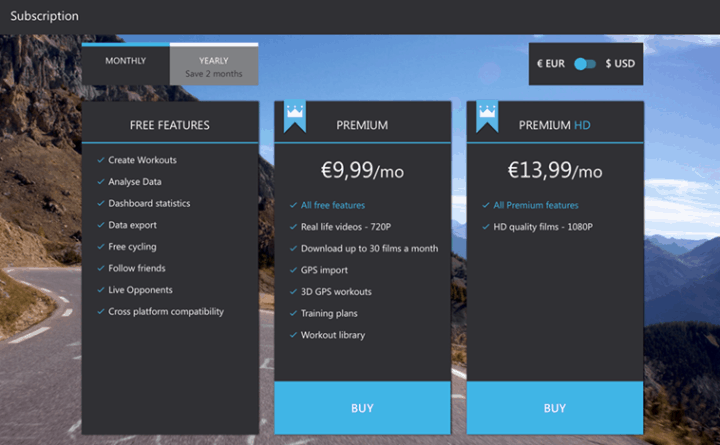
In any case, beyond that, the app works just fine. You ride and it moves the video along perfectly:
You’ve got all the stats you’d expect on the screen in various positions. And you can see below other riders on this course as well.
Now the only other downside here is that they only support Strava for post-workout exports. Not even TrainingPeaks. You can at least e-mail yourself a .TCX file, so it’s not like you’re locked in. But with being over a year now since the Garmin acquisition, I’d have expected you to at least also be able to sync/push a file to Garmin Connect. I mean, even Zwift, TrainerRoad, and others have that.
Look – I think the Tacx app is one of the more well-done user interfaces of the entire list I’ve selected here, at least when you’re in the app. But it also feels a bit unfinished. Many options (like settings above), pop you out to webpages to configure. And the same is true for challenges and other features within the Training Room section. And then there’s that whole low-res streaming thing or the fact that the 3D bits didn’t work for me.
Luckily for you those are all easy things for them to address and fix, and also, it’s free to use right now within a 30-day trial. So you can see if you like it, and if so, then perhaps give that feedback back to Garmin/Tacx on the things that you do and don’t like. For example – as I said above, I really love the ability to be able to start at predefined segments/chunks within the route. That’s super cool. As is the underlying quality of the videos here – nothing matches them in terms of how they were shot and processed. It’s just that I really want to see that. Especially those of us with big-screen TV’s. I’d love to be able to have a Tacx Training App on Apple TV with a 4K option to stream those movies back (just as YouTube, Netflix, and even FulGaz do). And I WOULD pay the extra few bucks for 4K (but I don’t feel like I should have to pay it for 1080p). In the meantime though, I’ll contemplate chasing after one of those swanky free water bottles as part of one of the challenges they have.
TrainerRoad
TrainerRoad sits comfortably as the second biggest cycling app behind Zwift, though, it’s actually older than Zwift. At its core ERG functionality, the app hasn’t changed dramatically over the years. Instead, the company has increased the number of ancillary features (as well as a whole bunch of polish), offering things like outdoor structured workouts and training log functionality. Ultimately, TrainerRoad though is all about executing structured training via specific workouts and heavily curated training plans. They then round that out with everything from season/race build planning, to their enormously popular ‘Ask a Cycling Coach’ podcast, and their always packed forum. While Zwift has ardent fans, I’d argue that TrainerRoad has a bit more cult-like followers (in a good way). Most people that stick with TrainerRoad for a bit, tend to stay there for years. Some do have dual accounts with Zwift however (like myself).
TrainerRoad is available on all major platforms (albeit not Apple TV), and the low graphical requirements make it easy to repurpose an older computer or tablet for the task at hand. Like Zwift, if your trainer (smart or dumb) doesn’t connect to TrainerRoad, then realistically you probably don’t want to be riding it. The company has an entire dedicated lab to working through trainer compatibility with companies.
When you launch TrainerRoad you’re essentially looking at either doing one-off individual workouts from their sprawling library, or, doing a specific training plan. The company includes all training plans in their offerings, and there are three core types of plans: Base, Build, and Specialty. Each of these three categories then has numerous secondary options with different block lengths. For example ones for cycling versus triathlon, or low volume vs mid or high volume:
Once you choose a plan, it’ll then show those workouts for you. Again, you don’t need to choose a plan. For the vast majority of the 8+ years I’ve been using TrainerRoad, I’ve just done ad-hoc workouts. But, if you do choose a plan it’ll start off with a ramp workout to assess fitness, and then go from there:
At that point, plan or not, the experience is the same. Once you crack open a workout you’ll see the workout structure, as well as descriptive notes. It’s this piece that probably sets TrainerRoad apart from most of their competitors. The workouts here all have a very specific purpose. Now, from a coaching theory standpoint one might or might not agree with every workout they’ve designed, but at least they explain their line of thinking and why they’re doing what they’re doing. Also, on the right side you’ll see ‘Workout variants’, which can add/remove time or intensity.
Up above you’ll see the workout wattage and structure of course, which are based atop your FTP. Change your FTP, and the workout pain increases or decreases. At this point you’ll tap ‘Load workout’, and you’re ready to begin. If you haven’t paired your trainer or sensors yet, you’ll do that through the sensors menu. It’s quick and easy and they support tons of smart and non-smart trainers:
Within those menus you can calibrate as well as enable features like PowerMatch, which matches your trainer to your bike’s power meter, so that the wattages will match out on the road. That feature can sometimes be a bit finicky in certain combinations – so I wouldn’t recommend using that on the regular, unless you’ve got a specific significant trainer inaccuracy issue you’re trying to fix.
Back in the workout, I’ll tap start to begin and then I’m off. The app will show your stats, including target wattages, and automatically change the resistance of your smart trainer accordingly. If you need to increase or decrease how hard the workout is, you can do so via the intensity (such as if you’re not feeling good, or if perhaps it’s too easy).
Some workouts have specific instructional text in them with things you’re supposed to work on. While others are silent. In some ways, this all looks simple. And honestly, it kinda is. But that’s also kinda what makes it appealing to people. The ‘just works’ factor is exceptionally high, and the fact that there’s logic and methodology behind it all is appealing to vast sums of people. There’s good reason why TrainerRoad is considered one of the leaders in this space.
Once your workout is done it’ll go to their online training log, plus to 3rd party apps like Strava and TrainingPeaks. Their online training and analysis platform has slowly grown over the last few years, and can pull in outside workouts too. I outlined more of it here. It’s essentially like a mini-TrainingPeaks:
Speaking of outdoor workouts, you can take many of the structured workouts outside. So if you’ve got something on your schedule, there’s options for a lot of them to convert them to outdoor workouts, which tweaks the formatting slightly to make them more viable in a real-world road scenario. Here’s the same workout, at left for indoor, and at right toggled into outdoor mode (which you can then push to a Wahoo GPS computer):
Finally, there’s abilities within the training plans to account for life events like work travel or no-workout days due to family obligations. Again, these sound like little things, but simply put nobody else is doing this kind of stuff. These functions in total ultimately can provide a near-coach-like experience for people trying to plan out and execute their training and racing.
Which isn’t to say coaches aren’t valuable, they absolutely are. And they dispense knowledge and feedback about your workout and its execution that TrainerRoad doesn’t at this point. But if you can’t afford a coach, or if it doesn’t fit into your preferences, this is a pretty good step.
The final reason they’ve got a cult-like following is their weekly ‘Ask a Cycling Coach’ podcast where they dive into all the nuances of training and racing with questions from users, and overwhelmingly deep dives into nuanced cycling topic areas. Plus their forums, where users trade tons of knowledge. Again, these might sound like things you skim over, but as any regular TrainerRoad user will tell you – the amount of knowledge in those two areas about how to actually get faster is astounding.
Still, the challenge TrainerRoad faces is the fact that it took me about 18 paragraphs to explain how extensive the platform is. The secondary problem they face is there isn’t much instant gratification at this point. Compared to riding in Zwift which is visually mind-grabbing as well as has a social training and racing element, TrainerRoad is just staring at numbers on a screen. Now, as many of you know – I personally like that. But I’d love to see TrainerRoad figure out how to increase their social interaction on the platform for those that want it. Whether it be recorded workouts by a handful of coaches, or ways for users to interact with each other.
Nonetheless – if you’re looking for a way to get faster in racing through science-backed training and structures, then it’s hard to beat what TrainerRoad is offering. From the singular workouts all the way up to training plans that can be tweaked on the fly to deal with life events, the depth of what they have as a platform might be hard to see until you spend time with it. But it’s there, you just gotta invest the sweat.
Xert:
In a lot of ways Xert is unlike any other app on this list. It’s both a training app as well as a complete training log platform. Yes, TrainerRoad has some training analysis/logging, but Xert takes it to an entirely different level. Xert would see themselves (rightly so) more as a competitor to TrainingPeaks than anything else. But, they also see their entire indoor training app as critical to that. It’s also the only app on this list that dynamically adjusts the workouts in real-time based on your progress through it.
It’s also the only app on this list that’s dynamically adjusting your FTP after every workout you do, no matter the source and without an FTP test. It just happens behind the scenes by looking at your actual data. See, you can hook-up your account to Strava, Garmin, Wahoo, and others, and it’ll swallow all your data constantly behind the scenes and ensure that whatever trainer ride you do exactly matches your current fitness level. It’s super cool, and I’ve written about the platform side in the past here.
[Note: For this review section I’m using the new user interface which is set to go live any day now. I’ve used and pay for Xert for years, so I’m pretty familiar with how things work on the whole regardless of the new interface, but just figured I’d mention that to reduce confusion here until this is rolled out.]
But, this post isn’t about training platforms. It’s about trainer apps. Now in this case the company has an iOS and Android app, but not an iOS one optimized for iPad. They’ve also got a desktop variant too that you can actually run from a webpage. Pretty cool. In my case, I just used the iOS one on iPad anyway. Once you crack it open, you’ll see your current history on the lower left tab, as well as some period stats on the aptly named ‘stats’ tab.
Next, there’s a workout that’s ready for me. It did this automatically as a recommendation, deciding what it believes is the best workout for my current situation. When I tap it, I can see a little bit more detail about the workout, including the MPA line in purple – which is showing me my maximal power available. MPA is a core metric in Xert and is kinda like Street Fighter health. If you do a hard sprint, your ability to keep on sprinting at 800w or 1,000w decreases over time. Specifically that you can’t do that forever, and you see that below. Additionally, a significant effort will reduce your viable MPA over the rest of the workout.
Alternatively, you can pick a different workout. The ones that have the words ‘Smart’ next to them are ones that are dynamic in nature, as we’ll see in just a second. At that point, go ahead and pair it up to your sensors. Trainers, heart rate sensors, etc. – all the usual stuff you’d expect here.
Now, once we hit start we’ll get right into things. The top 1/3rd of the app has multiple pages you can swipe through, but the remainder largely stays as-is. If you look at these first two mini-pages, you’ll see an overview of the workout, as well as my average power at this point in the workout (a mere 30 seconds into it.)
The next two mini-pages include a graph of effort and then available MPA, and then followed by that is the schedule of events in text format. In other words, what’s coming up split-wise and power-wise, plus the estimated MPA available.
The workout will iterate through, automatically adjusting the power on your train accordingly. You can skip or go ahead in an interval by pressing the VCR-like buttons above. Or you can adjust intensity by pressing the +/- buttons. You can see your target and actual watts.
However, the key thing that separates Xert here is their smart workouts, which are dynamically adjusting. And as it would turn out (unexpectedly), this feature demonstrated itself perfectly to me. See, the day before I had done two hard interval workouts…one of them finishing up at midnight…followed by only a handful of hours of sleep.
Xert in theory knows what my targets should be, based on my bike efforts. But it doesn’t at this point know my body state. So in some ways it was a bit optimistic. But how it changes mid-workout is pretty fascinating.
So, my warm-up and such went just fine, and then some light build, also just fine. And then it went into the first hard interval – which was targeted at 673w for 36 seconds. However, reality struck and my body (and legs) basically said ‘No’. About half-way through the interval things fell apart. Just wasn’t going to happen. However, as my failure occurred, you could see the app adjusting the intensity of the interval to try and give me a new realistic target.
I didn’t have a series of screenshots for that, because…umm…I was trying not to die.
Instead though, for the next interval I screen recorded. This one was earlier on targeted for 25 seconds at 592w (seen left in the list at the top of the screen). However, as soon as I start the interval you’ll see the actual duration has been cut to 18 seconds. Atop that, shortly into the interval it then reduces my target watts a bit further.
Now, some of you might say ‘Well, maybe you could have made that interval with a bit more push?’, maybe the app cut me off too early? And perhaps in some cases that could be true. Having used this feature occasionally over the years, I find it seems to do a good job at figuring out what’s viable vs not viable. So why would it have scheduled me to do something I couldn’t have done?
Well, there’s likely two reasons. First is that I had recorded on multiple devices that ended up syncing into the app that I hadn’t gotten rid of yet – so it thought my load was higher than reality (and thus my capabilities). But realistically, I probably could have hit that interval set…if I had more than 3-4 hrs of sleep the night before and hadn’t been doing 1-2 trainer workouts a day for the last 7-10 days doing app testing. My body is shot, and this was basically the final straw.
But I think it’s just so cool to watch it all happen in real-time. It’s almost like having a coach on the sidelines yelling at you to concurrently keep it up, while adjusting the goal to something realistic.
Finally, it’s worth noting that you can actually take Xert workouts and export them to Zwift ZWO files, so you can blend this platform as the backend for your training, but execute things in Zwift. You won’t get the dynamic smarts changing aspect of doing it within the Xert Workout Player, but you do get the customized targets based on the data you upload into the Xert online platform.
Xert is cool stuff, and I think using it as a trainer app makes sense for folks that want a full training platform for their workouts. Meaning, I don’t think there’s going to be too many people that just use Xert by itself for their trainer (though, absolutely you can, their workout library rivals many apps here). Instead, I think the key benefit of Xert is using their training platform to consolidate all your workout data into, and letting it drive your workouts and the associated intensity and structure around it.
Zwift:
With somewhere in the 300K subscriber range, Zwift is the largest of the indoor training platforms (save Peloton, which sits at over 700,000 subscribers). But that’s Peloton users with a bike (app-only is much smaller at ~110,000 users), versus Zwift and the other apps here work with any device. I recognize that like McDonald’s or Subway, most of you know what Zwift is, and if you do – you probably won’t learn much from this section. That’s why there’s 10 other sections to read.
Zwift is a massive online cycling sports game and training app. I use the term game, because Zwift does as well. Gamification is part of it, though, not inherently required to enjoy it. You can ride Zwift entirely in your own little bubble ignoring virtually all gamification aspects if you wish. But ultimately, it’s the social nature of seeing thousands of other riders buzzing around you that brings Zwift alive. There are no bots here or fake riders, everyone you see is real [Update Sept 2020: There are now bots. Four, to be precise. Basically acting as group rides. It’s actually cool.]
With that, there are at present six worlds within Zwift. Most of these are modeled after real places (like Innsbruck, Yorkshire, Richmond, New York City, and Bologna TT course), while the expansive ‘Watopia’ is a fictional island that includes a variety of terrain, some of it replicating real-world locales (notably, Alpe d’Huez). You can always ride Watopia, and then each day one of the other worlds is offered as a ‘Guest World’. You can further use various hacks/workarounds to ride any world you want anytime. The idea being to ensure that each world has plenty of people riding it. The app connects to every smart trainer or dumb trainer on earth. If a trainer doesn’t work with Zwift, you don’t want to be riding it.
When you choose your world for the day, you can select a given route, or you can free-style it. In either scenario, you can always use the smartphone companion app or a keyboard to change directions to different roads. On some courses there are just a handful of roads/routes (like Richmond, Yorkshire, or Innsbruck). Whereas with Watopia, you could probably ride for probably close to a day without repeating a route. Here’s a listing of all worlds and all routes.
In addition to choosing a world, Zwift also offers both structured workouts and training plans. These can be selected from within the menu. There are boatloads of workouts, though the app doesn’t really have good filtering. For example, you can select a time-duration, but that won’t actually pull all the workouts from within the training programs. So basically, you see a tiny fraction of the available workouts. When it comes to training plans, they often lack cohesion and specificity, especially compared to TrainerRoad. Still, you can usually find something in there to keep you busy, and like most training plans – doing almost anything for weeks or months at a time will make you stronger.
However, some of the 3rd party workouts are better, but again, they don’t show up in the plans section (despite being plans), so it doesn’t automatically prompt you to ride it on the correct day of the week like the plans do. Also, for lack of anywhere else to put it – the companion app’s structured workout controller is really quite good.
With that, into the game we go. The resistance on your trainer is controlled by Zwift (assuming a smart trainer). As you go up climbs, it’ll change the resistance accordingly. Your speed in the game is normalized across all competitors using your weight. It’s critical your weight is inputted correctly, so that the correct watts/kilogram can be computed. That one sentence alone has piles and piles of pieces written about it. You’ll see others riding around you, though larger group rides and races aren’t always shown to prevent the game from being visually overloading (primarily on your computer’s graphics processor).
Speaking of which, you can run Zwift on basically any platform. I personally run it almost exclusively on Apple TV. Save the occasional iPad session. I think Zwift on Apple TV is probably the best bang for the buck out there today. The ‘just works’ factor is usually pretty high, and the graphics using the Apple TV 4K version are more than fine for me (note: even if you don’t have a 4K TV, get the 4K variant for the extra $20, it’s got substantially more graphical power inside). The screenshots below are all simply Apple TV 4K (whereas the one above is from my iPhone):
When it comes to group rides or races, anywhere from 50-150+ events per day depending on all sorts of factors (recently, boatloads). Numerous per hour, which you can easily look-up using the Zwift companion app, or a pile of 3rd party sites. Generally speaking, group rides stick together and have defined leaders and pace groups – just like in the real world. Whereas races hurt just like they do outside, again, with various categories based on your FTP.
I occasionally do both group rides and races, though as you’ll quickly learn in Zwift – it’s rarely about trying to win, and more about getting a good workout that keeps you driving forward. The social element of knowing you’re racing or riding against a real person versus a bot is a key differentiator here. As is the fact that you can attempt to use your phone or keyboard to chat in real-time with people.
Oh – and there’s even mountain biking too. Albeit, it’s only about 7-10 mins long, but undoubtedly we’ll see it expand.
And atop that, there’s running too. I know, most of you reading this probably aren’t runners, but still, it’s there for ya. And the new track is pretty cool.
When it comes to indoor cycling apps, Zwift is clearly the big dog within the serious cycling realm (again, Peloton put slightly aside for a moment). And for the most part, Zwift does an exceptionally good job at both driving and supporting the community, as well as offering numerous ways to keep yourself busy. Whether that be in a structured ‘Tour of Something’ type event series that’s always going on, or via structured workouts. Heck, even runners can plod along in Zwift. But you don’t need to be part of some overarching series or event, you can just jump on and ride – which is often how I use it.
The challenges Zwift has are common to almost any massive online gaming platform – the more people you get in, the more obvious some of the cracks become. Cheating continues to be a legit and real issue for Zwift racing, though they are taking steps to address that. Some people won’t care about that, and that’s fine. Zwift also tends to prioritize social & marketing advancements over technological ones. You’ll generally see almost every other app on this list roll out new technology/trainer support before Zwift, and usually do it in a smoother/better way too. Hopefully Zwift’s newly formed hardware group will try and address that longer term.
Still, it’s hard to beat Zwift. The user interface is simple and easy to use, and there’s always something going on. It’s like walking into a carnival – you might not know what you want to do or your plan is when you walk through the gates, but by the end of your stay you definitely did something. There’s a bit of something for everyone, it’s up to you what to make of it.
Finally, the best resource out there for all things Zwift is ZwiftInsider.com. If you’ve ever wondered about something, and then thought ‘Why am I wondering about this?” – then ZwiftInsider likely has more detail than you ever initially wondered about.
Favorite Trainer Accessories:
People always ask my favorite trainer accessories, and these are the ones that I use most frequently/daily. I’m a simple person in that respect, I typically don’t need the fanciest versions of these things. I’m happy with a $10-$20 trainer mat, a $7 front wheel block, and the cheaper trainer desk. Also, I’ve been using that fan listed below for a few months – both the US variant (Lasko), and the EU/UK variant (Vacmaster). If you’re in the UK/EU, you’ll get the correct one when you click on it automatically.
| Product | Amazon | Note | |
|---|---|---|---|
 | Apple TV 4K 64GB WiFi (2022) | Amazon | There's no better bang for your buck in getting Zwift (or FulGaz/etc) on your big screen TV than Apple TV - it's the primary way I Zwift. |
 | Basic Trainer Mat | Amazon | This is a super basic trainer mat, which is exactly what you'll see me use. All it does is stop sweat for getting places it shouldn't (it also helps with vibrations too). |
 | Elago R1 Apple TV Remote Silicone Case with Strap | Amazon | I use Apple TV for Zwift the vast majority of the time, but also just for watching YouTube/Netflix/etc on the trainer. The Apple TV remote sucks though. This $8 case fixes that, it's a silicone strap that makes it easy to grab, but also has a strap to easily place on the edge of your handlebars. Boom! Note: Not compatible with 2021 Apple TV Edition. |
 | Front Wheel Riser Block | Amazon | Here's the thing, some people like front wheel blocks, some don't. I'm one of the ones that do. I like my front wheel to stay put and not aimlessly wiggle around. For $8, this solves that problem. Note some trainers do come with them. Also note, I use a riser block with *every* trainer. |
 | Honeywell HT-900 Fan | Amazon | I've got three of these $12 fans floating around the DCR Cave, and I frequently use them on rides. They work just fine. Sure, they're not as powerful as a Wahoo Headwind, but I could literally buy 20 of them for the same price. |
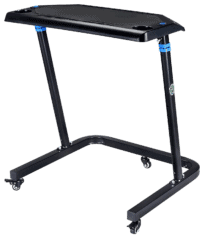 | Indoor Cycle Trainer Desk (RAD/CXWXC/Vinsetto/Conquer/etc...) | Amazon | This desk is both a knock-off of the original KICKR Desk, but yet also better than it. First, it's got wheel locks (so the darn thing stays put), and second, it has two water bottle holders (also useful for putting other things like remotes). I've been using it as my main trainer desk for a long time now and love it. Cheaper is better apparently. Note: Branding varies by country, exact same desk. |
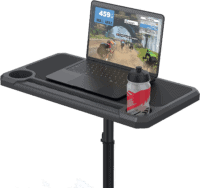 | KOM Cycling Trainer Desk | Amazon | This is by far the best value in trainer desks, at only $59, but with most of the features of the higher end features. It's got multi-tier tablet slots, water bottle holders, non-stick surface, adjustable height and more. I'm loving it! |
 | Lasko High Velocity Pro-Performance Fan (U15617) | Amazon | One of the most popular trainer fans out there, rivaling the Wahoo Headwind fan in strength but at a fraction of the price. It doesn't have smartphone/ANT+/Bluetooth integration, but it does have secondary outlets. I've been using it, and a similiar European version lately with great success (exact EU variant I use is automatically linked at left). |
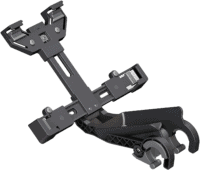 | Tacx Tablet Bike Mount | Amazon | I've had this for years, and use it in places where I don't have a big screen or desk, but just an iPad or tablet on my road bike bars. |
Wrap-Up:
Phew, I made it. Or, we made it. I don’t know – it’s time for ice cream.
Here’s the thing – different people want different types of apps, or even different implementations. Someone who loves Zwift might hate The Sufferfest. Or someone who loves Kinomap might dislike Rouvy, despite being similar apps. You really just need to play the field a bit and try apps, perhaps apps you hadn’t considered. If you like Zwift, then give RGT a go. If you like TrainerRoad, then you might like The Sufferfest. If you like the coached elements of The Sufferfest, it’s actually quite likely you’ll like the power zone workouts of some Peloton instructors. And if you like the Tacx Training App, then you’ll probably like FulGaz.
To that end, what I like personally isn’t super important. My criteria for the apps I use are both more simplistic and probably a bit geek laden. The two main apps I use year-round are Zwift & TrainerRoad. They’re my go-to’s. My next favorite apps I wish I used more would be The Sufferfest and FulGaz – I think both of those have nailed execution. I also use Peloton weekly, but on a Peloton Bike, which is much more data-laden (and then better to me), than the Peloton app. But again, that’s just me.
If you found this whole beast of a round-up useful, that’s great! That means I can avoid doing one for at least another 2-3 years, right? But seriously, if so, this took waaaaay more time than I thought it would. Even sorting, consolidating, and inserting just the photos into this post took over 6 hours. So if you did find it useful – hit up the links on the sidebar (such as Amazon) or consider becoming a DCR Subscriber. I appreciate it!

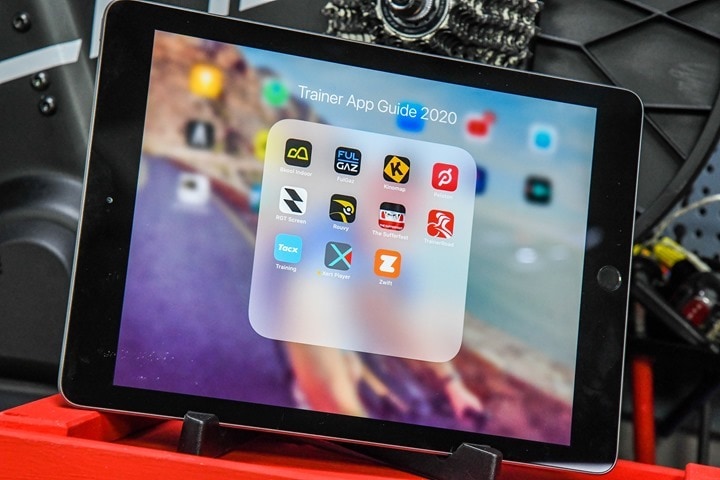
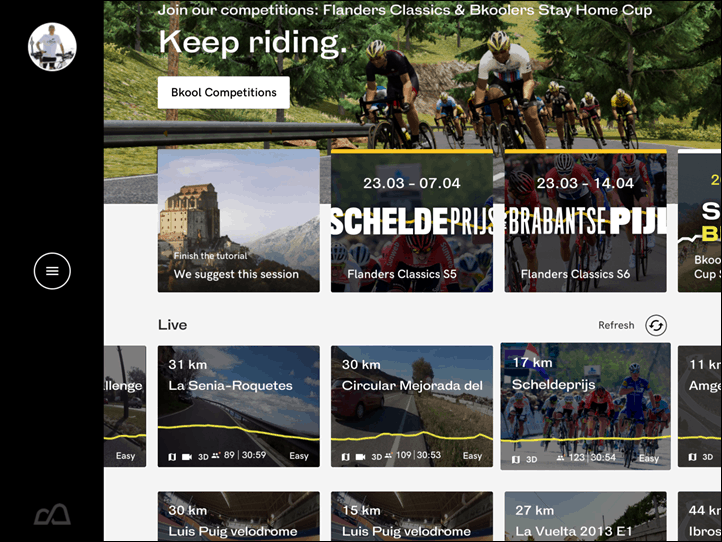
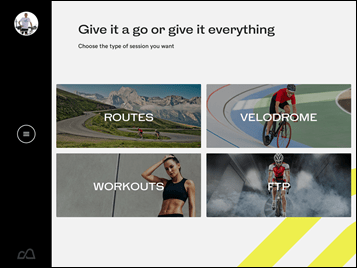
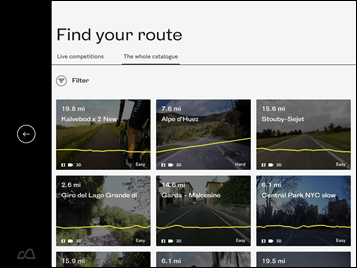
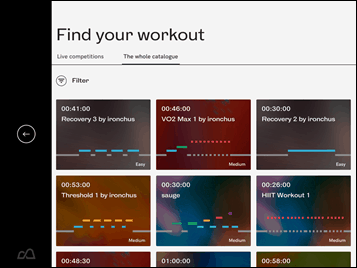
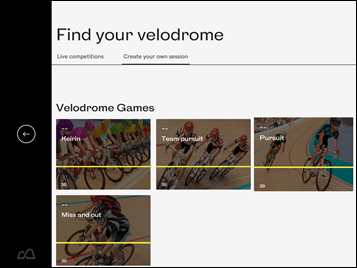
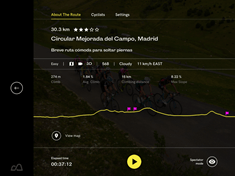
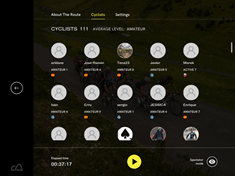
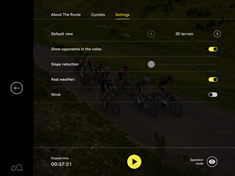
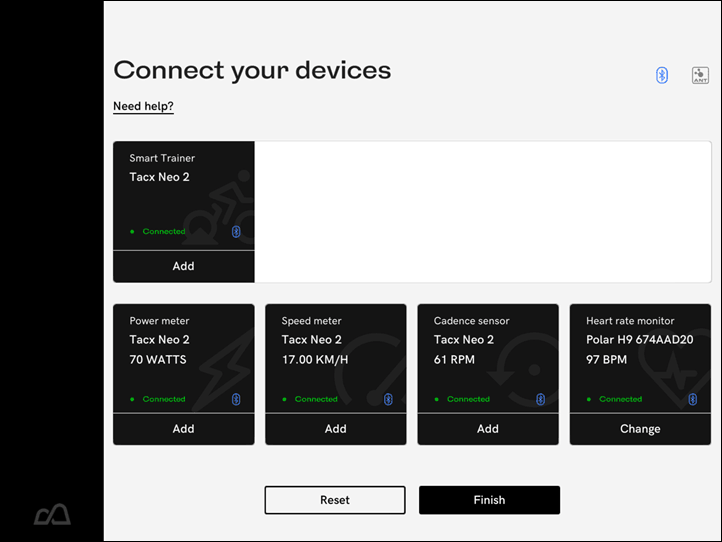
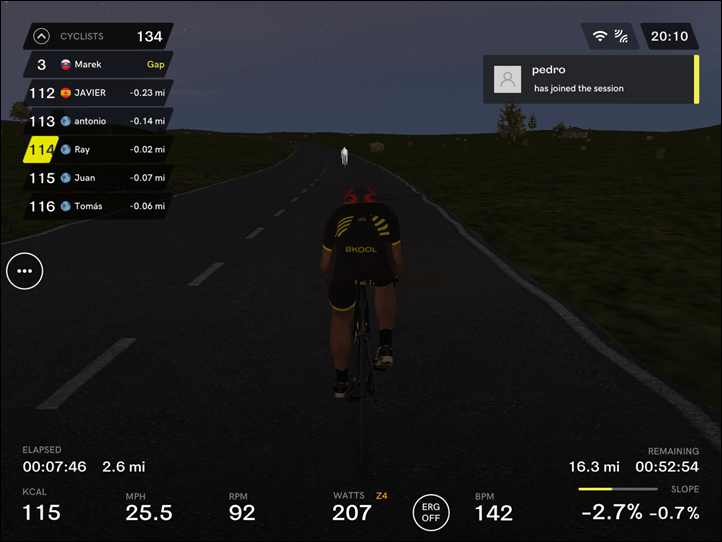
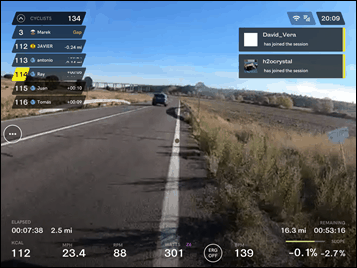
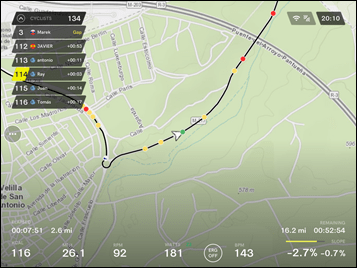
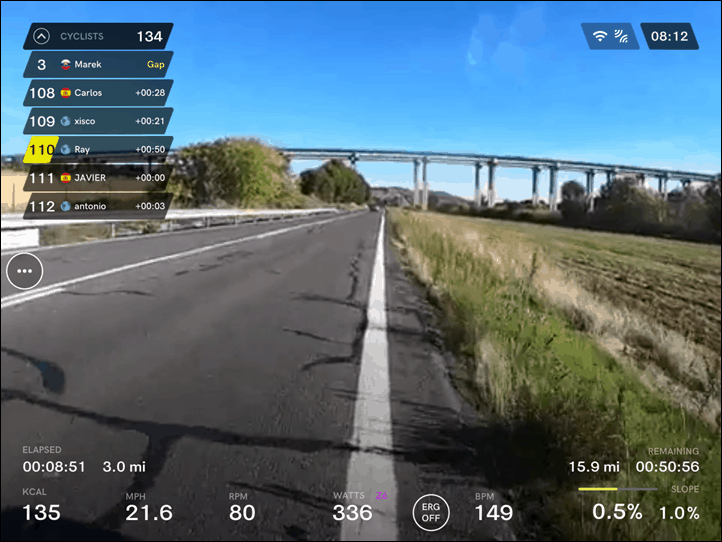
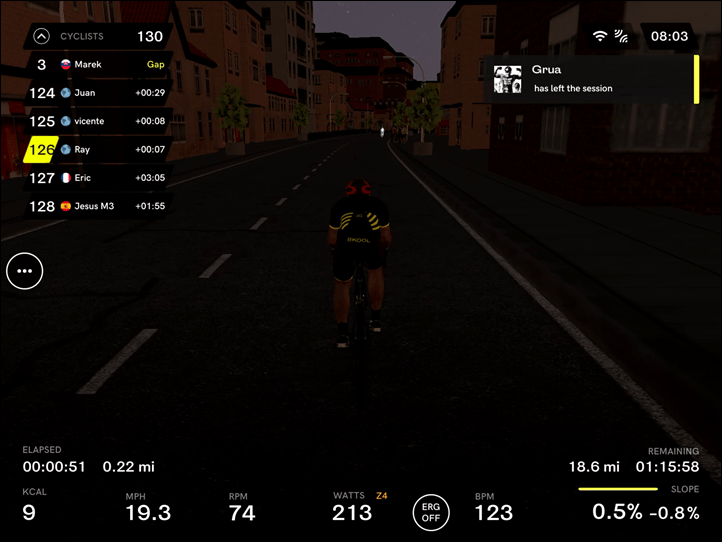
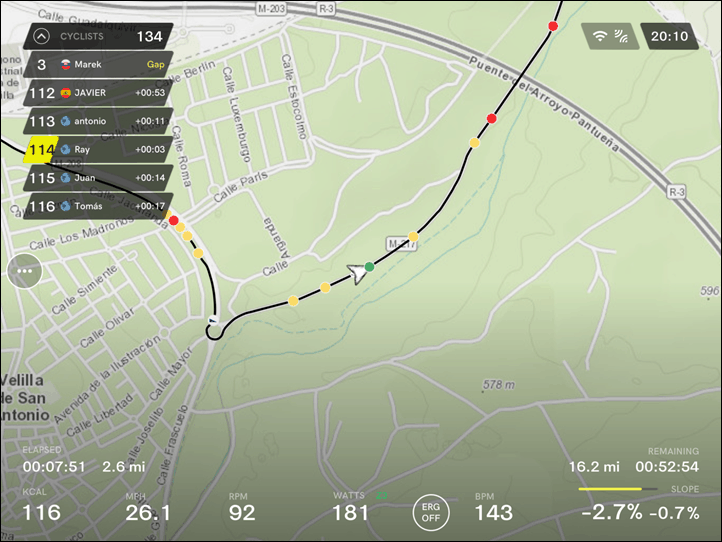

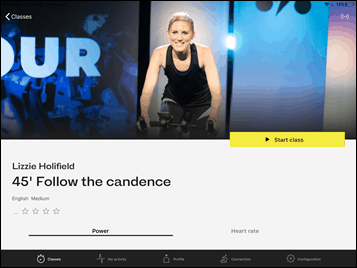
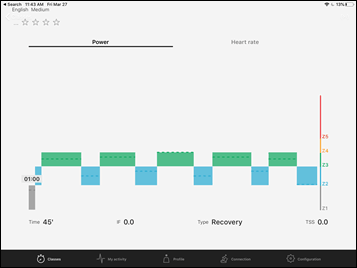
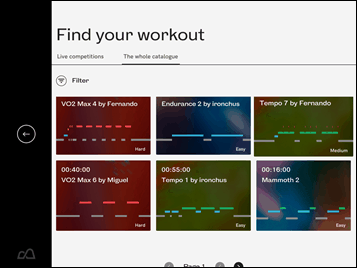
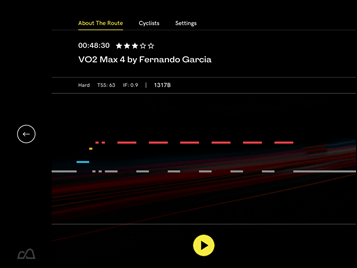
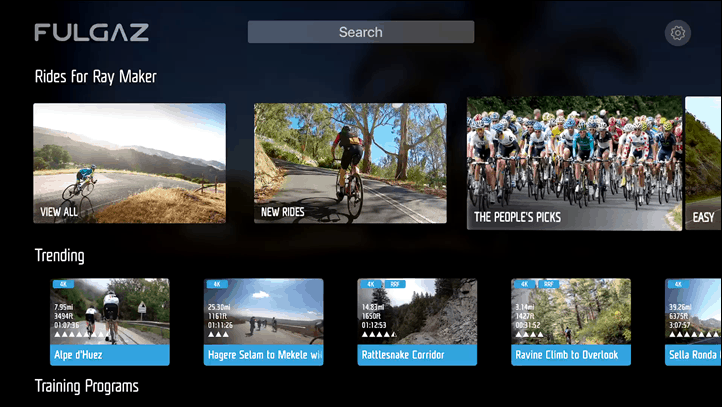
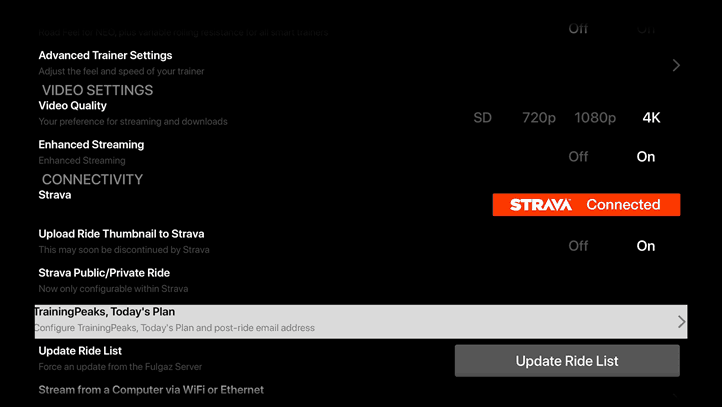
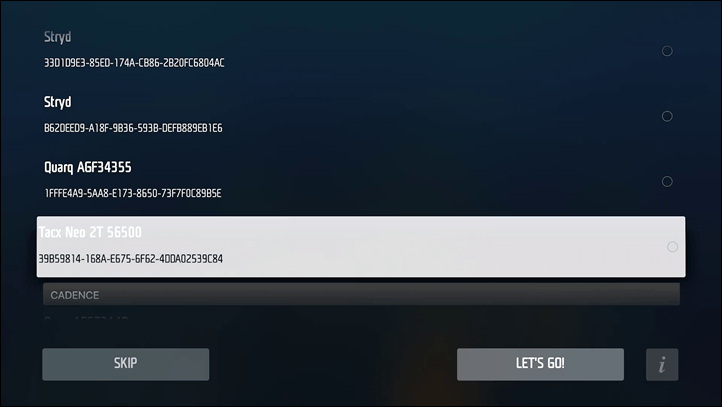

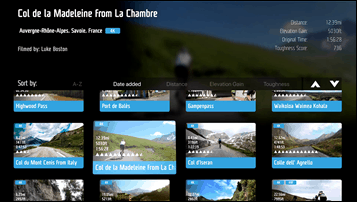
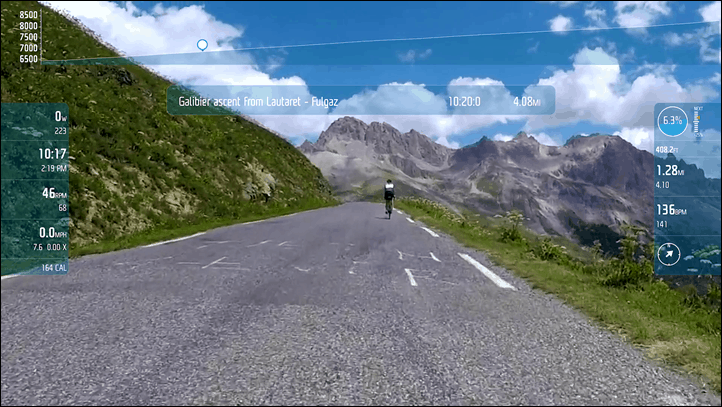
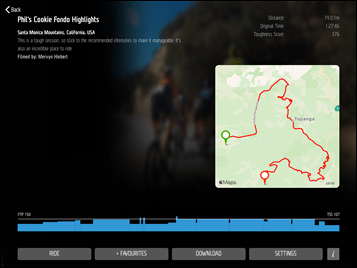
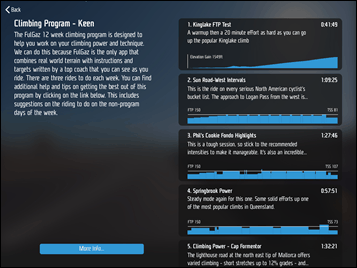
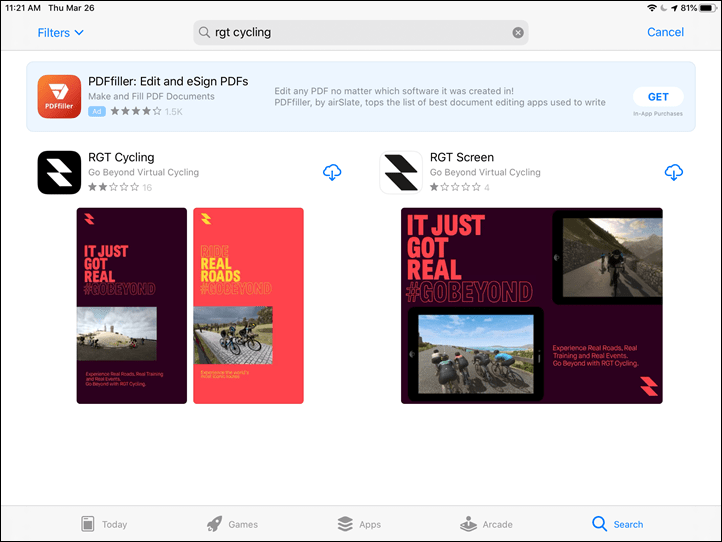
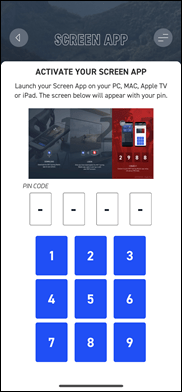
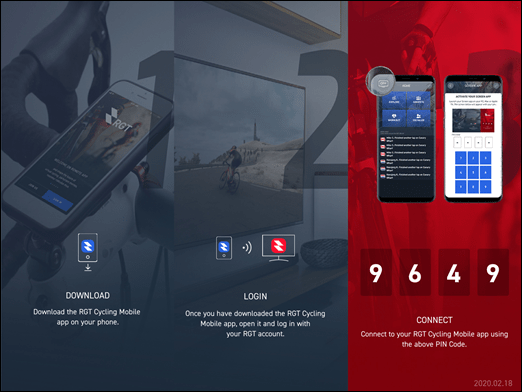

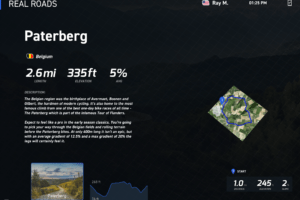
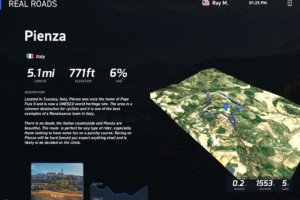
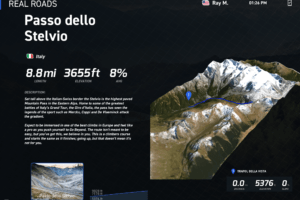
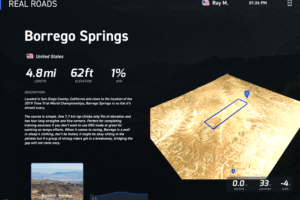
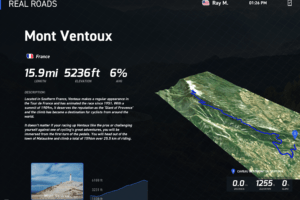
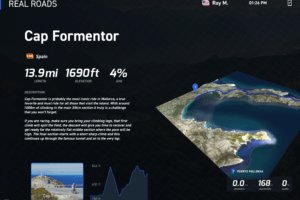
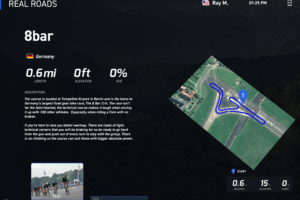
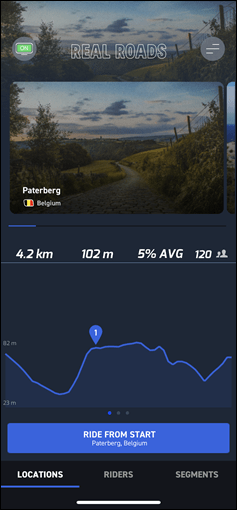
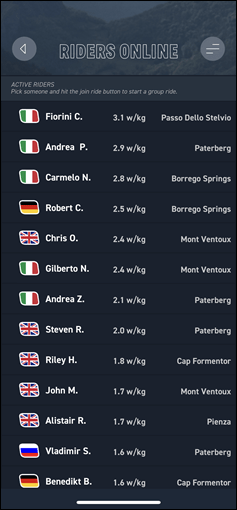
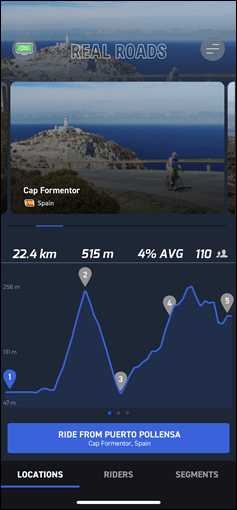


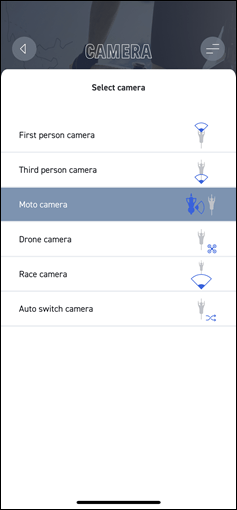

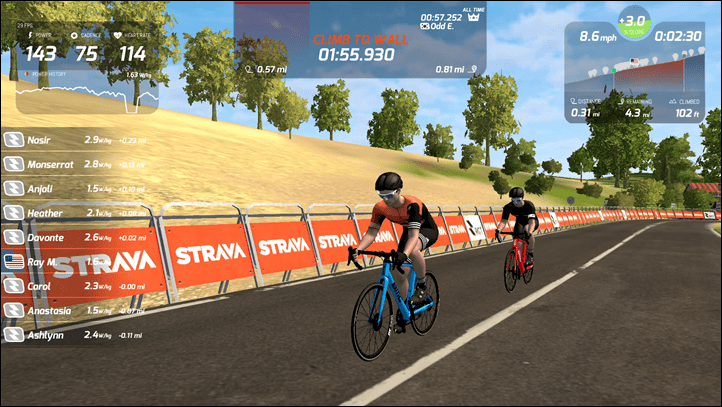
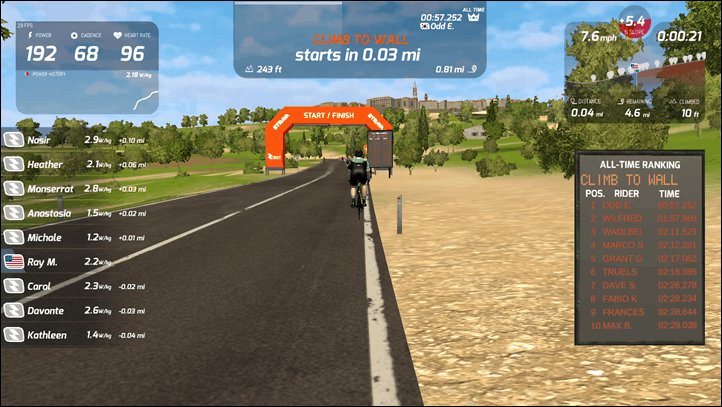
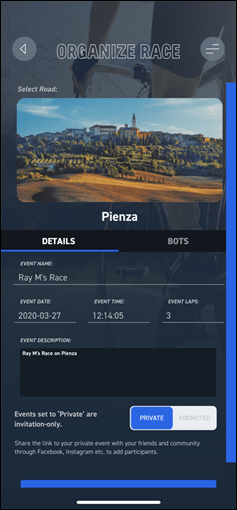
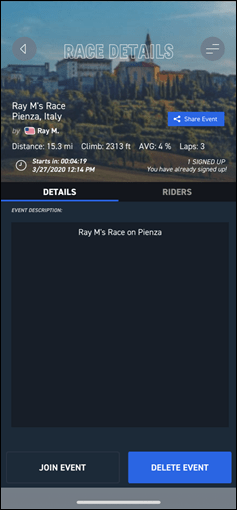
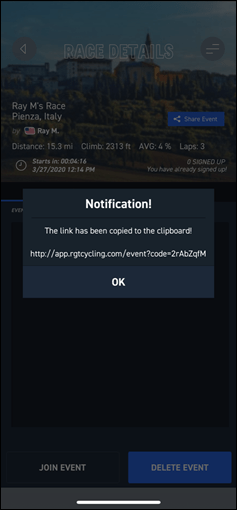
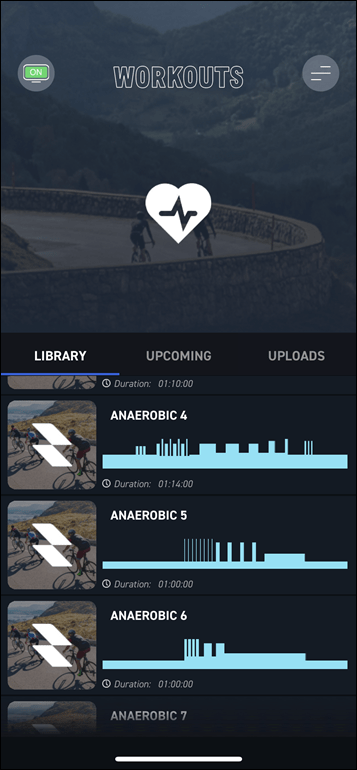

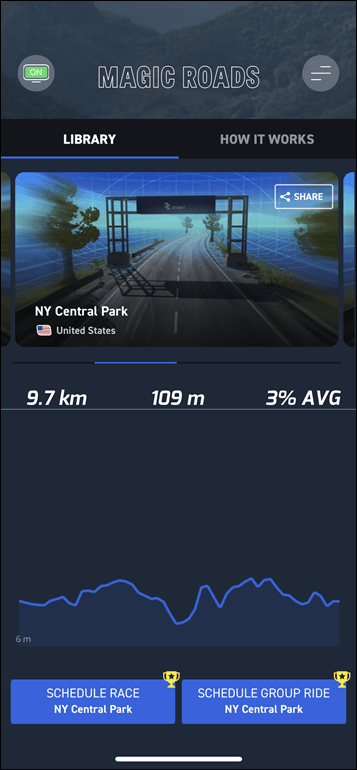
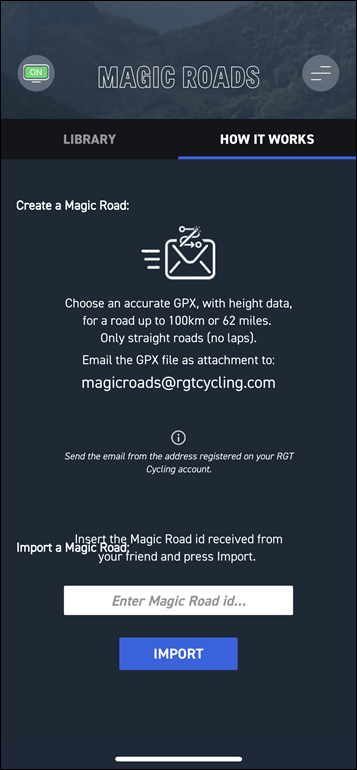
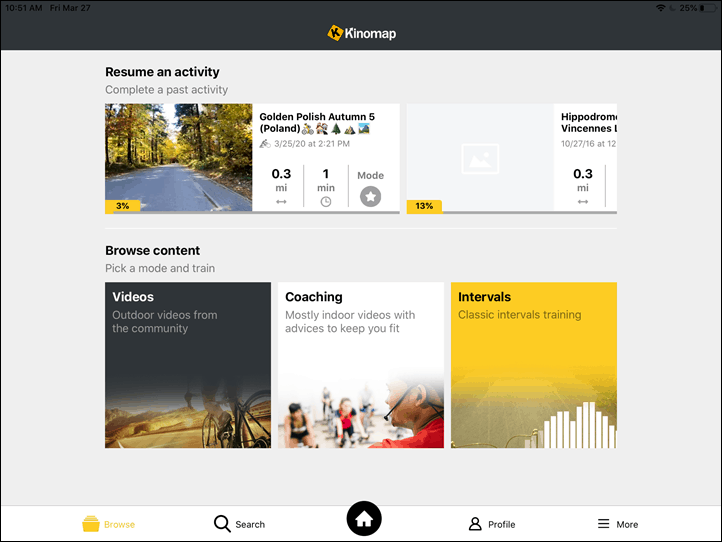

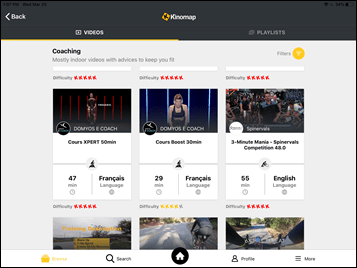

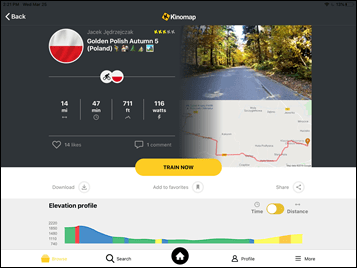
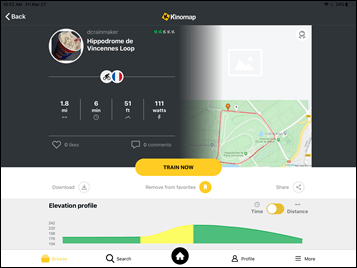
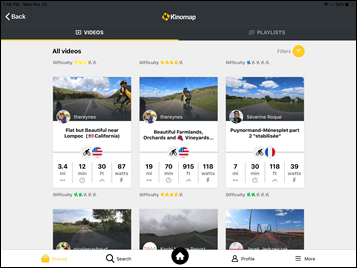
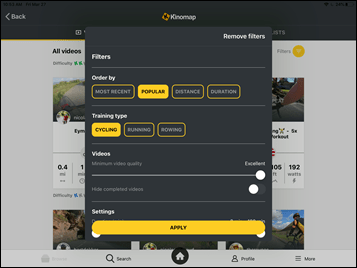

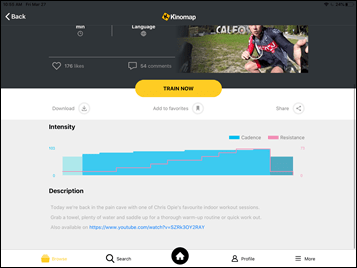
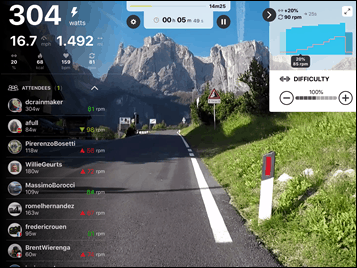
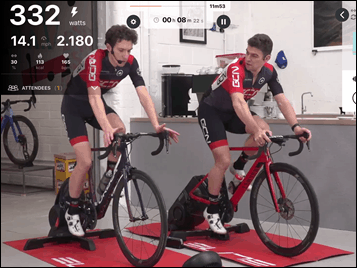
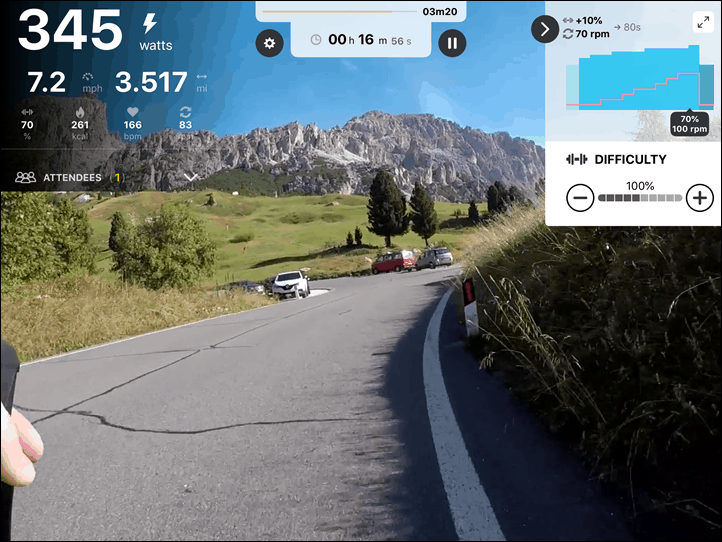

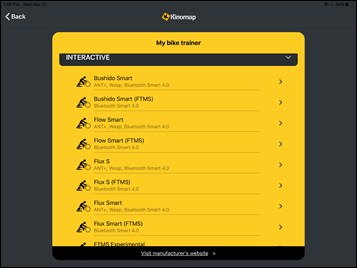
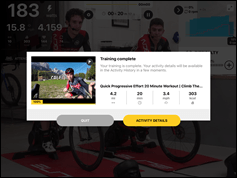

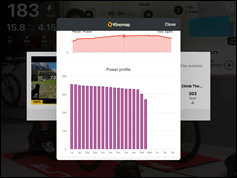
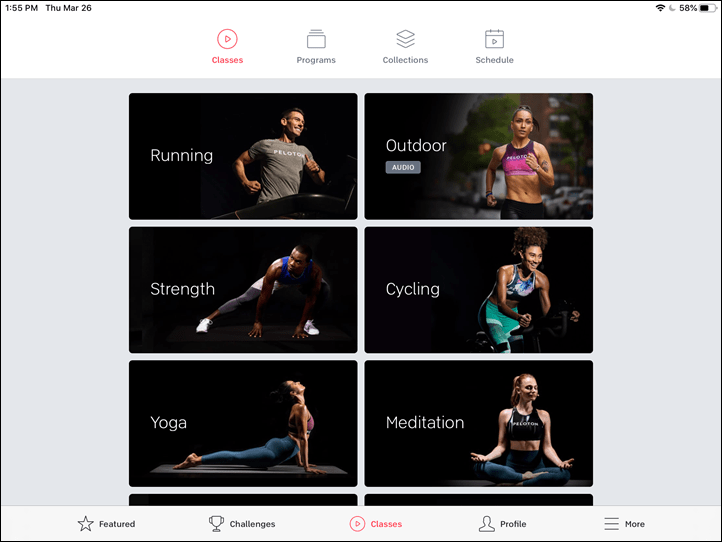
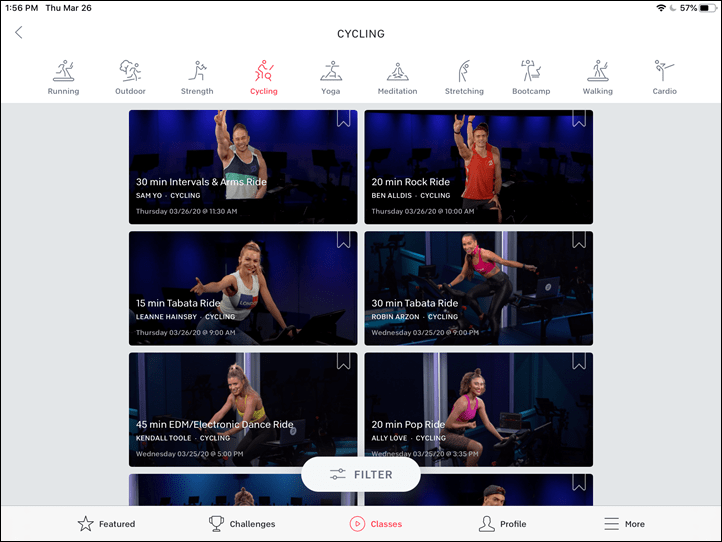
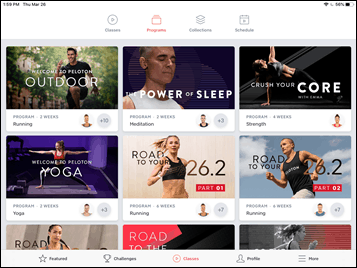
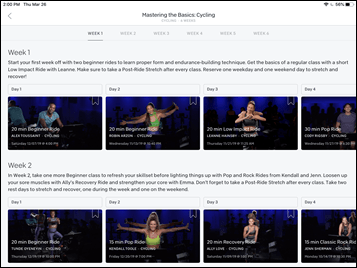
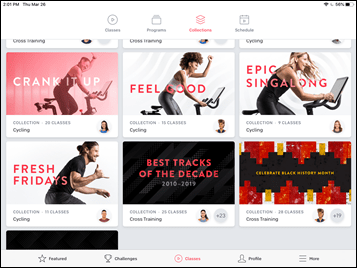
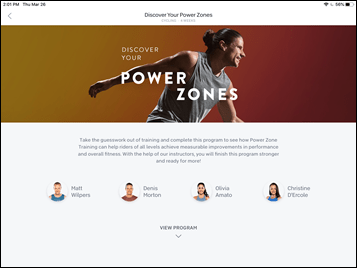
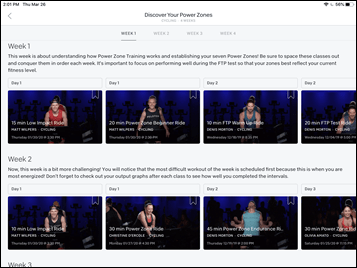

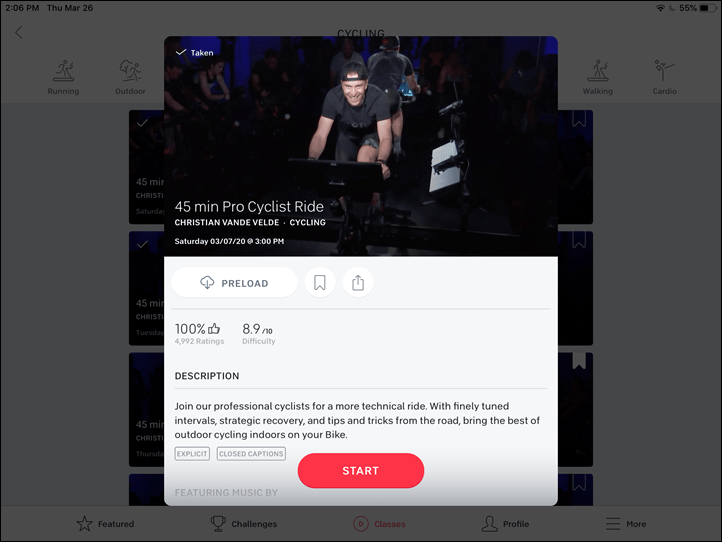
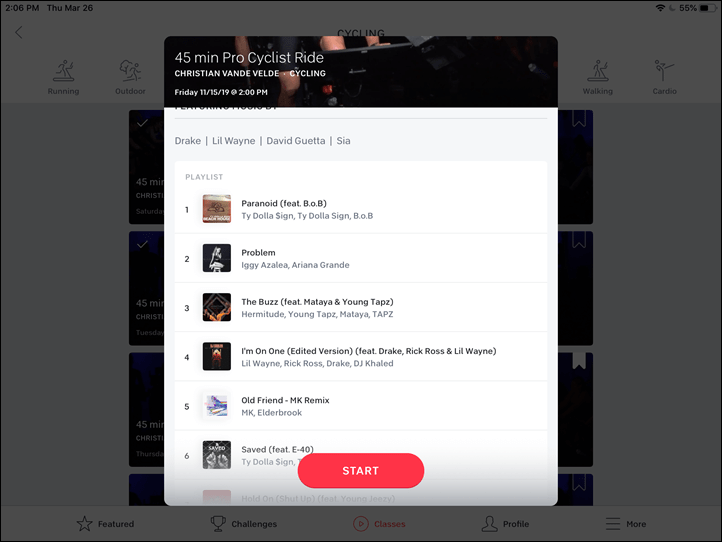

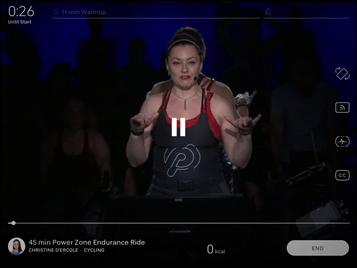

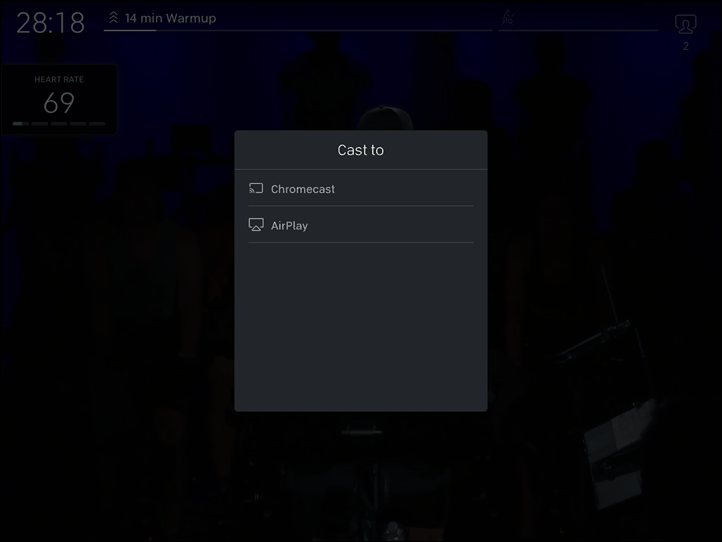
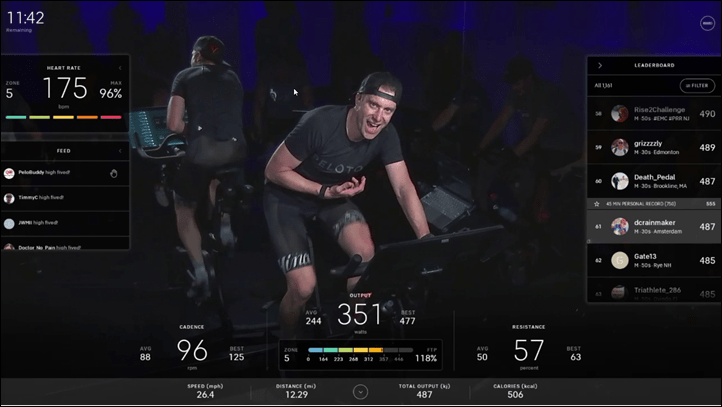
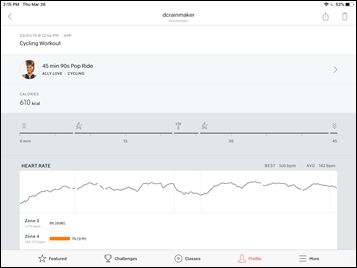

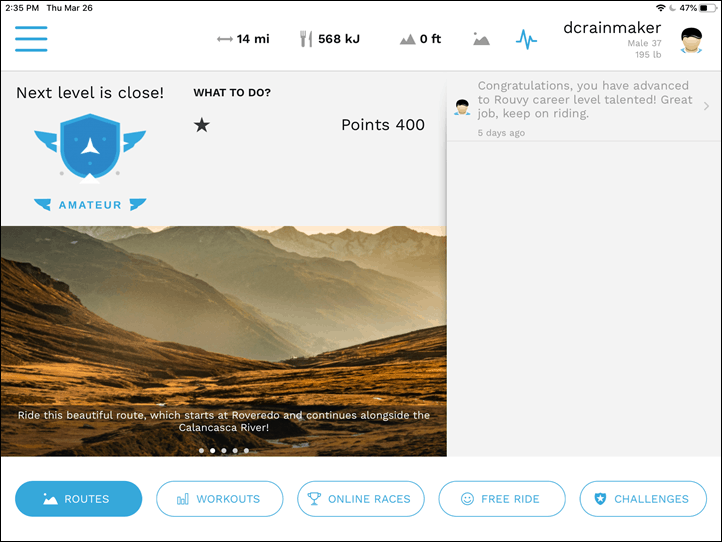

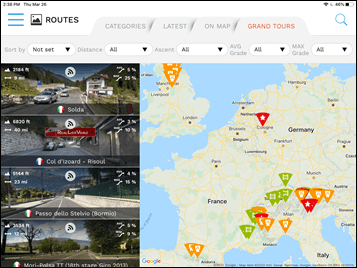
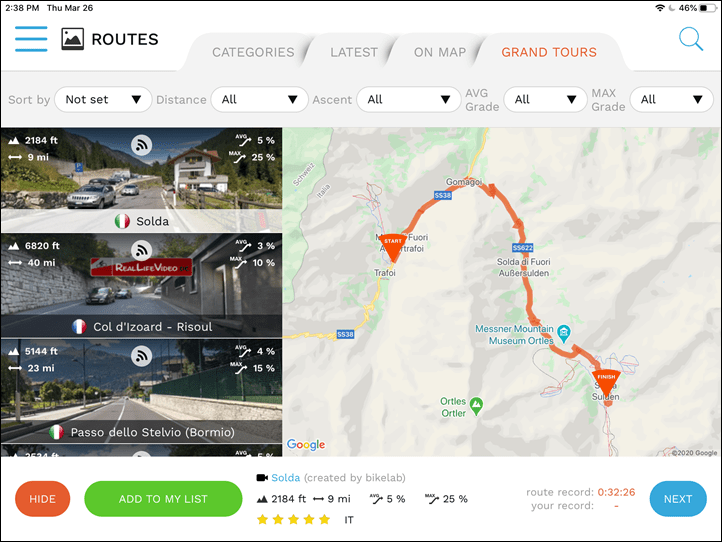
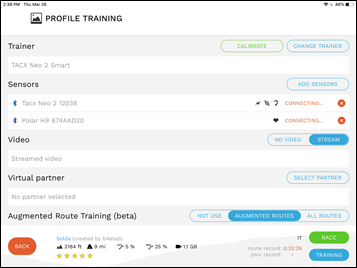
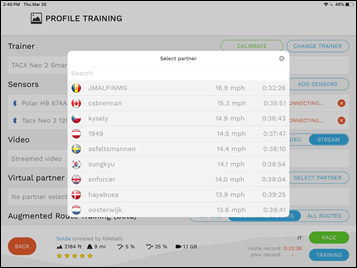

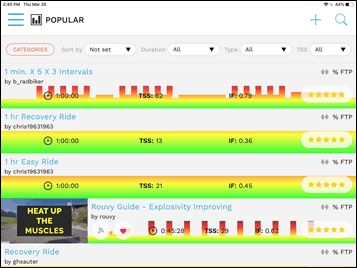
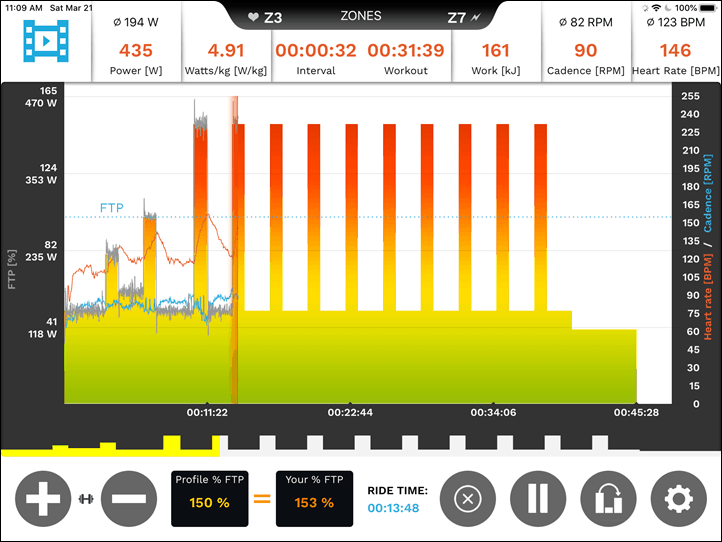
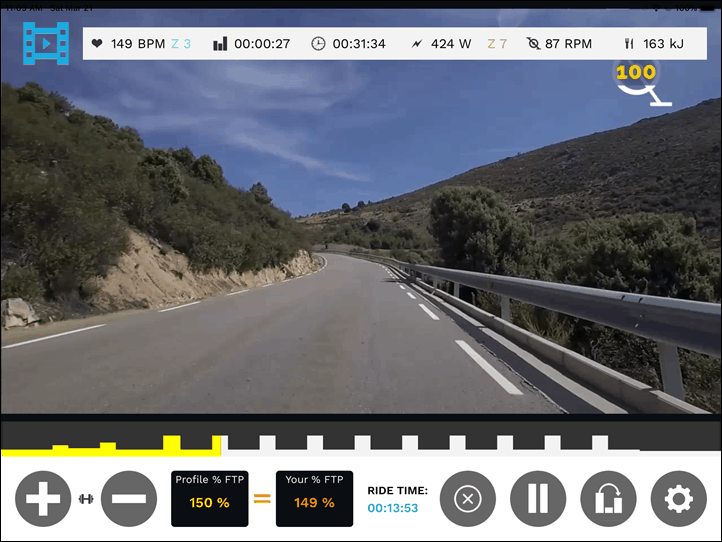
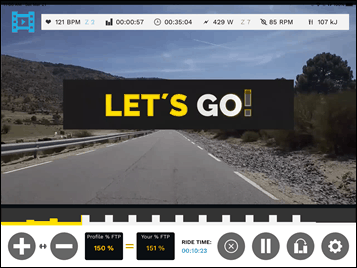
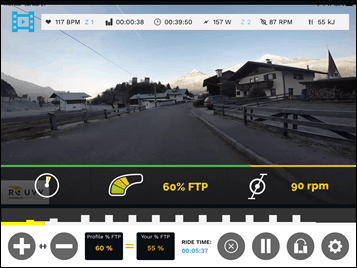
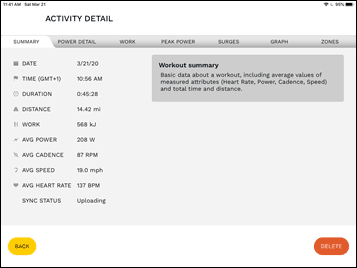
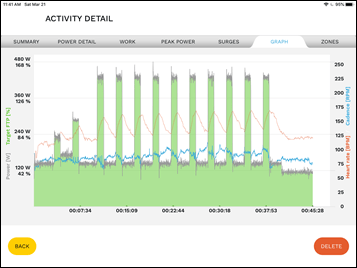
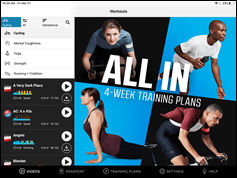

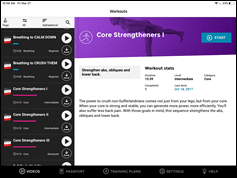

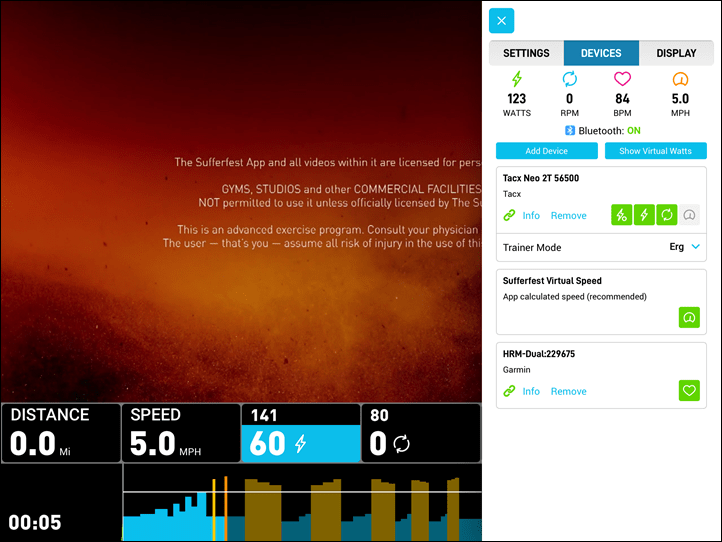
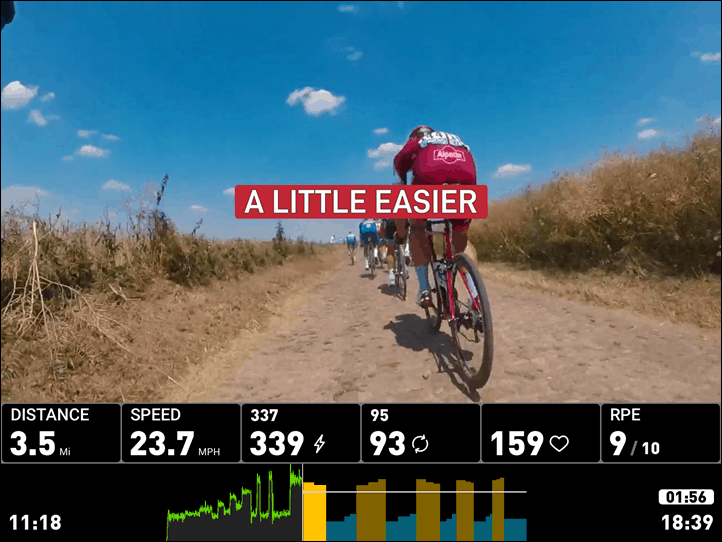

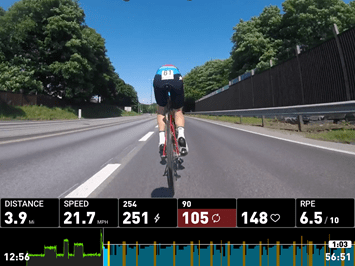
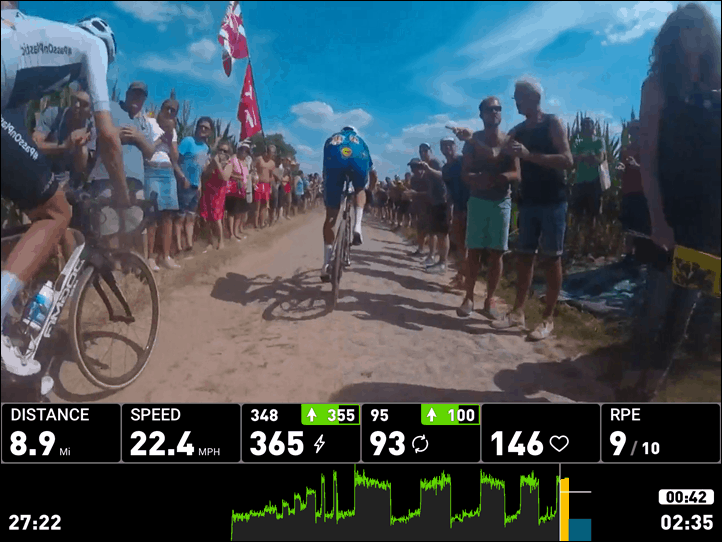
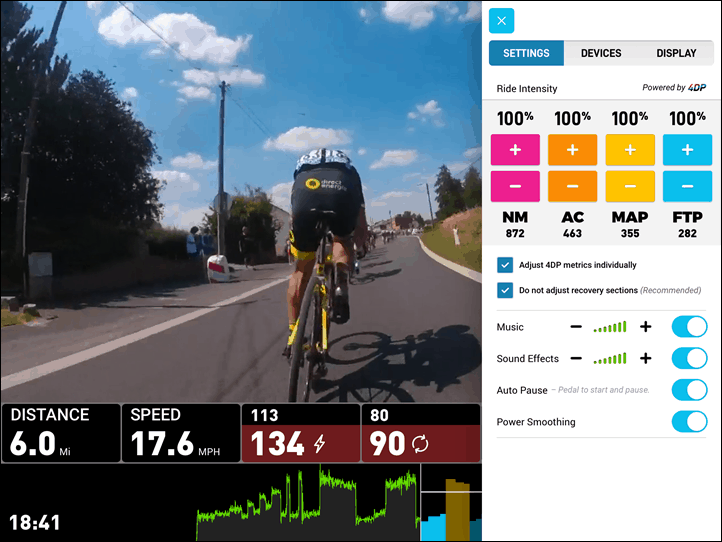
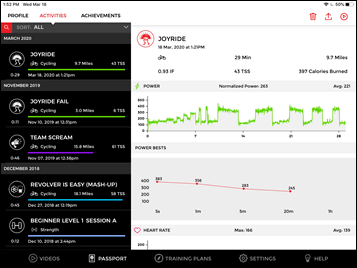
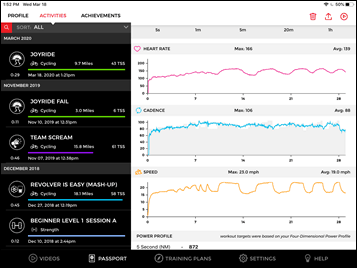
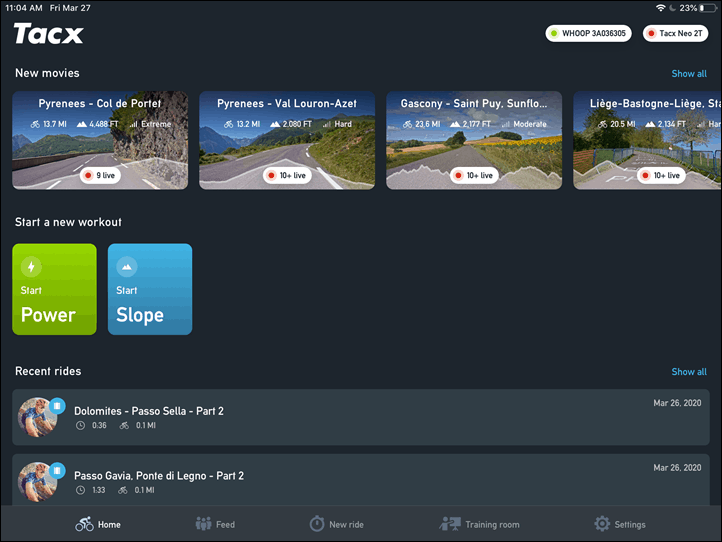
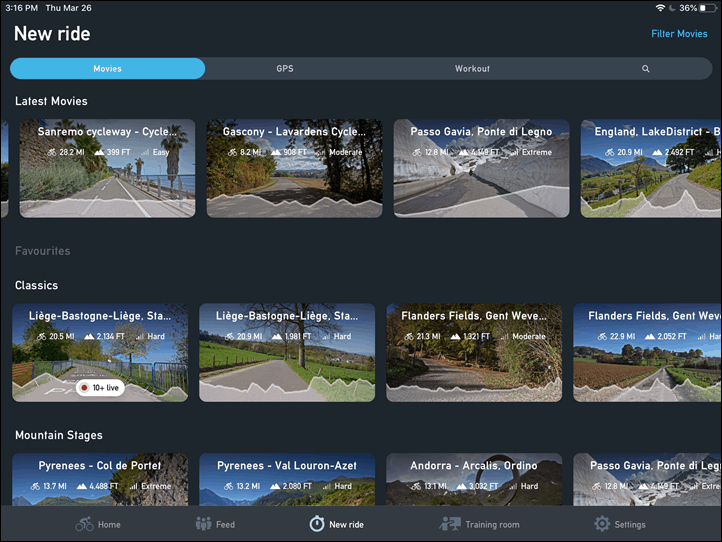
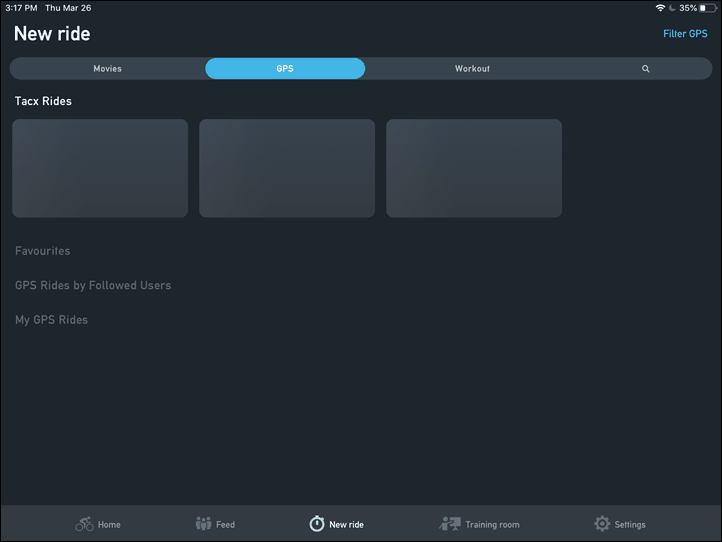
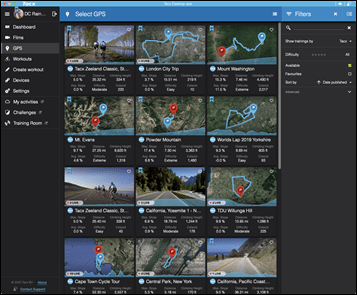
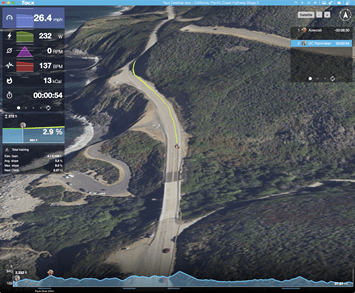
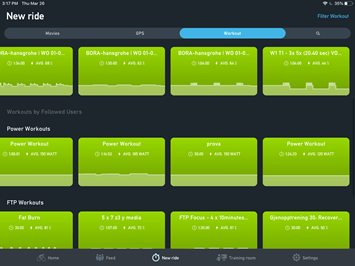
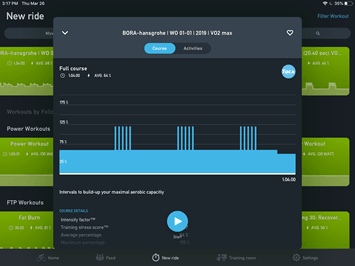
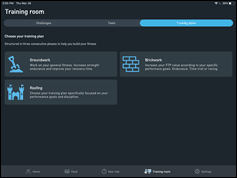
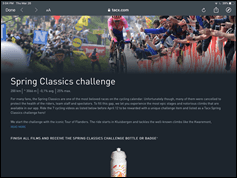
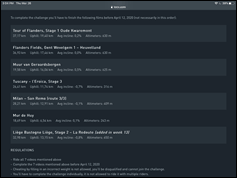
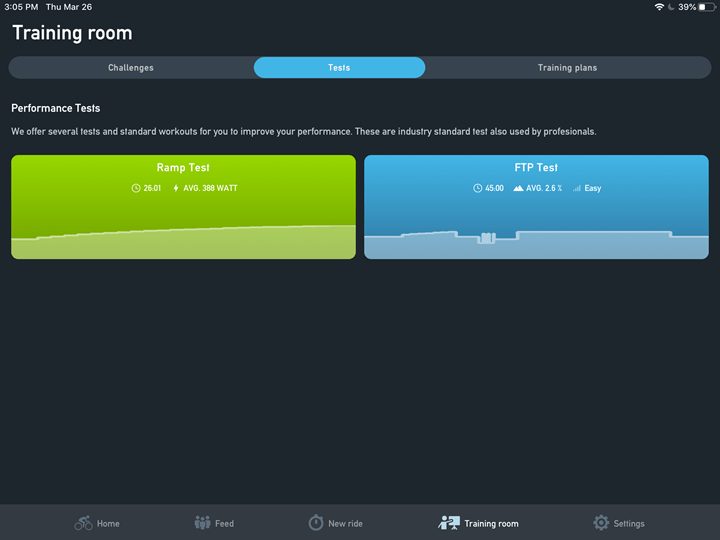
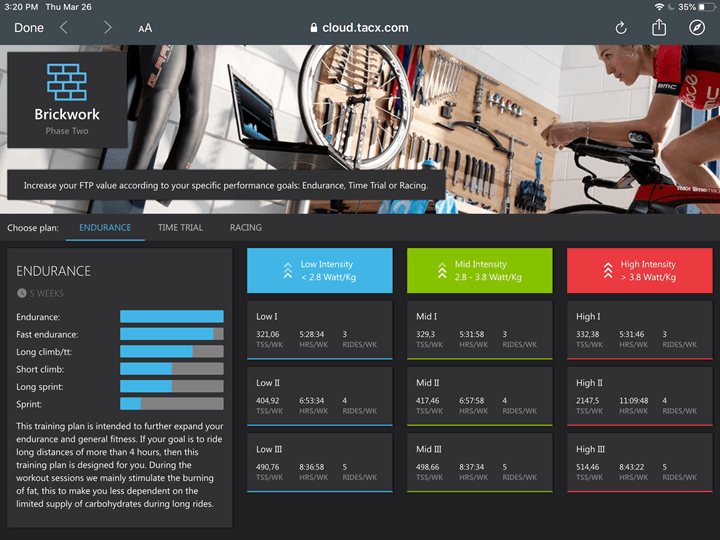
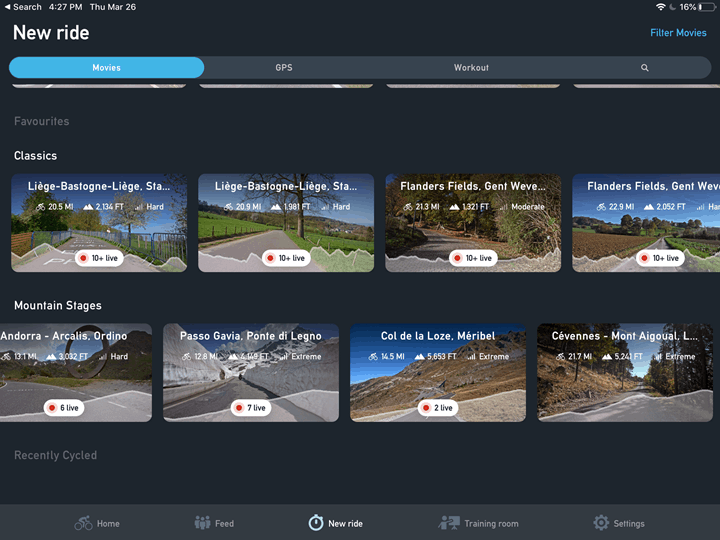
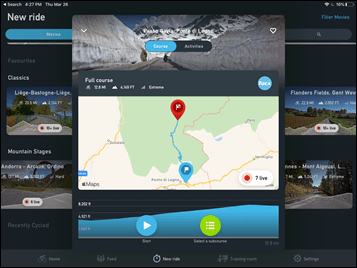
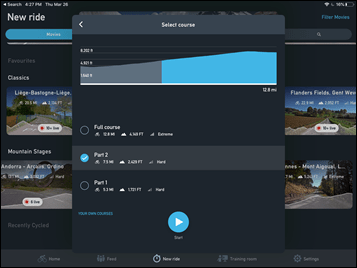
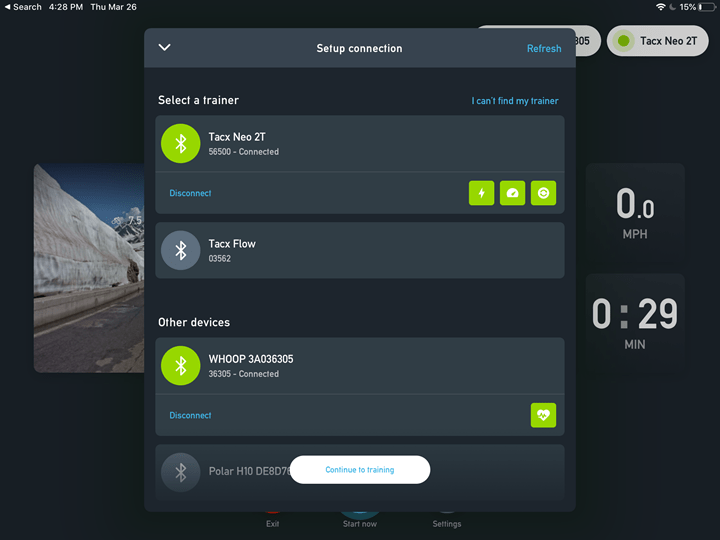
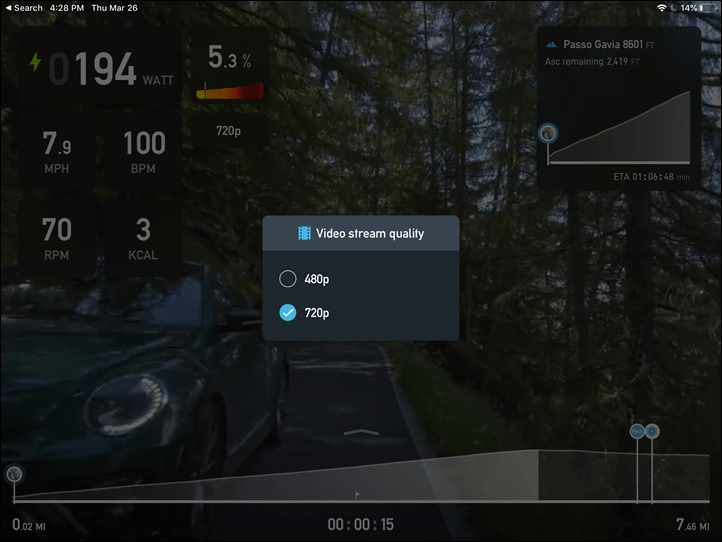
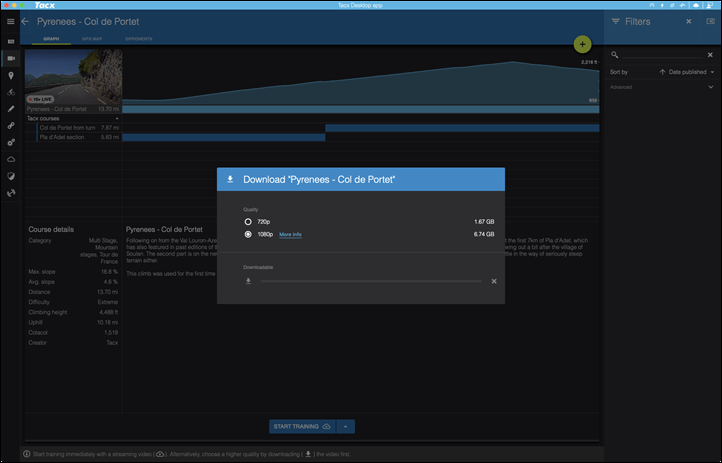
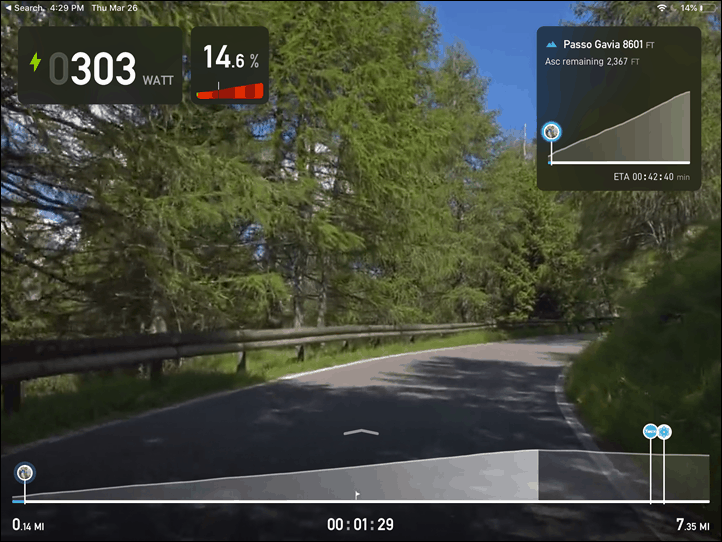
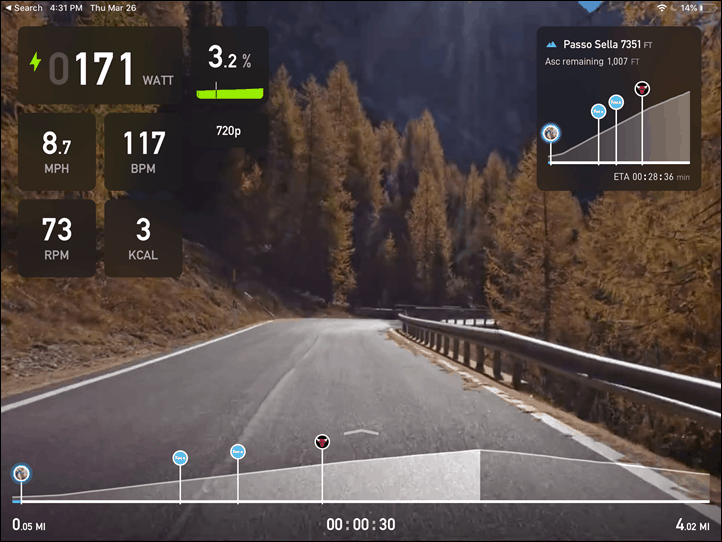
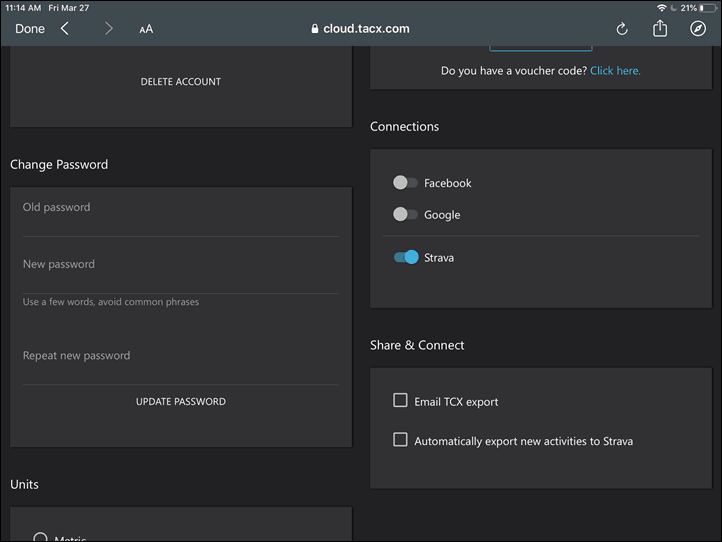

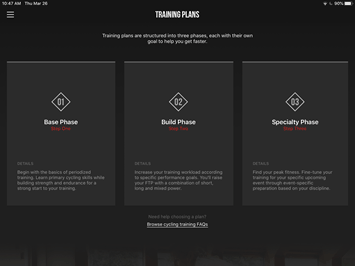
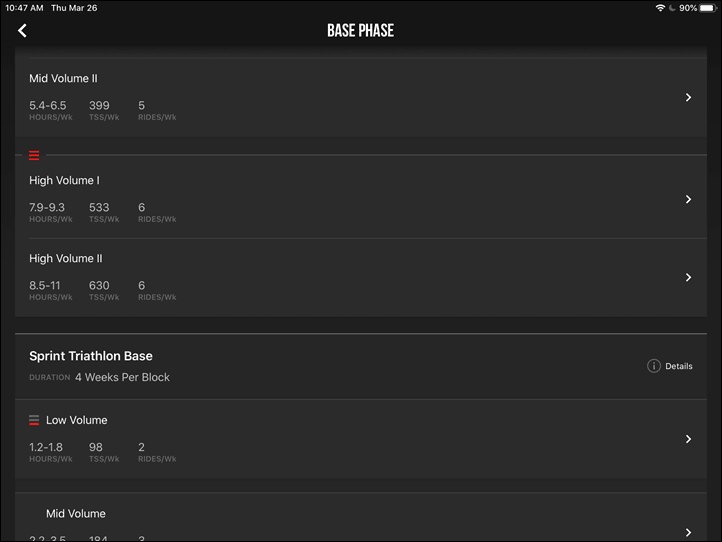
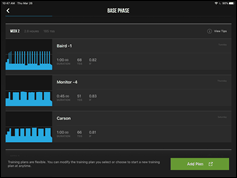

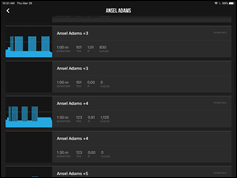
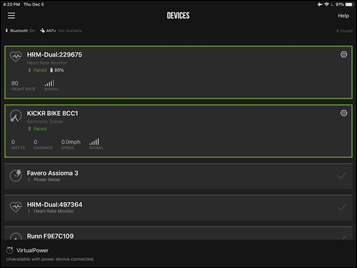
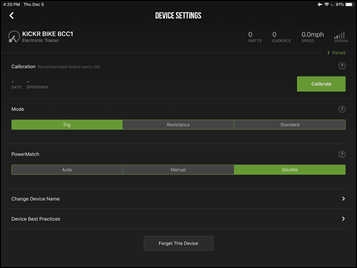
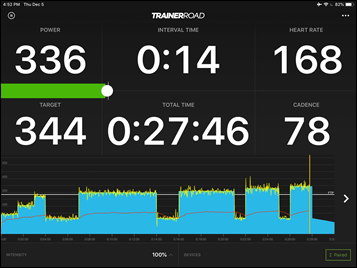
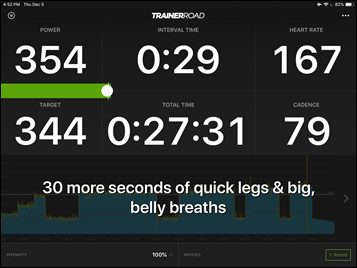
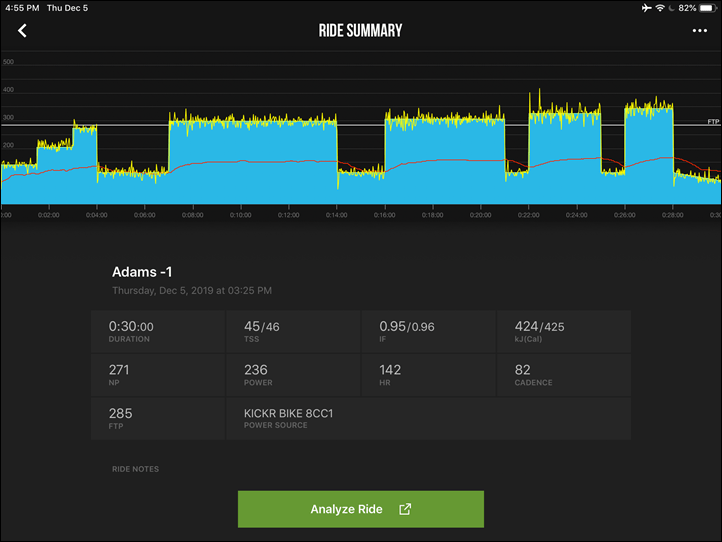
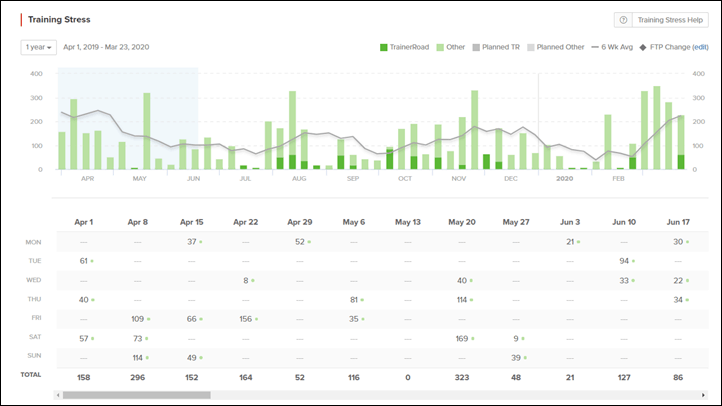
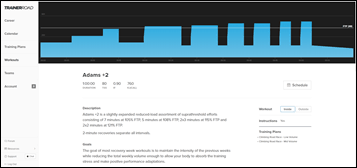
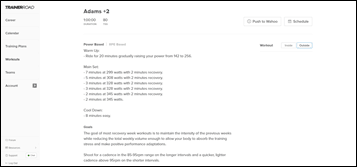
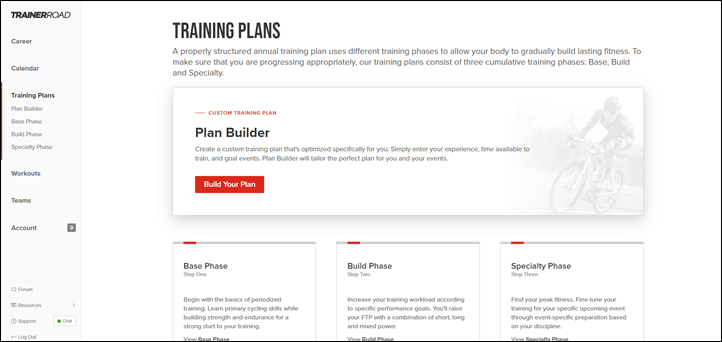

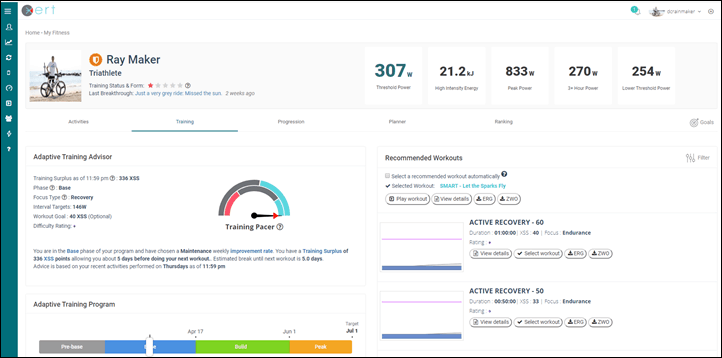
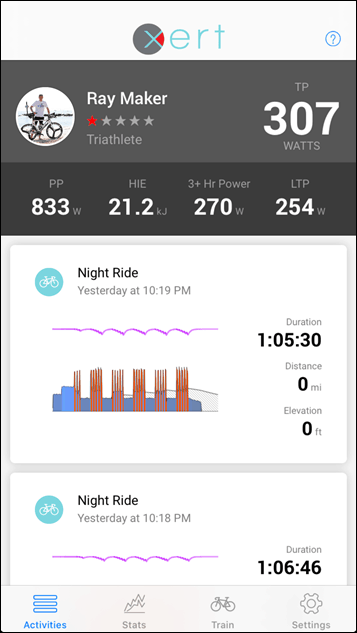
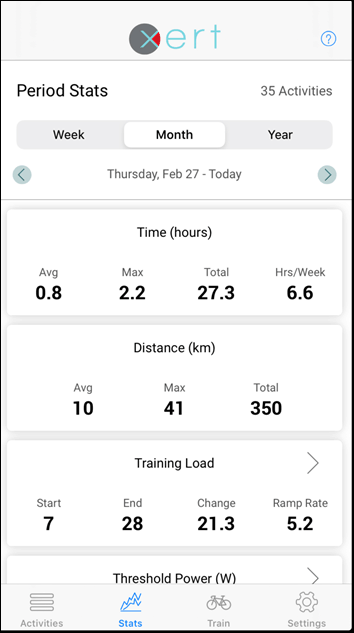
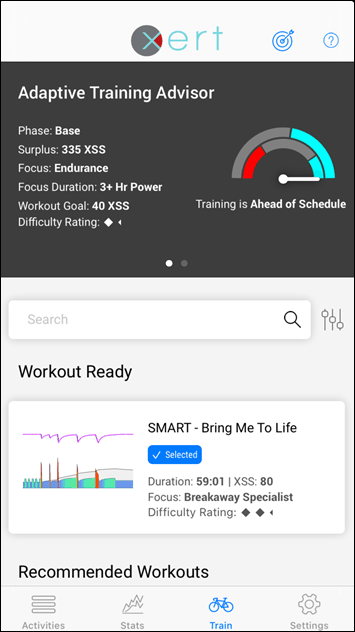
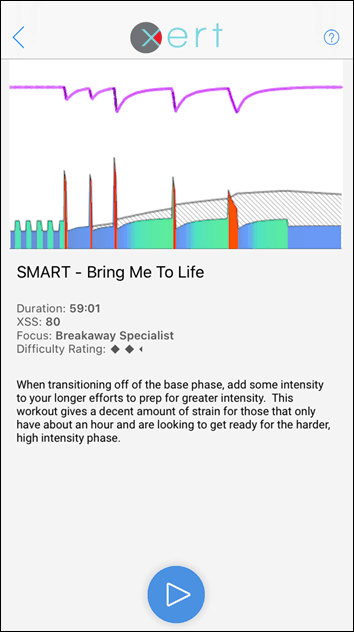
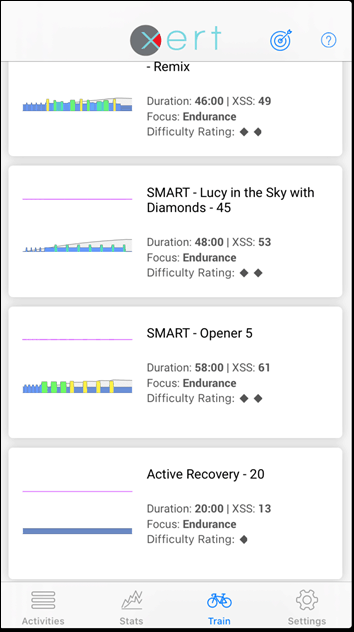

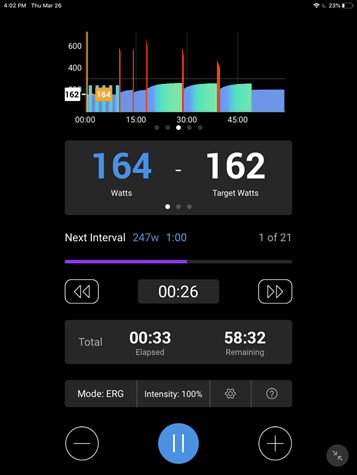
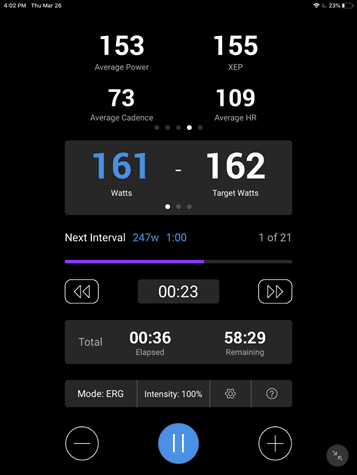
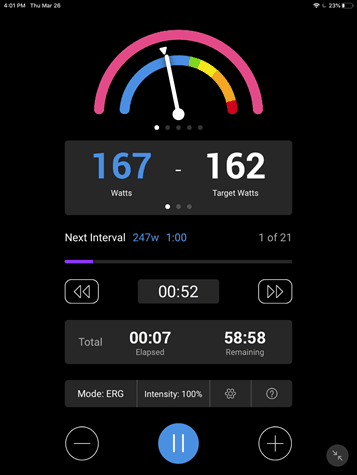
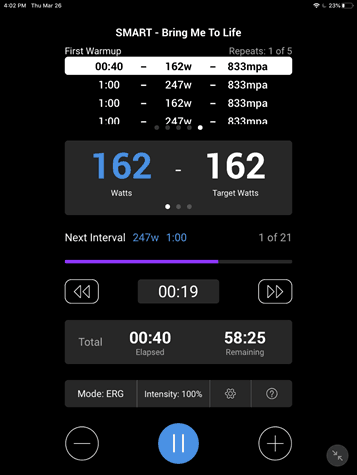
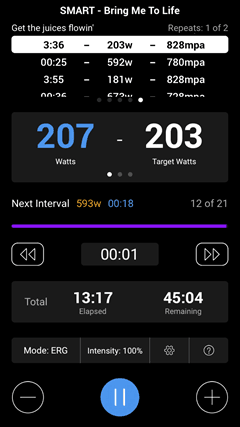
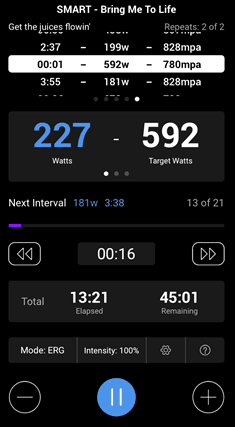
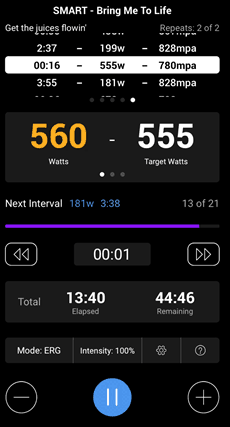
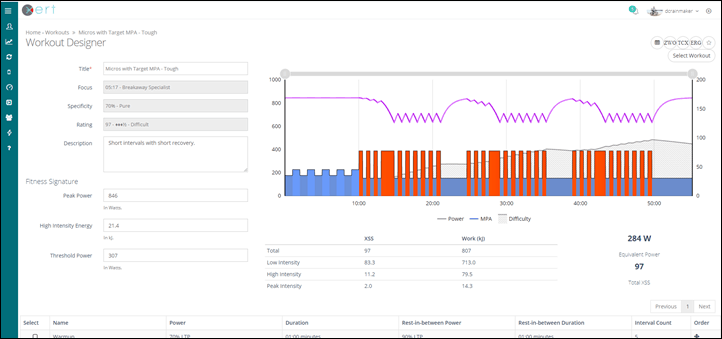
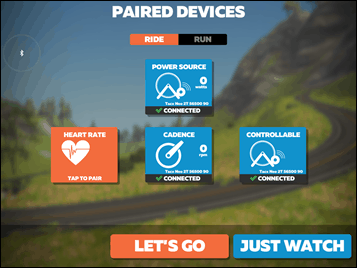
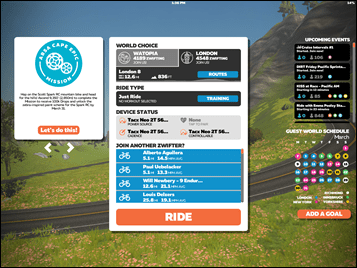
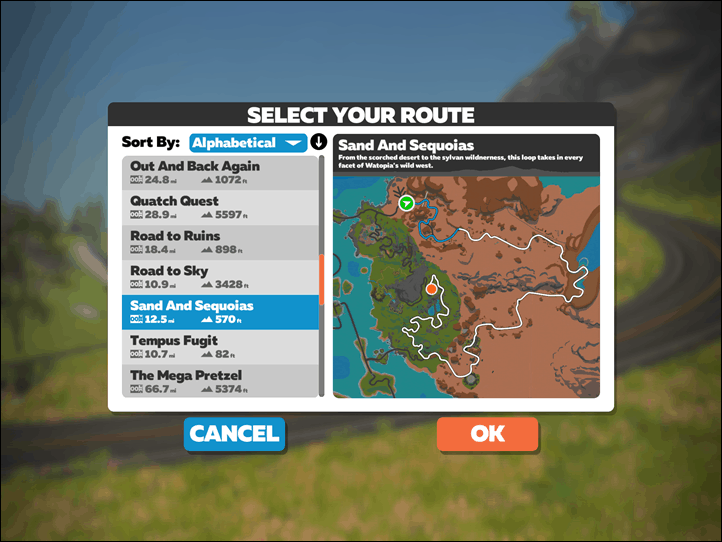

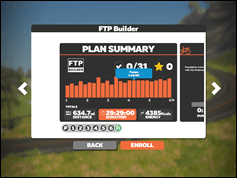


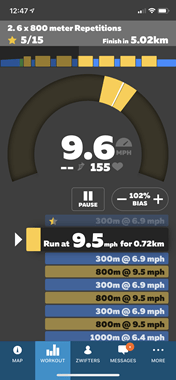
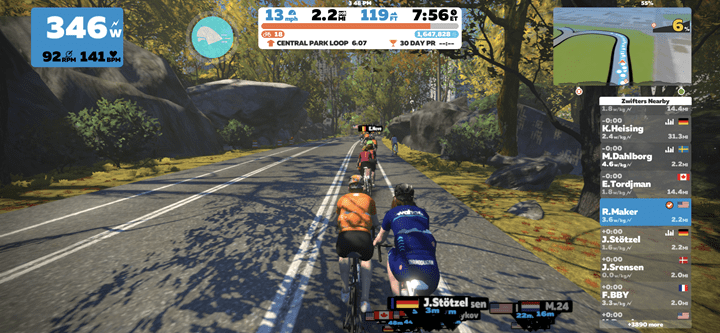
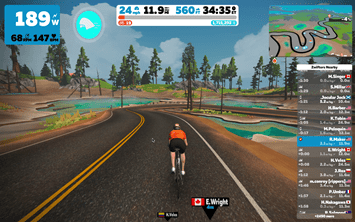
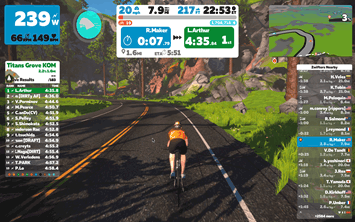

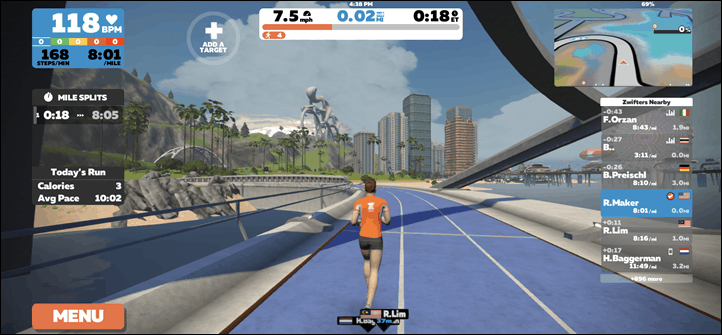
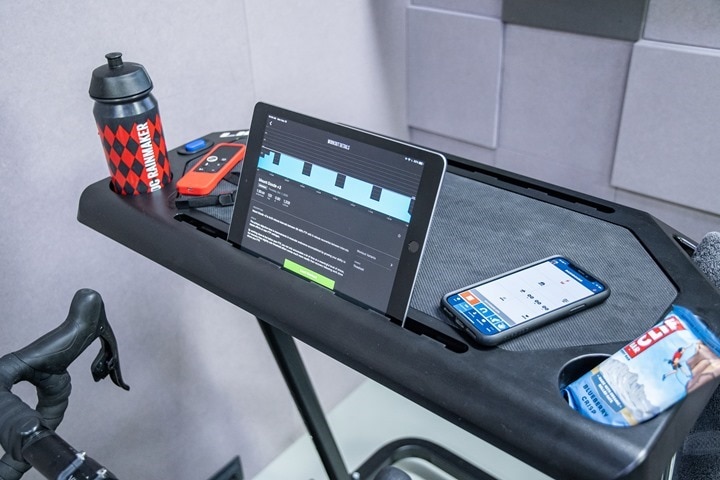
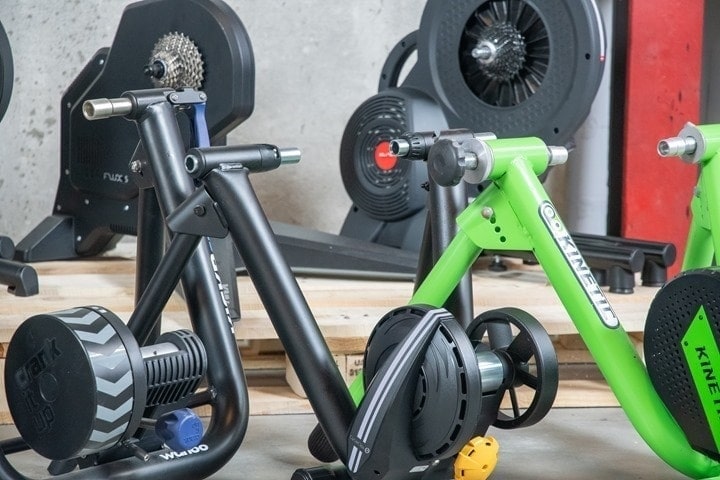


















Hi Ray, thanks for quoting Arcade Fitness in the beginning or your article!
We’ll add a new feature within a few days allowing people to ride and run indoor just with HR strap. Our algorithm will compute virtual power from heart rate.
This may be interesting for people stuck at home with no smart trainer during Corona crisis…
Looking forward to reading this !
Small typo in the intro : “That’s just the way I role” -> roll ;-)
Thanks! All rolled up now!
Brilliant as always, personally I’m tired of Zwift and I want try some others, so this is fantastic as always Ray… thank you
I too need a change up from Zwift. Sad to see VirtuGo never made it.
Brilliant write up Ray. There is no other source I trust for tr-relatedi reviews. You da man.
I’m going to try Rouvy. I love that they have a family plan. If we like it, that’s $30/mo saving over Zwift.
Great write up. I only noticed pricing in the Peleton write-up. I think it would be beneficial if you could add pricing into each section.
Yup, will do it when I run through the database.
Is that going to give us a ‘matrix’? I realize it’ll be hard to select the features. The only ‘clear’ ones are costs, tryout time, platforms and stuff like that. Maybe add pro’s, usp’s, con’s?
Tacx: like I know it! An ‘allways something’ company. Like Garmin. A good marriage…
It will.
Just curious did you ever get around to making a compare sheet with pricing included?
road.cc has compiled a decent price/feature chart (scroll to the bottom of the article.) Would be a welcome addition here :)
Yeah, I’ve actually got all the apps in the product comparison tool on the sidebar, but I need to do a quick update sweep of those and just didn’t have time yesterday to validate everything in the database is 2020 current with latest features. Will do that this weekend.
A few more comments/questions :
No mention of drafting ? I know Zwift and RGT have it and while it’s a bit hard to relate to in Zwift (apart from hanging with the pack easier) in RGT there’s that nice graphic with the green watts you save.
For RGT : “Magic Roads” currently (?) has a minimum of 5 riders for it to start, i.e. you can’t create a route and test ride it. I tried riding up Ventoux the other day and it kept crashing. Based on messages from other riders they had the same problem. So I went to Canary Wharf and it was ok there, albeit with some freezes. Could have been my phone. Juggling the app+sensors + music + earphones must be pretty taxing !
For Kinomap you write : ” In this case it’s a blend of presenter footage of them riding inside a studio, without outdoor footage from a scenic and stunning European mountain climb” – how does the “blend” work ? Does it switch screens automatically ?
For Rouvy : you backtrack at the race/train option but don’t come back ;-) I trained by climbing up the Col d’Eze with a virtual partner but haven’t raced yet, not sure what the difference is ? Also they have scheduled races, I need to try that.
For Zwift : you could mention Zwiftpower to keep track of your race results. They also seem to filter out “abnormal values” (i.e. cheaters ?)
Anyway thanks for another excellent write-up !
Hey Hollyoak,
Let us help answer the Rouvy question for you! When you select a course, you’re prompted to ride in either a ‘race’ or ‘training’ mode which has slightly different features. For example, in ‘training’ mode you’re allowed to change the reality level of the ride as well as move your rider around the course. In ‘race’ mode you are not allowed to move the avatar or change the resistance level, but your effort is posted to the online leaderboards.
I hope this helps!
The problem with Rouvy’s reality mode is it doesn’t just change your effective gearing, it changes your speed making Strava leader boards meaningless.
Exactly Dave, it’s bonkers that Rouvy does that. I tried adjusting the Reality mode, thinking it would give me more range than my 34×28 for climbing Ventoux, but I just started going faster! It felt weird so changed it back and slogged on pedalling squares!
Nope, not in my laptop windows 10 app. I go into training mode and I cannot adjust the reality level in in-ride setting. It doesn’t show this option. Sorry.
Nope, not in my laptop windows 10 app. I go into training mode and I cannot adjust the reality level in in-ride setting. It doesn’t show this option. Sorry.
Hey Dave! Not exactly sure what you mean, but you can adjust the reality setting in ‘training’ mode to your hearts content!
I’ve been trying get my Garmin HRM to connect to Rouvy with no luck using Window 10 on my PC. Oddly, if i run the program on my andoid tablet, it picks up every sensor on or near the bike. I’ve been in contact with Rouvy support. They are responsive, but haven’t been able to address this problem in Windows 10.
Hey Wayne,
Are you using the Bluetooth or Ant+ version of the HRM? Windows 10 will pick up the BT version fine but you’ll need an Ant+ dongle for your computer if you have the Ant only strap
Thanks for the write-up! Fantastic content, analysis, and comparisons, as always!
I’m currently using The Sufferfest iOS on both my iPad and iPhone. I just wanted to point out that you can sort the videos by Duration, Intensity, TSS, Workout Focus, and Category. In the interface, where it says Alphabetical, if you click on that it’ll give you all the options for sorting.
Thanks again!
Thanks – fixed!
Wow I”ve managed to start a new Sufferfest training program and kicking it up a notch!
Thanks for the wonderful review. Well timed.
Can I use FulGaz on the apple laptop that provides me a year of apple TV+? If so, how do I download the app (the search function did not recognize FulGaz/Ful Gaz).
Avi
Hi Shaka
There is a windows version of FulGaz, so that would work if it’s a PC. The Apple TV+ App is just that, it’s an app rather than an Apple TV in your laptop or Smart TV. You can find all the different versions of FulGaz and their download links here link to fulgaz.com
All of these are super well polished apps and most come with a social aspect as well.
For folks that just want a good workout and don’t care about the bells and whistles, or the social aspect, PerfPro and Golden Cheetah are outstanding options. I’ve used both for years. GC is probably more geared towards folks that want to dive into every detail of the workout and do deep analysis of your metrics. PerfPro is a bit more stripped down, but it comes with a metric shit-ton of workouts to choose from.
Frankly, I’m not going to be convinced by pretty graphics on a screen that I’m riding in the Alps, and I really don’t care about online competition. Give me a good workout, and I’ll choose my own distractions via a TV connected to my file server to stay entertained.
To each his own.
Yup, I agree that for the core ERG-style functionality, those two are great. And in the case of PerfPro, it’s got beastly huge studio functionality (and a gazillion other features).
My challenge with PerfPro on this list was simply that wile I know some folks are using it, I’ve seen a drop-off of interest in the last two years (nobody has asked a question about it in that timespan). Again, the depth of that app is incredible, but it’s also really tough for first time users to wrap their heads around.
Shame that it didn’t make the cut. I’m also a big fan, it’s rock solid, and its workout execution is second to none. Also the best implementation of a solution where power read from the PM drives resistance (TrainerRoad calls it PowerMatch, but last time I tried it it was nowhere near as good/responsive as PerfPro).
If you have workouts in MRC format (perhaps a coach is sending them to you), it’s second to none. Or you can create your own.
Also, it’s a one time fee for the software, forever. I paid $99 in 2016 and I’ve kept receiving software updates since, including the new version currently in beta which will be coming out soon.
Hi
Great write-up.
I just started using Xert and love it. The way Xert constantly adjust and the way it make you work hard for that next breakthought effort.
With Xert you dont need to do that dreaded 20 min. FTP test. Xert calculate your FTP from all you rides and pretty accurate. Xert had my FTP at XXX watts without doing a FTP test. I then did a FTP test and it was within 1 watt of what Xert had calculated.
TrainerRoad’s PlanBuilder is neat – it automatically builds a plan based on your ‘A’, ‘B’ and ‘C’ races.
However, the intensity can lead to burnout during a forced stay-at-home situation like what’s going on right now in most parts of the world, so I’m cutting down on intense TrainerRoad workouts and trying to ride outdoors as much as possible
I use the Tacx app exclusively for ad hoc workouts. Basically my coach creates workouts for me to do. It was great because it used to allow you to make quick changes to power through the app. But they cut that feature out in the new version.
It sounds like trainer road has this kind of ad hoc feature. Is it also easy to adjust power. I am thinking for 30/30 intervals
Thanks Ray, just what your readership needed while we’re stuck inside for quite a while, much appreciated!
Thanks Stephen!
Great article!
I’d be interested to hear what you think about the mid- to long term future of everything not named Peloton or Zwift. Do you have subscription numbers for Trainer Road and the rest of the bunch? I’d like to get a better understanding of the overall size of the market right now.
If this past week is any indication, I think the future is super bright for a number of apps. And I think the next month or so will cement long-term interest.
I tink RGT is probably the best example of that. When I first started taking screenshots for this 10 days ago, I was seeing barely a dozen users in RGT at any point in the day, on any given course. Yesterday, mid-afternoon EU time, as I was grabbing a few missing screenshots, the numbers per course were 110-120 riders. Same goes for apps like Rouvy and others that show user counts per course – huge jumps from my initial screenshots last week to my clean-up round of screenshots yesterday.
TR is pretty big, bigger than Peloton’s digital base (non-bike base). Bkool is next behind them pretty closely, and then Sufferfest after that a bit back. Beyond that the numbers are significantly smaller.
Thank you for the detailed response!
Good to hear that other platforms are doing well, too. As almost always, variety is a good thing for us as customers. I kinda feared Zwift might be on the way to take a lot of air out of the market.
Let’s see how the recent changes at Zwift will play out. Based on his podcast appearance, it sounded like Jan Frodeno was confident there was a future for Zwift Running. As an investor she should probably know about their plans?
Glad you’ve noticed the trend, DC! We’re super excited for the future of ROUVY and all indoor apps out there as they become a more viable way for people around the world to compete, train, and ride together.
I wonder how many people settle on an app not because it’s the best but because it has the fewest compromises.
I want to give my money to Trainerroad, the depth of product is amazing and the podcast is genuinely funny as well as informative. However I can’t be bothered thinking about what entertainment I want every day before I train so that’s a no unfortunately.
Sufferfest is great, the workouts and yoga, strength & mental training make a complete package and whilst the videos are a bit too “quirky”, the music is ace. However I’ve got no ios or windows hardware so can’t run it – the lack of an android app is bizarre!
I’ve tried RGT a couple of times and really like it, the physics are better than zwift, esp the braking and the UI is a lot cleaner but the routes are limited and there are few “rolling” options. I think the team listened to those people who, during early Zwift, were just banging on about real climbs etc a bit too much. Additionally the workout function is a bit clunky with you needing to go through a 3rd party.
I quite liked Rouvy but there are no workout plans so it’s basically a constant search for a suitable workout with your own programming.
FulGaz just doesn’t work for me, seems less immersive despite being more realistic and the workout programs are limited.
Which leaves me with zwift which I’ve had since the early days of Jarvis Island when I could confidently get all the jerseys simultaneously because the other riders were all bots. There’s no music, the workout programs are bit fiddly and lack imagination, the racing is poorly implemented, the UI and UX need a lot of work and there’s a bit too much kool-aid around it, particularly from the Zwift Cast.
Ultimately though, I consider it the least worse option so that’s where my cash goes. Ideally I’d like a trainerroad/sufferfest/RGT merger to come along but that seems a touch unlikely!
“I wonder how many people settle on an app not because it’s the best but because it has the fewest compromises.”
“Best” is relative. There is no single solution that is perfect for everyone, It’s even questionable if any solution is perfect for someone in particular.
Apps (among just about everything in life) is about compromises. We need to look at our desires and needs, compare those to the available options, and pick the one that seems to meet those best. It’s unlikely we’d check the boxes for all preferences at the top of the list.
So, setting relative priorities is essential and people should choose based on those. It’s essentially your conclusion, but I see it as the “closest to perfect” or “best among the options” for a positive spin than the least negative (which is more like picking a politician :P )
Hey Ivan,
Though we don’t have any built out plans on the platform, you’ll notice on the Rouvy Workouts an option to connect your Training Peaks account to Rouvy. From there, you’ll have the option to access your ‘workout of the day’ that has been entered or pre-built into Training Peaks! This option saves the time of having to manually upload your workouts into Rouvy to ride them on your smart trainer.
Thanks for the update. What would be nice is a sort of App comparison guide like you do for Product hardware. Easy way to look up if an App is say only on a computer (Win/Mac) or available on Apple TV, with all the common features laid out: Vidoe/Real world/Fictional; Structured Workouts/ability to create/upload your own…etc. This way you could pick say Sufferfest and Kinomap and do a direct feature by feature comparison between the two.
Just a thought but it would be a great tool to use.
Ray – I second Lee’s comment here… whats needed is a worksheet/Wiki that lists features by app and platform. Its a mind-boggling and rapidly developing environment that could benefit from community input.
For example Rouvy supports ANT+ on Android in the Workouts app but not the AR app??? And short courses can loop (e.g. automatically start again) in Workouts but not AR etc. etc.
I think many of us are spending multiple hours trying to figure this stuff out yet for most apps there are insufficient discussion boards out there. Plus a few of the apps have limited customer support. A central DCR ‘sponsored/promoted’ Wiki could potentially solve a big part of this issue, limit information silo’ing, and perhaps reduce the need for the update slog you went through for this post! Perhaps it could be a Supporter only feature??
Thanks so much for that great review of The Sufferfest, Ray. So pleased you enjoyed it and, yes, you really should spend more time in Sufferlandria. :) Just a couple of things:
– 4DP is not a more nuanced way to measure FTP, but rather the measurement of the four distinct energy systems a cyclist uses to generate power. So rather than use FTP to ‘guess’ what an athlete is capable of, SUF actually knows what you can do and sets targets accordingly and far more accurately. More on that here: link to thesufferfest.com
– You can sort by time (as well as intensity) by clicking on the filter that says ‘Alphabetical.’ But clearly we need to make this more obvious and we’ll get that fixed up.
– Our workouts aren’t just about Suffering anymore…we left that behind years ago and there’s a solid portfolio of endurance/less intense workouts and….
– … very neat feature for a gadget guy like yourself: Our training plans, designed by our sports science team, **automatically** dial down the resistance in specific areas on scheduled workouts where appropriate and depending on what the goal of the workout is.
Lastly, anyone who is keen to complete our new ALL IN plans designed for athletes in isolation can use the code ALLINSUFPLAN to get 45 days free (14 day trial + 30 days).
Hi David,
Is there any news on Android or Apple TV?
There’s currently a massive influx of new turbo users looking for training platforms and not having the hardware support options of some of the other apps can’t be doing you any favors.
Ah, those platforms are like my holy grail or something. We’re getting closer and closer to Android. Without going into details, we keep getting thrown off track by other, unexpected issues. Nonetheless, we’re still working on them and — trust me — nobody wants to see them out there more than me. In the meantime: parts of our app are now available on the web (e.g., training plans and calendar) and for those with iOS devices, you can AirPlay to your AppleTV.
I just want to give a shout-out to you and to The Sufferfest in general. I use it exclusively and love it. I have a great setup where I use an ANT+ dongle on my laptop and AirPlay to an Apple TV. It’s perfect. The workouts are awesome and I’ve been using the training plans for ~6 months or so and have had some huge gains. Thank you, so much. Keep up the great work!
Excellent review. One of the things that the review does not cover in detail is the community aspects of app. As someone who uses the Sufferfest, the online community that mostly congregates on FB, is one of the most valuable and supportive aspects of the app. The spirit, encouragement, and support that come from the community is really incredible (especially around the time they do the Tour of Sufferlandia).
Good to know the Sufferfest online community is FB-based, for those of use who aren’t on/don’t/won’t use that platform. Great for those that do, though.
Great review DCR.
Having tried several options, I am fullt devoted to Sufferfest.
The 4DP has really helped.
Additionally, the online (Facebook) group is simply awesome.
I left Zwift two months Ago, lever looked back.
Several sessions are hard but there are plenty of great medium hard sessions as well.
I have been a user of The Sufferfest for a decade and a seasonal user of Rouvy for two years. I also have tried RGT in its early iteration but gave up when it required two devices to run and while TrainerRoad is excellent for what it is I find the chart format not very motivating.. Zwift is not for everyone and I am one of those.
The Sufferfest’s training plans are very impressive in that the output indicated is adjusted automatically for the plan so there are recovery elements mixed in there. Plus there are separate videos (the Open series, for example) that are very good for recovery. I like that the Sufferfest videos can be minimized so that you can do your workout while watching something else (like live coverage of races back when we had that sort of thing!). There is enough variety in The Sufferfest’s offerings so you don’t get bored, and the Facebook community is lively and entertaining. With everything The Sufferfest offers–videos, training plans, yoga, strength training and even mental training–it is an excellent value.
For days when I just want to ride and look at scenery, I enjoy using Rouvy. There are regular challenges to motivate you. The video varies a bit in quality but has improved greatly in the last year.
Leslie,
Glad you’re enjoying Rouvy! We’re quickly closing in on over 7,000kms of routes and with the upcoming drafting release(date tbd), the riding will become even more realistic!
I use Zwift and Rouvy and also have Fulgaz. I use a Windows laptop so Fulgaz is having difficulty staying connected although I need to try again. I like Rouvy as it allows me to travel around the world including places I have traveled. I did the Road to the Blue Lagoon a few months after my trip to Iceland…Very cool! The only issue I have is with the Augmented…the cartoon rider goes at FTP pace…I do not always want to ride that hard.
Zwift is the old standby and I went back to it because it just works…no streaming timeouts, all the sensors work, and I can calibrate my Snap when Wahoo’s own app does not work. I dumped it a while back and I lost all my levels so having to start over. It has been a bit boring being limited in course selection in Watopia until I get my levels up…
Hey Chris, did you cancel your account or delete it? If you just canceled, all of your levels and progress should remain.
I saved the last year of rides and then deleted. I think I was in a mood at the time…
Pretty comprehensive! As a Sufferlandrian, I thought I’d point out that there is a drop down menu in the app that can sort the workouts by Duration or TSS as well as other filters. Once there, you can simply scroll to the range you’re looking for. Also, I never talk about the Sufferfest because, well, I race. I don’t want to clue my competitors in on just how great this app works. ;-) Be well!
I’ve recently become a huge fan of the Sufferfest (invested in a KICKR to take it up a notch) and I think you missed one of the best features – the fact that all of the workouts on the platform adjust based on your 4DP profile. That means that literally every single workout is customized to your strengths/weaknesses. It was honestly one of the biggest draws to me when choosing a platform. It’s also funny – which goes a long way when you’re really suffering.
Love the detailed write up. For what its worth I have been a TR sub for over 3 years now and just love it. The team, forums, calendar, workout builder, podcast and community are top notch. If you want to get faster it will do that for sure.
For others that want something with a little more interaction zwift group rides are a lot of fun and Fulgaz works well. Peloton digital app is meh without the bike personally (used to have one) but the app overall with meditation, running, yoga, bootcamp, dancing (most recent), etc are pretty hard to beat for $12.99 a month.
What about CVRCade, is it still not ready for primetime? I see bloggers mentionning it sometime…
I meant to include it in the intro section of apps that I wouldn’t be covering this go around.
I’m sure a few people use it, but I’m struggling to find any quantity of real-world users (non-ambassador types) using it.
Thanks for this – perfect timing, as my wife got a Wahoo *yesterday*!
In the Tacx Training App, did you ever get the GPS rides with 3D rendering to work (except on desktop)? I’ve tried importing a Strava activity, importing a Garmin Connect-exported activity, and importing a created-just-for-this-purpose Strava route, all to not avail.
Nope, only on desktop did it work for me.
…and now GPS rides on Tacx Training App on iOS suddenly work! Fun to virtually ride along a marathon course, to see it from a different perspective.
Funny, wonder why? :)
But, it’s honestly a good example of of how time-consuming running down bugs can be. Generally in an in-depth review I’ll circle back to companies with any technical issues I find prior post, just in case I’m doing it wrong (or, if they have comment about fixing the bug soon). But with this kind of post, finding issues and circling back do a dozen companies isn’t realistic. Things stretch out, rinse, repeat.
I use Garmin, Trainpeaks, Strava, and Zwift. How would you set things up so that my workouts doesn’t get reported twice? I’m too lazy to add the mileage and elevation gain so I have it setup for Zwift to update my training peaks. However, I run outdoors so my Garmin updates Training Peaks as well and my bike rides are doubling up and possibly messing up my fitness level in Training Peaks. Wish I could limit the garmin upload to Training Peaks to run only.
Great write-up!
Non-pro tip:
For those not able to purchase a smart trainer right away and need help, Zwift + the Speed Transmitter app will allow you to bypass the need for power sensors. Not sure how many other apps that Speed Transmitter works with?
Call for help:
Do any readers know how to view more than the 10 “Featured” Scenic Rides on the Peloton app, or ANY on the Peloton website? I’m all about seeing the world from my basement.
I assume you skipped them since they aren’t part of the app?
I’m surely in the minority of readers here, but if you don’t yet have a smart trainer you can still ride (or elliptical, treadmill, recover in bed) through Fulgaz routes with no cadence sensor at the original speed they were recorded. Cheers!
Great post, Ray. I can understand how it took so long, but well worth it. Especially useful as we’re all under house arrest now. ?
I have just bought a Wahoo Kickr Core, and use with Zwift/Sufferfest. Both are fantastic apps, and work well (although pairing with Zwift is easier on the companion app than my Mac). I agree that Sufferfest is always hard, and have to psyche myself up before a workout, so Zwift is good to just ride on.
Cheers and stay safe.
Hi – Has anyone outside China managed to pay for the subscription to One-Lap? I would like to give it a go (I am in the UK)
So Ray, you recommend disabling PowerMatch on TrainerRoad, but I’m guessing that comes from the fact that your trainers are high end, and just as accurate as your power meters.
But if you were using a setup like mine, with a wheel-on tacx vortex and vector 3 pedals, would you still disable it?
Thanks!
I’d definitely not use it on high-end trainers, I just don’t see the value there – it almost always seems to lead to tug of war type issues. And this isn’t specific to TrainerRoad mind you, but any companies that implement similiar features.
Where I think it makes sense is on very inaccurate trainers. The Vortex is probably on the edge of that, but it’s been a while since I tested it. An example of one where it makes sense is something like the InsideRide roller setup, or the Oreka treadmill thingy, because those are just so inaccurate by themselves that they’ll take any help they can get, issues and all.
Nice write-up. I still flick between Zwift and TrainerRoad depending on mood, having tried most of them.
Just for info, Kinomap is very unhappy about connecting to Tacx trainers using Bluetooth. They seem to be the only company that uses FTMS over bluetooth, and the Neo series doesn’t support it (they do in beta firmware, which might be why it worked for you).
I find it weird that they’ve not fixed this since it’s been an issue for years.
So FTMS support is kinda funny these days. Saris & Elite have it on all their trainers, full stop.
Tacx has it on all their non-NEO trainers. They don’t have it on NEO yet as noted.
Wahoo doesn’t have it on any (just ANT+ FE-C).
However in practice, that shouldn’t matter (Wahoo/NEO missing it). Wahoo has their BT API that everyone under the sun has used for years (because they predated everyone having any sort of BT API). So that’s solved, even if not ideal. Tacx has had the equiv for their trainers, inclusive of the NEO, for years too. And every app I know of has adopted it.
On Kinomap, I used it with the Tacx Flow Smart fwiw, but you can see the Tacx NEO in the screenshots that was sitting next to it. No beta firmware for me there.
Hi, I have an old Tacx Flow with the Tacx smart head unit that plugged into a USB port on my laptop to control resistance when using the now defunct TTS4. Are any of the new apps able to provide this same functionality i.e. connectivity via USB cable as opposed to Bluetooth? Thanks.
Same situation here, coun’t find any solution so far.
Most underappreciated feature of Zwift is the seamless integration with TrainingPeaks. My coach puts a structured workout into TP, and it shows up that day for me to do in Zwift without me doing a thing. You mention TP integration with Rouvy. I assume that works the same way, but the integration in Zwift is pretty much the single biggest reason that I continue to use it as opposed to TR (which seems, in part, to want to be a competitor to TrainingPeaks).
David,
That’s right! You can connect your TrainingPeaks to Rouvy Workouts and our software will automatically pull in your workout of the day under the ‘training peaks’ tab on the mobile or windows app.
Great job
Great – and timely – review, much appreciated. One note about Sufferfest – I’ve been using their training plans since they dropped a few months ago. Uniquely, you can add strength straining, yoga and mental toughness (some at various levels) to your training plan. The training plan, by itself, is quite good and automatically suggests (and sets) reduced intensity among the 4DP categories (5sec, 1min, 5min, 20min/FTP) when required. So, the plan might call for, on a particular day, a ‘normal’ FTP intensity, but reduced neuromuscular (5sec), anaerobic capacity (1min) and/or maximum aerobic power (MAP, 5min) intensity, each infinitely adjustable. This feature allows tremendous variety among the rides since many can be adapted to a specific prescription. I’m using the triathlon plan now (includes running and swimming workouts), but I’m hoping for a duathlon-specific plan. And don’t underestimate the other pieces: the yoga is way more fabulous than I imagined and it’s integrated in the training plan. More than most of the other platforms, the valuable approach of Sufferfest isn’t so obvious until you try it… I’ve used Zwift, Trainerroad, Rouvy, Maximum Training (gone now), RGT, Tacx, a couple I’ve forgotten – so I have some experience to make the comparisons…
Awesome review. I too mainly use TR for last 4 years. Tried sufferfest but novality wore off on me. Think seasoned athletes like just plans and target. Follow the numbers. I just watch Netflix or YouTube on trainer.
Thanks again
Andrew. IG. @ lufbra88
Ray,
Great reviews and very timely! As always, very detailed information on each app. And I’ve tried many different apps over the past several years. But because I prefer riding outside, the simulators and virtual apps held little interest for me. Obviously that has changed. I can imagine that it is very difficult to cover every aspect of a particular app adequately.
As others have pointed out, The Sufferfest’s 4DP system is integral to the experience, much more than being a more nuanced FTP. And that 4DP test can seem really daunting. I’ve found myself dreading it on many occasions. I’ve learned to rethink it and that’s made it much more approachable. I have viewed it like taking a final exam, with my results forever shaping my destiny. Additionally, I treated as workout of immeasurable agony. Of course, it is neither of those. It has only 27 minutes of intense intervals. It’s mostly recovery segments. Treating it as just another workout has solved the dread of riding it. It doesn’t suck at all when it’s just another hard workout.
As a fellow numbers geek, my last Full Frontal test had an IF of .95 and a TSS of 90. That’s easy compared to any of my weekend training rides.
Yeah, I tried to simplify the concept a bit (and then talked about phenotype targetting/etc), but perhaps I can re-word. Indeed, it’s more than just nuanced FTP, but at the same time FTP is still a core metric of it (thus, why the marketing ‘FTP is Dead’ isn’t really true either).
Ultimately what they’re doing is spot-on though, and elements of it have been around a long time – probably just not as clearly marketed or implemented to the end consumer as Sufferfest has done (kudos to them).
I have tried zwift, it’s ok. I used rouvy, liked some of the rides. I didn’t like their search function to find rides. A bit of a pain. Next I guess is kinomap.
Question to anyone. If you are just the normal recreational rider, no coach, no plan, just want to ride beautiful scenic rides that does well simulating those rides on my trainer, which is the best platform for that? Kinomap rouvy?
I like FulGaz for simulated rides because it’s routes are absolutely beautiful.
Thanks Brian
Try Veloreality, you can stream all their 720p videos for free.
Not free
Yes free…me bad
Hi The Real Bob,
Be sure to take full advantage of the search function! In addition to the map search, you can also find routes by filtering through classifications such as the average grade, distance, or total ascent. That search is easily accessible through the website.
Hi Ray – awesome review, as always. Great to hear you have a Peloton bike – I look forward to the review. I have recently moved from Zwift to Peloton and I wish I’d done it years ago.
One datapoint for your review – with the current CV situation, Peloton usage has boomed and nearly everybody is getting bad buffering problems. The Peloton IOS app has a class preload feature for times when you may have no internet access. That feature is not available on the bike – but it needs to be.
It would be a quick and easy fix to this annoying problem which is making the bike app almost unusable.
Hmm, I haven’t seen any issues yet to be honest with buffering – on either bike or iPad app. Perhaps being in Europe I hit different CDN servers that are better. Both are as ‘glorious’ as ever before.
And by ‘glorious’, I mean in apparently upscaled 720p. Sigh…
Yes, maybe you’re doing better in NL…I’m in UK, *lots* of complaints here. The FB page is absolutely lit up with complaints.
Yes, they could beef up their CDN capacity, Or give us the preload option, either works :-)
Regarding Tacx App…. you do not need to email yourself the tcx file to upload to trainingpeaks, you can simply save it to your computer from the cloud… yeah its an extra step, but big deal…
Yeah, lots of options once you get the file. Though those are more complex on a tablet/phone app. Ultimately, I find it unimaginable for really any of these apps to lack dual Strava/TrainingPeaks upload functionality built-in. To me that’s baseline (and yes, it’s stupid that Peloton has all the wonk around both that they do).
There’s also an issue sometimes with trainingpeaks on video rides.. sometimes trainingpeaks takes the date stamp of the ORIGINAL recorded ride and applies a time shift.. Ive been on other programs where I do an evening ride in North American central time, but in Italy for example where the video ride was recorded, it’s +7 hours ahead, making it the next day… if I don’t manually upload to TP, it actually dropped the ride into the next day… its something with TPeaks…
That’s super odd – and honestly would be the fault of the transmitting app, not TP. The way the .FIT file is written is 100% on the app itself, and not TP. Same goes for any time bias, definitely on the app itself.
I get my Peloton data into TP via Strava and Tapiriik – it kinda works (sync is usually immediate but sometimes takes hours!). But if you know a better way, please share!
Yup, that’s a good option. Not ideal, but good!
Bit of an underestimate for Zwift events/races. You can look at the ZwiftPower history and there have been 1500 events in the last 7 days. So just over 200 per day.
Good point, it’s got crazy in the last week. Started writing this about two weeks ago. Will update.
Hey Ray!
Amazing write up as always. Any chance you’d share how you have your apps setup to sync? Like I use TrainerRoad Garmin and Strava. If I have them all set to share with each other I get duplicate rides in both Garmin and Strava.
Hope you are staying safe and healthy.
Sync Garmin to Strava and TrainerRoad to Strava, you won’t get dupes.
The problem comes when you try to also sync TR to Garmin – but that’s pretty pointless anyway.
Yeah, it would be better if Garmin would actually update stats for PhysioTrue-Up from TR & Zwift, but alas, that doesn’t happen today.
Personally what I do is dual-record all my workouts with my Garmin (so my training load stats stay up to date), and then leave Strava with the export from TR/Zwift (but delete the Garmin one), and then I delete the TR/Zwift one from Garmin. Yeah, I know, stupid.
Hey! Just one short question on how you tell the trainerroad (or sufferfest) – app “who’s the chef” – if I ride in “ERG” – mode, the automatic power adjusting doesn’t work anymore – what I do up till now is using my EDGE 830 to adjust the power level, but that’s not very comfortable. But else should one’s training loads statistics be kept up to date?! Any ideas?
Great job… as always :)
Thanks Ray. Always enjoy your insight. I have been on the fence regarding TrainerRoad for a while now. It has its appeals; however, I mostly Zwift (a bit of Rouvy) and find, as you mentioned, Zwift is “mind-grabbing as well as . . . social”. Unlike you, I can’t stay motivated just turning the pedals and looking at numbers. Their podcast is a “must listen”, and I respect their message, but I don’t see the value in adding a few watts unless I can get some interaction our of the deal – Nationals aren’t on my schedule in the near future.
Just tried Fulgaz today. I like it! I think I’m going to grab the year subscription just to have an alternative to Zwift.
Thanks for writing this up, Ray. Variety is always good.
Hi Ray, I can’t find the peloton app in the app store, do you think this could be restricted to US, UK and Germany ? I’m in Belgium BTW…
Indeed, it appears they’re limiting it to countries where you can buy their bike: US, Canada, Germany, UK. :(
Bkool is really frustrating – so much functionality hidden behind a complex and confusing interface – well, interfaces.
Great timing on this, as I’ve been using lockdown time to explore the options out there.
Do you have any thoughts on which of these would be best without any internet connection for multiple week periods? Obviously it rules out Zwift types, but I’m worried things such as Sufferfest are reliant so much on the app that not getting workout data to their own servers in a timely manner would nerf much of their features.
Thanks as always!
Hmm, I’d have to defer to The Sufferfest crew on how background sync works for that.
Whereas most other video apps have no real dependencies on sync, except for getting a completed workout to 3rd party apps like Strava. So FulGaz, Kinomap, Rouvy, etc… all support pre-caching the videos.
Hi Ross — Our app needs access to the internet for a few functions like training plans and to download videos. However, as long as your subscription is valid and you’ve downloaded our videos, you do not need internet access to use the app. We have many Sufferlandrians who use the app in remote locations that don’t have web access for long periods of time and it works fine for them. If you’ve got more detailed questions, do please shoot us a mail on theminions@thesufferfest.com
Why you didn’t include OneLap ?
See the specific reason in the intro section of the post.
Because its unreadable by the vast majority of Westerners?? I searched for 20 minutes and could not find any translation.
For those who don’t already know, RGT Premium is free now.
I normally ride Rouvy and Xert with my last-generation MacBook Pro — thought I’d try Fulgaz using a Parallels VM (with 8G RAM allocated, 2 CPUs).
Huge waste of time.
After installing a fresh Windows 10 and updating to the latest patch, I find that Fulgaz crashes ignominiously moments after starting. Some problem with ‘twinapi.appcore.dll’. Sent the developers various “event viewer” details so I’ll see what they say.
I don’t know if this thing runs OK on a “real” PC but I’m pretty discouraged. I might give it a go on my iPad, but I don’t have the Tacx Holder (yet).
Hi Eric
Sounds like the VM didn’t work, that’s a shame. Sorry, but we don’t have the bandwidth at the moment to start troubleshooting FulGaz running on Parallels. We’ll be devoting our time to a “proper” mac version instead, but that is months away.
For now, it will work really well on your iPad.
Indeed, FulGaz on iPad FTW. My friend in Santa Barbara is always riding Gibraltar Road when I’ve got snow on the ground, so I tried it on FulGaz — and it kicked my ass.
Despite that, it seemed like I was able to spin a slightly higher gear than what I would expect for the indicated incline, so I’ll have to check my settings and see if I can find a ride that I am familiar with. (I’ve done this with several rides on Rouvy and the sync and incline changes were all over the place — to be expected on crowdsourced data, I suppose — but, as Ray says, FulGaz is extremely good on the sync with the Wahoo Climb)
The inability to use a Mac vs Apple TV or iPad drove me away from it early on.
I tried FulGaz the last few days, on AppleTV4K. Lots of technical issues:
I did half of one ride, stopped after an hour. Went back to finish it another day, which it gave me option to do – except it recorded total miles for the second session as if I started from the beginning (34 miles instead of 18 miles).
Did another ride today (Cap Formentor) – after the initial climb, during the descent the power reading was stuck at 198W. Had to quit it and restart the ride – doing that climb all over again – but then this time the app would no longer display total feet climbed nor the average power output. It did let me finish the ride – but then when I tried to end it the app blinked out – have no idea whether it will save the ride and send me the .FIT file for records.
There is a lot to like about FulGaz, but boy o boy app stability on AppleTV sure isn’t one of them.
Hey Eric,
With Rouvy, try riding some of the AR routes to feel more realistic incline ramps. These are usually more procured and with the latest smoothness update, you should notice an improvement in the ride quality! We also recommend downloading the route to give the best possible experience. Additionally, if you start a ride in ‘training mode’ you will have the option to adjust the ‘reality level’ of the ride.
Is VeloReality a smaller app that you might include in a follow-up? Seems like the software engine of that one may be falling behind the times?
Our “falling behind” engine is the only one on the market that can play 4K without overtaxing PC/Laptop. We are the only one offering not just selecting starting ride point but you can create your own rides from arbitrary slices of videos from our huge library. In the end the software is free along with free demo videos and free 720p subscription. Seems like a pretty reasonable candidate. And quality of our videos is generally outstanding. Here are couple of quotes quote from Ray himself:
“Veloreality is all about super high quality outdoor videos shot in beautiful settings on high-end equipment and rigs. It’s designed to look stunning on the biggest screen you’ve got. And bigger is better, right? Plus, they’re the only one to offer 4K videos – should your setup be appropriately sized to handle that. If you’re looking for big screen beauty – this is it.”
“VeloReality app is all about amazingly high quality video footage of incredible routes around the world. By comparison, it makes everything else look like grainy cell phone videos from 1999. “
I knew that statement would get you out of the woodwork and into the conversation! I’m a happy customer and I own more of your videos than one person probably should.
I have tried several of the above platforms, but in truth not all of them. I found my way to The Sufferfest and have never looked elsewhere. I find the workouts are so well designed to train specifically a certain area of your cycling fitness, but when combined in a training plan in their prescribed order the results are simply staggering.
I like to ride my bike, and although the realistic virtual world platforms I tried are cool, they didn’t keep me occupied like they are meant to. I am not really bothered by the undulating rolling roads of France, Switzerland or a made up computer generated map for example. I ride indoors to get fitter and faster to ride outdoors, and for that I need a good training plan and that’s where I think The Sufferfest wins hands down. The videos are humorous, as well as deadly serious on times that can distract you from the pain you can be feeling. The results are the best compared to those I’ve tried (Zwift, BKool Rouvy and Tacx Trainer App).
The workouts and plans are based on a more substantial set of metrics than basic FTP, and this makes each workout everytime unique to me and me alone. 4DP is comprehensive and provides me with my full range of abilities as a rider, and identifies my weak spots to work on. I can ride a workout, the same workout on 2 different days, and it goes from an FTP Enhancing climb up the col’s of France to an endurance low threshold ride based on what my plan is prescribing and the intensities being adjusted accordingly. The end result is in 12 weeks time, I get to do a new FF Test, the most worthwhile hour you can spend on a bike if you want to get results.
If you want interaction, and virtual worlds this will not suit you, but if you want to get fitter and faster with structured training indoors not aimless riding then The Sufferfest will take some beating.
A big part missing from these reviews is the community, I use social media like almost most people today and the sense of commaraderie and community is greater there than any other platform. I have used zwifts social media community and I rarely find encouragement and congratulations on there it’s always negative put downs and snobbery.
Once you join sufferlandria you can never leave
Regards
Leighton
Thanks for those comments, Leighton! Indeed, the Sufferlandrian community is one of the most relentlessly positive, fun and supportive groups anywhere. For anyone keen to see it, you can see the fun here: link to facebook.com
Kinomap is actually free to use with limited maps, but it also has rowing which is pretty cool that non other apps have.
Ray, using a smart trainer with the Peloton app, how would you follow resistance instructions from the leader? No knob!
My best guess is to run a Garmin head unit and use it to change resistance as needed on the fly, or set it to a moderate level and rely on gears.
Thoughts?
Amazing compilation! Thanks for taking all the time to put this comparison together. It has confirmed that I am and should be a happy Sufferlandrian.
It is awesome that there are so many good apps out. Reading the comments, all of them of have big fans. Each one seems to appeal to a slightly different user that is looking for an experience that meets there needs. Or they use multiple apps. I have only used Zwift but will be checking out others.
I think that I really fancy the peleton app. If they supported power meters I’d go with it in a sec. The music aspect is what appeals to me as good music during a workout really helps.
Is there any chance they will add this at any point?
> If they supported power meters I’d go with it in a sec.
By “support”, I assume you mean push power data from your PM into the Peloton app? That will never happen because then they wouldn’t sell any Peloton bikes or $39/month subscriptions :-)
For what it’s worth, I’m a long time Zwift and TrainerRoad user who recently bought a Peloton bike, and I absolutely love it, wish I’d done it years ago. Looks like DC himself also recently bought a Peloton – looking forward to his review next month.
OK, I have gone for the Peleton trial and have tried it on my Android device. I can’t see any option to pair heart rate / cadence sensors. Can anyone clarify of this is actually available on the Peleton Android app?
Yeah, it seems that you can only connect sensors to the IOS app. Might want to mention that in the review Ray?
Huh, that’s odd. I’ve only tried the iOS app, but that’s super weird that you wouldn’t at least be able to connect to a HR strap. Odd. Let me do some poking.
Their support pages specifically say “Connect [HR strap / Cadence Sensor] to IOS app” :-(
Hi Ray,
Any thoughts on BigRingVR? Stumbled upon it and seems fun to actually mimic cycling in real life at this time.. ;)
Cheers for the hard work,
Menno
Yup, gonna add it for my list of smaller apps. Aiming to start that this week, and hope to have it out next week.
I can recommend BigRingVR, very good videos, all Data i need during ride and it can use videos from others vendors. Makes more fun as hyped Zwift. Zwift is boring…
Fully support this comment.
Please consider BigRingVR.
Having just discovered BigRingVR can wholly recommend! Great interface, easy to setup on PC with ANT only. Worked flawlessly with my ancient ant dongle and the elite suito! And love the rides available.
Nice write-up, but as far is a I can see all subscription-based apps, seems to be the trend these days which I really don’t like.
For me it’s VeloReality.
Ok the GUI is a bit dated, but all the functionality is there.
Great video’s which you can cut up and combine to create youre own route/workout, custom power based structured workout’s and best of all No monthly subscription!!
I’ve tried several over the years but I’ve come back to The Sufferfest and FulGaz.
I use The Sufferfest for structured training and because I like their particularly warped sense of humour – and its not all full-on suffering – I have no trouble finding the easier rides – if you follow one of their training plans it will either direct you to the relevant recovery rides or schedule a ride at reduced intensity – it’s very simple to take a ride at less than 100%.
FulGaz I like for the best quality videos of real rides. On days when I can’t get outside on the road, or I want to go somewhere new, then FulGaz is playing in high definition on the widescreen TV. I always download the videos in advance so I avoid streaming speed issues.
Thanks for the mention of The Velo Set! Alpha test to Android devices is being rolled out this week.
I can only confirm, Veloreality is great. As a long-time user, I am currently testing the 720p streaming offer: excellent for extending the already huge range of courses available and it works absolutely flawlessly.
Great article. Ive been using trainerRoad since I got a smart trainer (Safety Cone Orange STAC Halycon) last summer. My power has gone “up” 30w since then (roughly 9 months).
Now, all this time Ive been using the power output from the powertab C1 instead of the trainer. Would you say that the right way to use TranerRoad? I am asking because you mention:
“Within those menus you can calibrate as well as enable features like PowerMatch, which matches your trainer to your bike’s power meter, so that the wattages will match out on the road. That feature can sometimes be a bit finicky in certain combinations – so I wouldn’t recommend using that on the regular, unless you’ve got a specific significant trainer inaccuracy issue you’re trying to fix.”
Looking for some input into this. Not sure if STAC would follow into the “finicky combination” side or “significant trainer inaccuracy”
Thanks in advance.
STAC Halcyon auto calibrates at the start of each ride.
That’s what I rely on for Xert and it works fine for me.
I have a Stages Gen3 Left Only for outdoor rides.
You could always pick a workout similar to DCR’s test workout and test it one day on the Powertab and the next day with the Halcyon. Notice any significant difference in the feel or chart stats?
I have my garmin only to receive from the C1 and the phone to receive from both the C1 and the trainer.
I will remove the pm from the phone and do a ride with just the trainer connected to the phone and the pm connected to the garmin. That should give me a good idea if there is major issues with using just the trainer.
Thanks for the suggestion!
Out of curiousity… It seems a lot of people use 2 or more of these apps, just for some variation in what they’re staring out. What percentage of app users use Strava as the ‘aggregator’ of all of these services to track fitness, mileage, goals, etc, as opposed to other connections like back to TR or TP. More and more it seems the ecosystem as a whole is driving the experience as much as a single app.
DCR — I think you should use your giveaway lottery posts as an opportunity to ask a survey question.
Something simple such as a single question with canned answers to pick from. Then post the results at conclusion of the drawing.
Seems like you have a decent sampling to work with (thousands of entries). :)
For starters “Which best describes you?”
Cyclist; runner; swimmer; triathlete; fitness enthusiast (all sports); couch potato who loves tech; what else?
Or “Do you use Strava?”
No; sync and use daily (subscriber); sync but rarely use it; etc.
Or ask something completely silly.
I got the perfpro and has no regret. Only one time payment and very good value. The only downside is it is PC only and has no android or iOS version so I have to use my laptop for it instead of tablet.
Perhaps a little off topic. Ray, how much pressure do you put in your front wheel while on the trainer. I tried different settings but I just can’t find that sweet spot. I also searched different trainer manuals but can’t find an answer. Any advise?
Hello
Thank you very much for this comparison that allows, in these times of confinement, to explore something other than Zwift!
You say about Tacx “in theory on the desktop app (I tried Mac), you can get yourself 1080p videos to pre-download. Except, that didn’t work. It wouldn’t let me select it for any of the pile I tried.”
But I understand that you have to pay the “Permium HD” subscription (13.99€/mo instead of 9.99€/mo) to have access to 1080p videos, otherwise it’s limited to 720p (see attached file) !!!
Otherwise, I find that Tacx videos are not as good as those of FulGaz: on Tacx it is often filmed from a car, which gives a less good rendering (due to slow motion) than the one taken from a bike as it is often the case on FulGaz! Moreover the duration of the video, becomes a challenge: to go faster than the rider who filmed it (and the speed indicator of the video is a good “motivator” too) ! Moreover on FulGaz the camera “leans” in the corners, which is not the case on Tacx (if taken from a car). This is more realistic !
Thanks for the kind words!
As a bit of Trivia. For us, it’s roughly 4 times more expensive to stream 4K than 720P. Maybe that’s why they call it 4K?
Yeah, it’s funny, Tacx came back to me yesterday or so roughly on that pricing bit.
But, I pointed out that I can’t find that pricing information *anywhere* online. Only within the app and only from the menu in the app. At no place on any informational webpage does Tacx actually list the fact that there are multiple tiers or the pricing.
(I do plan to update the post shortly though with that info.)
I agree: between the “Tacx Training App”, the “Tacx Desktop App” and the “Tacx Cloud Website” it’s complicated… And only the “Cloud Website” offers the price list with the mention of a Premium HD subscription, the only one that gives access to 1080p movies!
Bollocks.. Tacx is filmed with Bertha.. hence it has the highest film quality in the industry, by a mile.
Look at the actual leaning into the corner. Garmin recompresses them to shit.
But the film quality is by far the best.
This is more about cycling history but I like history; link to darrencope.com. Darren occasionally adds to his old list of Cycling Software which now serves more as a review of where apps have been than its original mission of cataloguing what’s available.
Hi Ray,
great write-up as always. I am using Trainerroad for two years and it does the trick for me. Everybody is different though.
Anyway I thought it would be good if you could mention the new Group Workout feature in your review. I know it has just been launched, but it might appeal to some who want to have a social aspect in their deliberate cycling training.
I guess Trainerroad is about being deliberate about your training.
Subscribe
You can only pair the Peloton app to HR and cadence sensors if you’re using an IPad, not android or web.
A friend of mine is the developer of CycleGo. It’s not as polished as some listed here, but it’s a great value (for those who don’t care about the social aspect). It has voice guidance and other cool features, and can even be used without a trainer. For those of you who have tried it, I’d be interested to hear your thoughts.
What about ErgVideo? I like it better for power training than some of the others.
So many apps, so little time… :)
If you prefer an instructional platform with tips, drills, and coaching-style advice TrainerRoad and Sufferfest are tops in that field, but if you’ve been there, done that and just want to get fit without the hoopla, music, videos or 3D cartoons, Xert is a unique contender. You can elect to deep dive into all the data points if you’re “that type” :) or just ride and watch your progression.
Their XATA (Xert Adaptive Training Advisor) suggests daily workouts based on your ever evolving fitness profile — ride to ride, day to day, week to week and month to month. You don’t need a weekly/monthly plan but you can create one if you want to (coaches supported too). Xert adjusts for days you can’t ride (travel, illness, kids, too tired, whatever) or those days where you go above and beyond suggested workouts, or switch workout type, or time available today or per week. In other words Xert flexes when you do.
You define current rider type (workout focus), hours available to train weekly (improvement rate), goal date (phased progression), and freshness feedback (how you feel before workouts). You can change settings at any time as as you see fit :). For example, work on your strengths (climber) then switch to work on a weaknesses (time trial). Or shorten/lengthen the workout today or pick a BT (breakthrough) workout when you feel like it. Or perform a RAMP test if you prefer although RAMP tests are not required for XATA to work.
I prefer solo workouts with occasional group rides on weekends versus the cacophony of Zwift, but as noted in the review Zwifters can export Xert workouts to ZWO and ride with the Xert Player Remote overlay. Or use the Remote Player with RGT, VeloReality, ErgVideo, Youtube, etc. while the app runs on your smartphone.
If you are interested in trying Xert I recommend that you:
1) Drop all preconceptions, rules, zones, tables, weekly plan logic, etc. from other platforms. :) Xert is a paradigm shift based on similar principles, but a different approach. See their blog article titled “Sweet Spot, Threshold and Polarized Training … By the Numbers”: link to baronbiosys.com
2) Don’t fret over fluctuating signature values (PeakPower, HighIntensityEnergy, ThresholdPower) over the days, weeks, and months. Everyone likes to see all their numbers go up, but that’s not practical. It’s more about trends in your progression chart and where you’re at right now. Decay is inevitable over time and is built into their model.
3) Give it awhile to grasp the concepts (the podcasts help). You need weeks of power data before things start to gel. The trial is 30 days with most features enabled, but I signed up and spent four months (all phases) before I was convinced.
Base/build phase feels easier than what I was accustomed to on other platforms. So are most recovery intervals and many workouts taper off as you fatigue. I’m surprised how many workouts I complete at 100% compared to lowering intensity or backpedaling to finish workouts on other platforms. IME cookie-cutter plans common to other platforms lead to burn out and plateaus.
I can’t argue with the results I’ve reached with Xert. Less SST, more polarized works for me.
Xert is the closest service to an AI coach I’ve tried, but perhaps self-coaching is the better term.
[DCR — Perhaps your fitness signature was not dialed in due to duplicate records. Your screen shot also shows the Training Pacer needle maxed out plus a red triangle. That means rest day or recovery ride only. :)]
I 2nd that. Xert is the best non real person coach.
Maybe you should mention that Bkool was used as the platform for the first ever danish indoor cycling championship at Marts 7th won by Jacob Skovsgaard, after a qualifying tournament held by bkoolligaen.dk and DCU the danish cycling union. Bkoolligaen.dk and its Facebook group have more than 6600 followers in Denmark and over 900 active riders in the tournament. Races Tuesday, Wednesday, Thursday and Saturdays with up to 200 riders.
It’s not a history lesson. How many hours in the day do you think DC has?
It’s a review! A damn good one at that.
Hi Ray.
I have just started using the Peloton app with my own smart trainer. Do you know of any apps that would make it easy to change the resistance on my trainer?
Thank
smart tv combination/pairing with mac/ios/android:
I am getting my first smart trainer soon. I wanted to know if you noticed any video lag or short comings using the trainer apps on kindle fire/android/ipad/iphone/mac while projected/connected via chrome or hdmi to smart tv?
FYI: my network hardware and internet connections are super, super fast
thanks
fyi: looking at trainer road or sufferfest mainly, maybe zwift
I was using zwift on my phone and cast to my TV. It did work but there was occasional lag and pixellation on the TV. This was in my garage with my wifi hotspot the other side of an external wall.
I now plug my laptop directly into the TV and get a much crisper picture with much better rendering on the environment as well.
BTW – this issue was nothing to do with internet connection speed. It was just my phone’s ability to stream it’s HD image through the wall (twice) to the hotspot and back to the TV.
I tried that too. Now I just directly connect the phone to the TV. Works great.
FYI: found a solution.
I have older 2016 Samsung smart tv that does not have airplay abilities and older MacBook pro 2015. I wanted to project the trainer apps on either on the MacBook or the iPad to the Smart TV (newer Smart TV some 2018 or later now have airplay connectivity).
In the past when I have tried this, there has been substantial video lag when I do direct HDMI connection from android phone or MacBook to the TV, hence my earlier question.
My solution involves Chromecast hardware and the software Mirroring360 ($12/device), and there is no lag with great picture clarity. There are a couple caveats. It is $12 per device so if I wanted to setup on my MacBook, iPad, and Android phone the total would be a total $36. The licenses is good until I upgrade my devices or computer (might have to look at pro pricing $30/year for multiple devices, considering I am usually changing out least one phone, tablet or computer evert couple of years ). Also I still need to interact with the trainer app on the source device, meaning it has to be in reach to the my bike setup.
Setup Chromecast on your TV, install software on MacBook, and started software Mirroring360 (no complicated software setup). On chrome browser: opened open cast tab, changed sources to “Cast desktop”, then selected name of Chromecast name I gave to Chromecast name on the TV. Done, easy setup.
You need to play $12 per device to cast your screen to a chromecast? With Android you get screen casting for free and built into the OS. With Chrome on windows you can also cast either the browser or your whole desktop for free (I used this for Zwfit). Can’t you cast from Chrome on a mac?
Sorry but I will never, ever own windows machine (personal preference). Also my work requires me to work in linux/unix/bsd(mac) environment.
MacOS and sharing is limited with Chromecast. It shares the chrome web browser but not the mac desktop. Sharing can also be achieved, IF the trainer apps have chromecast sharing built in. Mirroring360 shares your mac desktop to Chromecast.
iOS with Chromecast is pretty much the same problem, but more limited because apple makes it really difficult. They want you to use Airplay with their apple TV. There are other streaming devices like Roku, fire tv stick that support airplay but I have chromecast. Newer TVs have airplay support, but I have an older one.
Android, I love it. But I mainly use Sufferfest, which does not support android yet. With the MacBook, I can use USB ANT+ stick to connect the Sufferfest app to my smart trainer and use the smart trainer’s bluetooth to connect to fenix 6 watch.
$12 is not bad considering HDMI to usb-c cable is $20.
I want to watch my favorite series on Prime or Netflix, while riding a structured workout as a part of a training plan. My smartbike is positioned in front of a 55 inch TV driven by mac/win/androidTV/… The workout progress and key metrics should be visible as a transparent overlay or in a minimal dock. I don’t want to loose to bottom third of my Netflix screen (Trainerroad solution) and I don’t want to mess (drag/resize/zoom in/out) with browser windows (Xert workout player solution). And I only want one screen, my TV, no other app on an extra tablet or smartphone, because I don’t like the distraction. What would be good solutions for me?
@erik, that’s a cool idea, but I don’t think that it’s possible. The Netfix/Prime/etc players don’t have a way to cause other applications to overlay on top of them, and that leaves the clunkier solutions of having things in resized windows.
Hello Ray, thanks for the write-up! I just tipped my toes into indoor cycling, I honestly didn’t realize there was more than Zwift until some weeks ago :)
I’m just wondering if you can say something about the road feel and general feel, if there are any differences. Some trainers can do more than others (so it also depends on the type of trainer you have) but is there any differences in which ones support “cobblestones” just to name one?
Also I notice that some say that a hill in one app feels different than in the other. I don’t mind so much (I’m more a runner than a cyclist anyway), but do you have any comparison which apps do better at giving you the same feeling climbing up the same hill in the real world versus in your pain cave?
Then a last one: it looks like most sync to Strava, is there any differences on how these show up in Strava? I use Veloviewer, which supports Zwift virtual routes, but I was wondering how my map may look like with any of the other options.
Hi Ray,
I’ve been a Sufferfest user for 2 years and I like it very much. Straight forward GUI and seamless operation.
But this days of isolation made me look after outdoor rides apps.
I first tried Rouvy which I also liked very much but they are forcing people to the new Rouvy AR app but they don’t support ANT+ on it … I won’t change all my sensors & sitck…
Then I tried FulGaz today. The thing is :Aside from GUI experience that I din’t like at all to the need to connect/select sensor every time I simply couldn’t perform the ride! I don’t know it is a problem with a given video (Cernobbio to Cadenabbia) but it kept changing resistance back an forward, extremely harder then Suffer and Rouvy and with a disappointing road-like feel even with 50% (wow) climb attenuation. Terrible experience.
Is it only me?
Thank you.
That doesn’t sound like the usual FulGaz experience. The best thing to do is to send us a support ticket, this isn’t the appropriate place to give people tech support. We’ll need to know the trainer you’re connected to and the platform you’re using.
link to support.fulgaz.com
HI Mike,
2 days with no response since my last replay to FulGaz into the request (6223).
As I’m on trial I don’t know if this we gonna have to time to work this out…
Regards,
Marcos,
With Rouvy AR, know that the Ant+ compatibility is in development and we hope to have a releasable product soon! Otherwise, if you own a ‘bridge’ device you will be able to use your Ant+ compatible devices with Rouvy.
Hello will Rouvy work with fire hd 10 tablet ?
DCR — Have you tested HRDM (heart rate derived metrics) in Xert?
Apparently it will estimate XSS and focus for workouts that lack power but include HR and preferably cadence. For this feature to work you need accurate historical power data on file from your cycling workouts/rides and HRDM enabled under Account Settings, Profile.
The main function is to ensure your rides without a power meter are factored into XATA.
Seems like it could also work for running and perhaps rowing as long as differences in HR zone/range is factored in by activity type.
Been playing around a bit with RGT (Android SP+iPad Screen) on my Tacx Vortex, the Ventoux crashed on me a few times but the slope was there, then I rode Pienza and there was absolutely no accounting of the slope. No gear changes required. That’s sort of convenient but not very “realistic”, anyone else notice that ?
Ray (or anyone else who may know…) – is there a company that allows a user video and GPS log to be uploaded and ridden using an Apple TV app (and a Tacx Neo 2) ?
I recorded some of my local routes last year and while they’re not particularly exciting I would like to ride them in the winter months when I can’t get out and do them for real.
I tried RGT but found that I can’t ride my uploaded video unless I schedule it as an event and at least 5 people sign up for it. I want the flexibility of just riding my video when I want and without having to persuade 4 other people to join me.
BKool appears to have a similar feature but I didn’t pursue this because BKool doesn’t have an Apple TV app.
So, any other possibilities ?
Steve Short
Both Kinomap and Rouvy have easy-upload options. But, I don’t know off-hand if the Rouvy Apple TV app allows you to ride non-AR courses today (I know down the road that’s 100% the plan).
On the bright side, both iOS variants of their app do allow easy casting to Apple TV. But totally agree, that’s not the same as a native Apple TV app (again, I don’t know off-hand if I can pull in non-AR routes yet on Rouvy’s ATV app).
Thanks! Will check them out.
Steve,
Give the Rouvy Video Editor a try! If you have a Windows computer to download the editor software, you’ll be able to map your video to the geographic points(among other things) and in no-time you’ll be riding the course on your own Apple TV! It can take some time for processing and approval but with the tutorials available we hope you can soon see your ride on Rouvy!
Does Rouvy offer incentives to upload the videos?
John,
Nothing specific but the reward is being able to enjoy your own route and let thousands of users around the globe try your own local rides!
Hi, I’ve been using Zwift on a free trial for a few on my structured workouts from TrainingPeaks. Probably the main feature I enjoy with Zwift is the ability to have the trainer in ERG mode and adjust target power a few percent by pressing +/-. I’ve also tried RGT which too can upload my TrainingPeaks workouts and can be used in ERG mode. However, with RGT I can’t see a means to adjust the target power. Yes you could switch ERG mode off but I find it useful for over/under sessions.
Do you know whether Zwift is the only platform to offer this feature?
Hope that all makes sense :-)
Rob
Hi DCR,
A very good review, thanks a lot !
Do you know about software which allows me to build my own road movies based on video and GPS data ?
I actually use “Ergoplanet” which unfortunately is no more supported.
Kind Regards…Dolomito
Rouvy and Kinomap do, as I believe also BKool off the top of my head.
I haven’t used it yet but it looks like Elite’s MyRealVideo also does this (app on ios at least). It’s their recommended tool to upload movies and GPS data for the Elite My e-Training app.
Does anyone know how to get AppleTV apps to let go of the Bluetooth connection to the trainer? The trouble I find with trying to use more than one trainer app is that once an app on AppleTV, it seems that it holds on to the connection with the trainer and you can’t run anything else without going to the AppleTV menu and restarting the device. I’ve seen this with both Zwift and FulGaz.
I’d love to know another solution, mine is simply to reboot the Apple TV.
Huh, I seem to be able to bounce back and forth between Zwift, RGT, and Rouvy right now without issue. I just make sure to close/swipe the particular app I’m using after each session. Am I misunderstanding the question?
I was trying Fulgaz today. I imported my structured training workout from Training Peaks. I noticed in Fulgaz, there was alway a delay from when the profile changes to when Fulgaz changed it. This ended up adding about 10 minutes onto my workout. And I even cut the cool-down “short.” It was supposed to be 10 minutes, but in Fulgaz time, I only completed half the cool down in that 1 minutes. Has anyone had this issue?
An update came out today that should solve this issue (you’ve got FulGaz in reactive mode so the times in the workout change depending on your pace).
If that doesn’t solve your problem, please contact FulGaz support.
Thanks Mike. I’ll make sure I take it out of reactive mode (I can’t remember which mode I had it in).
For me, until this quarantine time, Peleton was the clear winner, because most of the time I’m on some random gym spin bike where the only reliable data coming out of it is maybe cadence. The workouts are way better than just hopping on the bike, and the music is fun. And as an inveterate masher, high-cadence work is always something I can do more of, and most of the hiit/interval workouts on Peleton will do the trick.
The ability to sort by time to find something that fits into whatever space I’ve squeezed into my day is helpful, too — many of you have committed to fairly intense training plans, which is great for you — but a lot of the time I’ve unexpectedly squeezed 30 minutes away from my desk + 10 to take a shower after as a late “lunch break” and I just want to make the most of it.
I have been using Sufferfest for about 3 years now mainly in the winter here in Chicagoland USA when it is too cold outside to ride. As someone who raced bikes for 20 plus years and was a dedicated Triathlete Sufferfest has expanded the application to include many more recent racing videos, strength training, running and yoga.
I also belong to LifeTime Fitness and use the Sufferfest App in the Spin Studio either on my iPhone or on my Microsoft Surface Laptop PC in tablet mode mounted on a music stand. It is a great App and as your review has pointed out is much improved over the last few years.
With the “Shelter In Place Orders” recently imposed by COVID-19 and by the Governor of Illinois and across the US I have switched to “Suffer In Place” in my Pain Cave with the Sufferfest App and my Pinarello racing bike mounted on my old Mag Trainer. No Smart trainer, no Wahoo kicker just an old school Mag Trainer without an ANT + or anything.
So how do I get the benefits of the customized workout programs without knowing my 4DP. Well, as others have pointed out, The Sufferfest’s 4DP system is integral to the experience, and is more accurate than a standard FTP test.
I actually went to LifeTime Fitness before the shutdown and with the help of a friend rode the Spin bike with Watts and RPM and with my Fitbit Ionic to track my heartrate. At each of 4 sections of the 4DP my friend recorded the Watts, RPM and Heart Rate while I pedaled on and recovered between segments. While the 4DP test is rather daunting the whole thing takes about 30 minutes. And you only need to do it every 3 – 6 months to see if your training improves and your making progress.
Most of the Sufferfest HIIT workouts are about an hour and the 4DP doesn’t suck that bad if you compare it to just another hard workout. And as Gunther Von Agony would explain you are just being a wimp, so suck it up and get on with it!!
In order to get the 4DP test numbers into the App, I contacted the Minions at Sufferfest Tech Support and they got them into my profile with no problem. Sufferfest Tech Support was awesome and they have helped me with all kinds of things on the App and syncing the mobile App with my laptop.
The Sufferfest racing videos and workouts like Tour de France, Spring Classics like Paris–Roubaix, and just rides in the Alps like “Getting Away With It” are superb and the customized workouts with the 4DP Watts and the motivation from the coaches while in the workout are really pretty funny. They also throw down challenges to force you to go “Full Gas” and not let up until the next Sufferlandria segment which is coming at you like a title wave.
For someone who has raced in USA Cycling Club Racing the realism is enough to keep a retired racer going. Once you try Sufferfest you’ll never look back. I tried Ray’s suggested Sufferfest “Team Scream” Team Trial TTT and it was just like being in the Team BMC Time Trial. “Joyride” and “SUF Idol” are other New adds to the program and David McQuillin just keeps making it better.
In the summer I’m typically riding outdoors alone or with the LifeTime Cycle Group. But, sometimes when Mother Nature turns on me and it is extremely hot and humid or a severe thunderstorm pops up I ride inside on my Mag Trainer or in the Spin studio at LifeTime Fitness.
Again, Great review and hopefully more users with give Sufferfest a 14 free trail with an extra 45 days as David explained with code ALLINSUFPLAN.
Cheers and good riding inside until we can all meet again on the road!
Hi Ray,
Still on Rouvy trial but I can already tell ; videos are ok, some glitches on AR avatars but all of that, IMHO, are compensated by the way they make resistance transition from one grade to another. Simply excepcional! No suddenly TOO hard resistance making almost impossible to change gear to compensating! Veru smooth transitions. Awesome.
FulGaz hasn’t still responded my request to support. Almost a week so far.
But I wanna thanks Ray because I was almost giving up to try Kinomap because they didn’t have a desktop version and all my bike sensor being ANT+ until I remembered Ray´s tip on the 4iii that is a BT bridge besides HR!
That could also help people with Apple TV 3 channels limitation.
My best regards,
Hi Guys,
My first trial on Kinomap :
Iphone + remote.kinomap (to big screen) + Viiiiva HR plus ant+ cadence sensor bridge + kickr snap.
In terms of resistance feeling and feedback everything was really good.
Video rated as Good Quality did’t have any quality at all at the notebook and worse at the TV set. Is that because the remote?
No place to enter your FTP and consequently no FTP % or zone is showed during the ride.
No remaining ride distance is showed but time.
After 12 days I still have no response from FulGaz response.
I use Sufferfes(2 years), Rouvy (almost one month), Kinomap today and all go very nice and smooth so I find strange FulGaz doesn’t care…
Regards,
@Blair, yes, what I found that seems to do the trick is to double click the home button on the Apple TV remote, and then swipe until I find the trainer app I was using, and swipe up to force kill it. I didn’t know that you could do that on Apple TV. I verified that once the app was killed this way that the blue light on my trainer went off.
I have a smart trainer on order, hence reading this article. I noted that many apps have the ability to pre-cache rides so you can download them on your home wifi and train with them in your pain-cave where (in my case) I don’t have wifi available. For rides like a group ride on Zwift where it happens in real-time, what kind of data download (speed and total download size) would one expect to consume on say a 1hr ride? Would one need to consider how much data download you have available on your mobile phone plan if you were streaming it on your phone internet rather than home wifi?
Hi Ray,
Do you have a view on which platform is best for TT/Tri simulation?
In my limited experience Zwift seems a bit idealistic and unless you use the Tri bike with no upgrades, you’re effected by drafting. Rouvy seems unrealistically slow – even the Pros on the 70.3 course had relatively very slow times during IMVR.
So I guess I’m looking for the platform with the most realistic world mechanics in an aero position, with no drafting effects, and courses for standard race distances.
Joseph,
As you’ve noted, we’re are currently partnered with Ironman to bring the VR routes to the athletes during the time of suspended outdoor events. We use a different riding algorithm for the ITT VR events so that athletes experience the most realistic ride possible.
Quick note – you mentionned Tacx Training App only works with Tacx smart trainers. I have the Elite Suito, and the Tacx windows desktop app was able to find it (in the Trainer category, but not as the power, speed, and cadence). Not sure they are supposed to be “identified” or if it is for seperate equipment. I had issues loading the videos so I only ended up riding a few minutes before having to switch back to Zwift, but it did seem to work. (I did also connect my Wahoo Cadence sensor). Not sure if that had an impact.
Hi! I am looking for a trainer app. that can connect two riders at the same time with our own stats and that we could custom made our trainings. This is our main needs. If we could have a 3D reality or even better, that would be great! We are currently with Computrainer but we’re about to buy two smart trainers. Thank you for your advice.
Annick
Try out perfpro – can ride with 2 or more at the same time on the same computer
Does your Tacx review show that you are planning to do a review of the Whoop device? If you are are you tracking how Whoop thinks you are recovered vs other HRV devices/apps like Body Battery in garmin devices and hrv4training?
Ok, technically body battery is from Firstbeat and used by other devices too:
link to firstbeat.com
Been using the time to branch out some. TT bike with Wahoo Kickr using a Whaoo cadence monitor and HR strap. Using my iPhone (Bluetooth) with a 645 on my wrist and 520 in my bike so I have multiple monitors. Been om Trainer Road for a while and it just works. Been on and off Zwift and well it just is not for me. But both Trainer and Zwift are incredibly accurate and smooth.
Rouvy – I want to like it and it has incredible potential BUT the stated speed on the app and my Garmin are way off. And the Watts are just allover the place too. Felt like I was back on my old non-smart Accent trainer.
Peloton – great classes with incredible content. I wish I had a true spin bike from my gym to use. I had to “reverse” the gears, similar to my Accent trainer. Man, I wish Peloton would somehow use the ERG mode on smart trainers but not their market. I would love some spin classes that were smart trainer aware.
Downloaded Sufferfest but yet to crack it open. It’s next.
Chris,
Could you clarify your point with Rouvy? Our program should work seamlessly with your trainer to deliver accurate speed and power numbers from the app. Try comparing the activity file on Rouvy to the file your Garmin produces. With the trouble you’re having I’d suggest reaching out to our support team ‘support@rouvy.com’ to try and troubleshoot.
Thanks for this! I use Zwift a lot, but want some pretty rides. Based on this review, I tried Fulgaz and Rouvy. Fulgaz was easy to set-up and the data display is pretty close to ideal. It does seem like they do not have nearly as many routes. When I hopped on Rouvy, I immediately was happy about how many more (and appealing to me) routes were available. HOWEVER, I immediately ran into three things that killed it for me. First, I use a Kickr and Kickr Climb. Whenever I paused or stopped pedaling, the program immediately through my bike up to 25% incline, nearly throwing me off the bike. It was a real safety issue. Second, I could not adjust any setting using my apple tv remote. I could get to the menu, but it wouldn’t recognize it. Third, because of that, I could not get rid of the virtual riders who were right in front of me blocking the scenery. I emailed the company, and perhaps because of language issues, they tried to tell me that a) the sudden increase in % climb was a feature (Umm, not when I am on a -4% slope, I pause, and it jumps to 25%). Second, they tried to tell me to use the remote to make selections in the menu. As I said though, the menu for in-route options does not function. Very frustrating, Is anyone else seeing these issues? It makes Rouvy a non-starter for now unless there is a fix. Hopefully Fulgaz will keep adding content.
Hey Troy,
I’ve never heard of that problem before! Apple TV can be finicky with the number of devices it allows to connect, which may be why you’re seeing issues with the remote and when addressing the settings. Sweat and moisture can also interfere with the Apple TV remote causing additional problems. Try to look into the apple TV settings when using Rouvy and see what is connected to the device, it may help to only connect the Wahoo Kickr/Climb before you start a ride.
The avatars you’re seeing are real people! If you’d like to get away, start your ride in ‘training’ mode so you can freely adjust where you are on course.
Unfortunately with the issue on the gradient kick that is not something I’ve heard of happening. This may be a Wahoo issue and I’d suggest recalibrating or reconfirming setting for the Climb in the Wahoo App.
So I picked up an H3 a few weeks ago and have been riding quite a bit…cycling through Zwift, Rouvy, & Fulgaz. All are decent programs and following is nitpicks on each. All on PC laptop using Ant+ and BT:
All: I do not think any of these programs model momentum very well. If I com off a 12% decline and doing 50 mph, my speed does not dramatically slow down in real life…I am 230 pounds and speed reduction can take time. The programs link speed directly to power so if one is not cranking the watts at the bottom, it will seem like the brakes are on.
Fulgaz: Gives no indication of the upcoming slope…could be 2%…could be 12%. At least Rouvy gives a color code. Zwift one learns from repeating the course so many times.
Rouvy AR: BT only at the moment. Personally I have had better luck with Ant+ although the H3 is much better with BT than the Snap is…at least so far.
Hey Chris,
We’re actually working on Ant+ now and hoping to release it in the coming weeks!
It is now August and it still has not been updated.
Fantastic article. I’ve been evaluating various indoor training apps and really appreciate the article to help guide me my future evaluations. One additional thing I’d love to see is information about whether these apps support multi rider mode. For example, if someone has a spouse on a second trainer riding at the same time, which of these apps would support that (perhaps I missed, and sorry if I did). I own PerfPro specifically for this feature but would love to try out other apps that do that same just not sure where to start. Thanks again.
anyone aware of a rouvy discount code? I see they have a box for one when you sign up, but i can’t find one
Hey Bryce,
No discount codes here currently but you’ll be happy to know we offer a 14-day free trial of the full product!
I downloaded FulGaz and am nearly at the end of my trial. I use a Windows laptop and an Elite Direto X smart trainer. In the handfull of rides I’ve done I have never been able to get it to work the way it should. Most of the time it does not control my trainer at all, even though it says it’s connected and does indeed show me power and cadence from the Direto. I’ve tried connecting through BLE and ANT+. No go… The few time, three time to be exact, it does control resistance it doesn’t do it correctly. Each time I’ve had to stop the ride because a 2% incline felt like a 12-15% one each time. So not exactly ideal. Too bad because FulGaz does look good and I like the workouts and the videos. If it would just control my trainer resistance correctly it would become my go-to app. I’ve emailed them and all I got was a simpel “it doesn’t work well with every smart trainer, there will be an update out soon, hopefully that will help”…wow that was really helpfull thanks.
Hi Francis
The Windows version is very new and there have been issues for some users, particularly with Elite trainers connecting to devices with ANT and bluetooth.
We’d both prefer a situation where everything works perfectly first time, but that can’t always be the case, particularly in times like this when suddenly 5X as many people as expected are trying to use an app on a far wider variety of combinations of equipment than we’ve seen before.
As the founder of the company, I’ve personally “got back on the tools” to speed up the process of fixing these issues. We now know what the problem is and the update has been uploaded to the Microsoft store. It should be approved shortly. We expect this to solve your problem.
If you want an extended trial to check it out, please contact us via our usual support channels.
Hi Ray,
is there an app that can create a workout on the basis of an actual ride with the actual power data taken during such ride and then display the video recorded during a ride. Something like PerfPro can do, but PerfPro takes into account only elevation data so that you cannot utilize ERG mode to hit the target power. Trainerroad seems to be able to import a file created by Bestbikesplit but maybe there are cleaner options ?
PK
I wonder–could you run peloton and zwift at the same time? e.g., use the class to motivate effort, but then just rack the miles up? (Assuming your only device was an apple tv and an iphone, would the picture in picture function work?).
I have been riding for over 20 years and thought to give TR a go and I have given sufferfest a go as well as zwift bkool etc but what I have found with TR is I do an ftp test which actually comes close to all my other test including out on the road but when I am asked to do a workout they are way too hard and I have to reduce or give up. With sufferfest I am set at the same ftp which using their 4DP comes out at pretty much the same as TR but the workouts stretch me to the limits but I can finish the rides feeling I have achieved instead of failed. There must be something in this 4DP. I am not a die hard user of any system. I simply have to go with what works for me and right now it looks like sufferfest provides entertainment, yoga, strength and of course training plans for way cheaper than TR. so when my subscription ends that will be it for me on TR
What’s interesting is there doesn’t seem to be any app out there that will connect with a smart trainer and provide spin classes. I wanted to set up my smart trainer for my wife with a Peloton like spin class. You can connect heart rate but would have to control power separately. If only Bkool or Peloton would simply connect power. Bkool seems like they could do it.
Hi Ray
When it PELOTON review coming?
Soooooooooon!
Just about to ask the same, thanks.
I’ve just started getting into this using an elite RealMuin trainer.
Here’s my take:
Zwift – works well – very communal – connect easily to ANT+ devices – but for me it’s far too virtual and gets a bit boring.
Rouvy – works well – great videos – could have more information on the screen but then new AR app which they are working on may deal with that although so far that only handles Bluetooth but they tell me that ANT+ support is expected this summer.
Very easy to connect. Does what it says on the can. I need to turn my tablet upside down in order to access the switch and the USB port while it is in the Tacx holder and amazingly the AR app does not flip upside down. They tell me that that’s going to be fixed but in the meantime there is an orientation app in the play store which takes care of it very well.
FulGaz – looks very nice but I haven’t been able to try it because there are glitches with it connecting with ANT+ and they seem to even admit this on their own help page. They recommend pulling the USB ANT+ sensor in and out until it connects and also they say that you are better off getting an iPad rather than an android. I’d love to try – but frankly I can’t be bothered with the hassle.
Bkool – very nice – but the bit fussy about connecting up with ANT+ whereas Rouvy and Zwift are almost seamless. Also, Bkool power readings seem to be as much as seven or 8% out whereas Rouvy and Zwift seem to be within a margin of about 2%.
Also, I forgot to say – FulGaz does not turn upside down either. You need the play store orientation app
Hi Ray! I have a dumb e-motion roller, appletv 4, bike with Powermeter crankset (ant+), garmin speed sensor (ant+) and viiiiva 4iiii chest strap (bluetooth bridge for the ant+ devices).
I successfully made this setup work fine with Fulgaz – BUT… I miss on the screen the information of the prescribed power output I should be at.
Let’s say… if the fulgaz video shows a climb segment, I don’t know what’s the target power I should generate – I mean, there’s no way to find out it’s a climb, because my dumb trainer can’t adjust the resistance automatically and make me “feel” it’s harder to keep the cadence.
Using a dumb device, we need onscreen indications of the watts we should be generating.
I can’t find this information onscreen… am I missing something on the settings?
I have a dumb e-motion roller, appletv 4, bike with Powermeter crankset (ant+), garmin speed sensor (ant+) and viiiiva 4iiii chest strap (bluetooth bridge for the ant+ devices).
I successfully made this setup work fine with Fulgaz – BUT… I miss on the screen the information of the prescribed power output I should be at.
Let’s say… if the fulgaz video shows a climb segment, I don’t know what’s the target power I should generate – I mean, there’s no way to find out it’s a climb, because my dumb trainer can’t adjust the resistance automatically and make me “feel” it’s harder to keep the cadence.
Using a dumb device, we need onscreen indications of the watts we should be generating.
I can’t find this information onscreen… am I missing something on the settings?
I expect that like FulGaz, all indoor training apps have see a big increase in people using non-smart trainers to get themselves up and running indoors. We’ll need to write a new knowledge base article to explain some more detailed tips on the topic.
Happy to help you get the best out of FulGaz, but this should be Ray’s review of apps, not a support forum.
If you haven’t done so already, please send a support ticket by going here.
link to support.fulgaz.com
We’ll then make sure you get the article as soon as it’s published, which will be in the next day or so.
DC;
Man I’m really struggling with service from Clever Training and the Wahoo Trainer I purchased based on your recommendation. I got a 2018 with the “ticking” problem. Thoughts on a solution?
I do really enjoy the blog and efforts that you put into the site. Tons of work.
BB – Milwaukee
Honestly, right now with technical issues, I’d skip CT altogether and go straight to Wahoo. Partially because CT is overloaded/backlogged from a CS standpoint, and partially because they wouldn’t be able to fix your problem anyway (it’d be a Wahoo CS issue).
In this case if you’ve the ticking sound, Wahoo will be able to sort you out pretty quickly with either a full replacement or a fix-it kit (I think these days they are mostly just sending you a new trainer).
Thanks for the support!
If it’s there I haven’t found it.
There doesn’t seem to be anyway with Rouvy or Bkool to start off at the point you stopped during your last session.
This means that when I give up part way through – (happens rather often, I’m afraid) – then when I start another session the next day or the day after, I have to go back to the beginning again.
It’s getting a bit boring seeing the same countryside – and even the same cyclists and the same pedestrians – who are obviously stuck in a rut as well – every day.
Have I missed something?
… even being overtaken by the same cars that the same places! Don’t these people have anything else to do other than to follow me on my training sessions every day?!!
In Rouvy you can move yourself to anywhere along the course in training mode by dragging your icon over the course profile. Can’t do this in race mode.
Hey Marc,
Be sure to start your ride in ‘training mode’. Once you’re in training mode, you’ll be able to select a spot on the map to ‘transport’ to whenever your ride!
Hope this helps!
Thanks for the review, Ray! I’ve been using Rouvy and honestly hadn’t noticed the structured workouts. I spent the last few years watching Global Cycling Network training videos on an older fluid trainer. Those kind of workouts have a place and I’ll check out Rouvy’s.
I activated a trail of The Sufferfest after purchasing a Wahoo KICKR Core but am pretty dissappointed in the lack of Android support. They also don’t have a legacy Apple app for older tablets (my ipad mini is stuck on ios 9). I ordered an ANT+ dongle for an older PC. Seems like they would have put out an Android app by now.
Hey Alan,
We have a huge catalog of user-made pre-built workouts on Rouvy, even more than the number of AR/VR routes! In the app on our website, you’re even able to search workouts by metrics such as the time to complete and even the ‘TSS’ (Training Suffer Score)!
Additionally, if you connect your TraningPeaks account we’ll automatically sync your planned workout so you can ride it directly from the ‘Rouvy Workouts’ app!
I’ve been churning my way through the various free trials. It’s summer now and I’m thinking of spending more time outside but my experience in the last 3 months with these apps has been a game changer!
RGT: It’s free and it gets the job done, but I think it requires a faster internet, you should plug in both your phone and computer as it is really demanding. Some dropouts, even with my phone pretty close to the stages. I also had an instance where my internet wouldn’t load the courses. I find the animation not as immersive as Fulgaz’s videos. Limited routes, but I really enjoy the 2 climbs.
Fulgaz: I found the real video to be much more immersive than RGT. Large variety of routes and lots of climbs. Took me a couple of tries to get it setup, eventually I had to run it with my laptop on the ground next to my Stages power meter and view the ride through an external monitor. I’d consider subscribing to this app.
Sufferfest- Windows app seems really reliable with pretty much 0 dropouts with the above setup, laptop next to stages, and external monitor. The excellent training plans help get the most out of the app, as even with the colour coded 4DP workout profiles, it is difficult to know how demanding the workout will be as you have no idea what the power targets or durations are. I like their training philosophy. I would also considering subscribing to this app in the winter.
Anyone have experience with free versions of Rouvy, Bkool, and Tacx after the free trial lapses?
Hey Bill,
The ‘free trial’ version of Rouvy is about as close to the premium version as anyone can get! Though purchasing premium will award you features such as a family-plan, unique routes, and more challenges the free trial of Rouvy has just about everything we offer!
Hopefully, within the 14-day period, you decide that Rouvy can meet your training and racing needs!
Currently subscribed to TrainerRoad and loving the structured bike training. I think this is a good app to build on your bike strength and endurance. I gets a bit boring looking at a bar graph especially during the long rides.
I also use the Rouvy AR free app especially with the Ironman VR races. My Kids are also liking it, keeps them occupied completing a 20km ride. However, it sucks big time that only a limited smart trainers are compatible with it. We have a Core and a Magene T300 and the Magene is not detected by the Rouvy AR app (even the Kickr Snap is not fully compatible). Hope they can add more in the very near future.
What’s missing on Rouvy with the Kickr Snap ? It’s listed as compatible here link to support.rouvy.com
Hey Raul,
Though you can use the Wahoo Kickr Snap in the Rouvy AR App, the trainer is not approved for use in the Ironman VR Championship races. This is due to the decision to make the event available only to direct drive trainers that have approved power protocols. Thought note that we are always working on fair competition use solutions for wheel-on trainers!
ok thanks for clarifying. What about if you pair a powermeter like the Assioma Duos to the Snap ?
Hey Raul,
Not sure if you can pair the Pedals to the Snap, but you should be able to pair any bluetooth Pedals to ROUVY. Be sure to select the pedals as your power source before you ride, but know that ROUVY would not be able to control the resistance on your trainer if the power source is your pedals.
Unfortunately, that is not currently a fix to use them in the Championship Ironman VR series.
Hello just a question and for the magene t300 what is expected?? because I see that on the workout app it works but on the other one don’t.
thanks!!
Hi Nicolas,
We’re always working on getting new trainers up and running. Drop a note to ‘support@rouvy.com’ for assistance.
Otherwise, see below for a list of approved trainers for the Ironman VR Series!
TechnoGym: MyCycling
Tacx: all NEO and Flux models
Wahoo: Kickr, Kickr Core, Kickr Bike
Saris: all Hammer models (H1, H2, H3)
ELITE: Direto X, Drivo II, Suito, Zumo.
Rouvy Support dont answer my question. Aplication not work correctly.
Thanks Ray, this is about the twentieth time I’ve read this post over the last few months as I’ve been trialling most of these.
I’ve been a long time fan of The Sufferfest, which is fantastic. The videos, storyline and music just keep me pushing hard time and time again. 4DP is revolutionary and a game changer. However, I’ve had a few tech issues recently and I’m a bit worried that the acquisition by Wahoo will drive them towards bigger and better, without keeping fundamentals dialled in, but hopefully not!
Zwift has been great fun over the last few months for racing and training. I like that it just works. I’ve never had a tech issue, so really pleased With it. I’ve raced, ridden the courses and completed workouts (imported and in app). All excellent. I’m not convinced about some of the race results, even with Zwift Power, but it just means I’ve got to try harder ;-)
I want to love Rouvy. I’ve ridden the AR routes a few times and even loaded my own route to ride (without video). It was all great, but it won’t upload…just stuck “in progress” for hours. That’s in the latest version Mac OS App on a 2019 MacBook Pro running Catalina, which is frustrating! No option to extract the file, so no plan B. When searching, I see others have had issues with “lost rides”. What a shame, was ready to pull the trigger on a subscription…but not now.
Tacx…free go after getting the Tacx Neo 2T (after your review ;-)). But no uploads to Strava and Training Peaks is an instant “no”. Shame as good App.
It’s Bkool next as a result of my Rouvy upload issue. The latest iOS Bkool App has the worst ratings of any App I’ve actually bothered to download, so fingers crossed! My own ride data uploaded OK, but I don’t like the interface as much as Rouvy.
I wonder if some consolidation in the market would help bring about fewer yet more complete (i.e. they just work and have all the functionality and connections we’ve come to expect) Apps?
Nice summaries!
I think consolidation would help, but I think part of the challenge is that some of these apps wouldn’t likely ‘sell’ for much in the grand scheme of things. And I suspect some app owners might be waiting for a bigger fish to come along and buy them out. I get that, it’s what many startups want. The problem is that for most of what these platforms have done, it’s relatively easily repeatable (as evidenced by the fact that there are so many, including others I didn’t cover).
The *FAR* more challenging part is getting subs and people to pay. And other challenging aspect is getting these apps development teams big enough/stable enough to really be able to handle multiple platforms. Creating an app on just iOS is relatively easy. iOS + Android less easy. iOS + Android + Windows + Mac + Apple TV…all with dual ANT+ & Bluetooth Smart? That takes a lot of overhead. Yet people mostly demand it. Eventually almost all the major apps have to support all those platforms, and do it really well and understand the design/UI language of each of platforms. Again, more resources.
I do agree with the premise though that consolidation makes sense, especially among some similiar apps. Or inversely, consolidation between some semi-different apps to create more of a bundle-type setup.
Thanks Ray, yep, I see your point about the chicken vs. egg issues surrounding scaling.
Perhaps instead of consolidation we will see strategic acquisitions like Wahoo and The Sufferfest or Garmin and Tacx? Although, hopefully acquisitions made with a plan to scale and grow!
In other news, I feel it’s my duty to provide an update on Rouvy…my ride did upload after around 7 hours…and I did get two follow up support messages within just a few hours. One to apologise and say they were working on it (suggesting demand driven server capacity issues) and the second to acknowledge that the issue was resolved. Whilst 7 hours is not an acceptable upload time, I am impressed by their Support and the eventual resolution was satisfactory with nothing lost.
Hey Mark — So glad you’ve enjoyed SUF. Rest assured, we are working on bigger and better but aren’t losing sight of ensuring that things ‘just work.’ If you’ve had some tech issues, please do drop us a line at theminions@thesufferfest.com and we’ll do our very best to sort them out for you. Cheers, David
Hey David – thanks for the reply. Great to hear that bigger, better and ‘just work’ are all on the agenda. I’ve been with The Sufferfest for 7 or 8 years, maybe a little longer. You keep smashing it out of the park, so I’m looking forward to the next developments. Lockdown also converted my wife to The Sufferfest, which has completely changed the way she approaches exercise in a very positive way – so thank you!
I did post my technical issue to the SUF Forum, but perhaps I should have emailed too. The most surprising issue was getting an accurate power reading in SUF workouts whilst using my Powertap PS1 (single-sided power) pedals over BLE on iPad. I could only get a reading of double the power! The Minions did reply to say it is a known issue, but without resolution. I had to take a backward step to an old laptop and ANT+ dongle to keep using The Sufferfest. It’s disappointing as other platforms manage to give an accurate power reading without issue and it certainly doesn’t satisfy the ‘just work’ criteria.
I no longer have that specific issue as I have invested in a Smart Trainer, which integrates with the SUF platform (and others) just fine. However, it does highlight the existence of inconsistencies and potential compatibility issues across platforms. I can’t help think that it’s hard for a newbie to navigate some of these issues which must create some barriers to entry and, therefore, potential scalability issues for Trainer App companies.
Still, wishing you all the very best with The Sufferfest and rest assured…IWBMATTKYT
You’re welcome, Mark — and thanks for joining us on our journey.
Hi David — I’m sure it’s your favourite question by now but is there any chance we’ll see Power Match in The Sufferfest soon? I’m still on TR but I will literally switch the day it’s available.
Ray,
I am looking to find an app that might let you ride and interact with your own video. In other words a standalone – non subscribe software. Is there such a beast out there. I am lucky to ride once a month indoors here in Brisbane Australia. Winter is lucky to get colder than 10ºC and it almost never rains.
If there is such an app it would be listed on the App Store or Play Store.
Otherwise you can use this for free: link to ergvideo.com
Hi Bob,
Give ROUVY a shot! Though it’s not free after the 14-day trial period, we have 1000’s of videos uploaded to our platform by users just like yourself!
http://www.rouvy.com
Thanks for the write up.
I’m a little zwifted out right now. I’ll probably cancel my Zwift subscription this month and switch to RGT for the rainy days.
But Summer is coming and the road where your profile pic was taken is 3km from my house so it’s time to get back out there.
?
We have a new lower cost or free cycling training app available link to trainerday.com
Does anybody know if some of these apps can run in the background on an iPhone. I am casting the phone app to a TV (using an old AppleTV) – Some times I would like to ride but watch something else than the video in the app while the app keeps controlling the trainer. Rouvy seems to be able to do this but it does not support my trainer well (Fliiight – as BTLE is still in Beta and does not behave smoothly)
Any suggestions as to what apps to look at?
I guess none of them works on background with the iPhone… It’s a phone limitation
Some can. I know TrainerRoad seems to background just fine for me when texts and things come in. Though, I’m not sure if there’s a time limit there.
For quick messaging and responding to notifications and phone calls they work fine… but not for watching something else while the training session is running on background… never worked for me, I mean…
Rouvy workouts seems to work (non-AR) – but my trainer does not work well there :-(
Maybe I need to look at upgrading my AppleTV
Xert has worked perfectly in the background when I switch back and forth to email. Tacx gets glitchy for that. I haven’t tried video for any of them, though.
I decided to try out an Apple Tv and try picture in picture functionality in TVos14 – that should be the best of both worlds if it works as I expect. I’ll report back once I get a chance to try it out
Hi COE, give it a shot and let us know! We’ve heard people can run the ROUVY Workouts app in the background, but the ROUVY AR App is not usable in background mode.
Time to update the Zwift summary. There are now bots!
Boom, updated!
Is the Bkool the only apps that allow the user to upload their own ride, like an MTB rides?
Kinomap and Rouvy both do as well.
Hey Jacob, ROUVY has a huge number of MTB riders available for download and riding! You can also use the route uploader and instructional videos to get your own routes on the app :)
I’m in trial with Bkool and find the Windows 10 PC based platform to be robust and quite interesting. However, there is one aspect of Bkool that is puzzling to me, it’s the Slope Reduction option. I uploaded one of the local routes I rode countless times and could not believe how difficult the climbs were with Bkool, when compared to IRL. Despite Bkool saying Slope Reduction should not be used (and HTFU instead), in my experience, it is simply not realistic when going up a 5% climb that feels like 10% or more. I reduced slope to 50% and the Bkool route felt very close to the real one instantly. At 50%, my power, times and speed along different segments of the route nicely compared between Bkool and IRL. I have a KICKR 1st gen and use the ANT+ protocol, with powermatch via Assioma Duo pedals. Anyone else running into this or is it just me? Maybe I do need to HTFU after all :-)
Glad to see, I am not alone. Did my first ride yesterday and thought I take an easy climbing route (Sella Ronda in Italy, super scenic, max. gradient just over 10%) only to pedal squares at 8%! I don’t want to know what this would feel up something more serious. Will try the slope reduction, thanks for the tip, this is what I was looking for.
What I also found bizarre is that there is no elevation gain data. I do not care about calories and calories/hour, but elevation gain and VAM are metrics that are actually meaningful.
Hi Martin, I found other things that were bugging me with Bkool and started a trial with BigRingVR. In my opinion, this platform is way better than some others like Bkool and FulGaz. It just works so well and the videos, interface and user experience are among the best I’ve seen. The dashboard does not have VAM, but elevation gain is available. It has a trainer difficulty setting similar to Zwift, which I have at 50% to work with the flat land gearing I have on my KICKR / bike. After using Zwift since the beginning when it was beta and free, I am moving away from it due to their strong focus on making it more a gaming platform, which does not suit me at all. I tested almost all other Windows / ANT+ platforms out there and BigRingVR is the one I will use from now on. I actually don’t understand why BigRingVR does not have the recognition it deserves, it should definitely have a place in Ray’s guide. Subscription is also cheaper than Zwift and many others ;-)
Excellent summary. I recently purchased a Flux S, largely because of the problems you noted with the Flux 2, and am delighted with this “downgrade”. Based on your review here, and on my own experimenting, I have decided to use TrainerRoad for the superb training plans coupled with Tacx for the beautiful video rides.
Been following for a few years
Belated thanks the article. I’ve chosen Rouvy because of the large number of routes available, it helps reduce the tedium. The most important thing about Rouvy is that it allows me to ride offline. I’m able to download routes with them unlike Tacx. Keep doing what you’re doing Ray.
Happy to have you on board! :)
Hi Ray,
Bravo/Congrats/Kudos for the extensive review!!! My wife and I are on the market to buy a bike trainer. We love/need to have the Tacx films program. Right now a Saris H3 is available but would you know if the Tacx program/protocol is readily compatible with the Saris H3??
Thx for any info.
Paul
Thanks for putting this together. I’ve just bought a Wahoo Kickr bike and didn’t know where to start with apps. I’ll be trialling a few over the coming weeks. One difficulty I’ve had is trying to find out which apps allow family sharing. Rouvy is looking favourite atm, especially as they allow up to five users.
Hey ssnowman! Glad you’re looking at Rouvy! I hope you were able to take advantage of the Black Friday sale!
Do you know of any trainer apps that would allow connecting two trainers to a single device and showing both on the same screen (e.g. split into halves)? This would be a nice way to do a workout with a friend using his setup.
Given the number of apps you’re covering, you could consider categorizing them by why you’d want to use them, eg riding realistic courses, interaction with others and/or racing (ie Zwift), structured workouts either with entertainment provided (ie sufferfest) or just numbers so you can watch whatever movie or Netflix series (ie trainerroad). Something like that. FWIW I would include PerfPro because it is awesome for riding with a couple of people in the same room, and the home version is super-affordable. My $0.02. Cheers.
Hi Guys, but specially Casey Griesemer from Rouvy.
I’m using this channel by the lack of a Rouvy forum.
First of all I have to say that I very much like Rouvy em general.
I’ve actually not renewed my Sufferfest subscription in favor of Rouvy because I could have “outdoor” and workouts but now that I’m really using it for workouts I have some requests that I believe would improve the product a lot.
1) be able to import zwo files from Zwift. I could use file converters but several commands are no accepted at Rouvy such as :
a) Ramp – allows you to specify a ramp at the interval like: “5minutes ramp 100-105%”. That would create a power ramp.
b) Freeride – allows you to ride free with no power target – very useful on warm ups, cool downs and intervals rests.
c) Press Lap – its a command for Garmin outdoors workouts or when on free rollers) that waits you to press lap to start your workout intervals after a warm up. You could just translate it to a Freeride command.
In addition to the above I would love to be able to adjust the whole workout intensity independently of the interval intensity that already exists.
With the easiness of building workouts using Intervals.icu + the ones already available at Trainerday + a complete importation processes you would have a much more complete solution.
Thank you,
Hey Marcus,
I really appreciate the feedback! I’ll make sure some of the designers hear it :)
Because ROUVY does not have curves as you’ve mentioned, I’d encourage you to make use of the custom workout builder and try increasing the watts every ‘x’ seconds. I totally agree on the free ride mode and would love to see it implemented. For now you can star a ‘blank’ workout and use the ‘+’ or ‘-‘ to control the resistance.
Good suggestions! Send it to ‘support@rouvy.com’ as well!
Terrific summary to someone who is about to start indoors with a Wahoo Trackr Snap. Now, I will spend more hours cycling, ewer doing online research.
I always use your site to lean and select options when I am buying a product. Yet at late 70s my training is less and ridding is more like can I ride today. I live in the north Midwest cold yet to get out on the bike is a daily goal and when I can not its the indoor ride thinking of spring.
Hello,
it would be great if you could add a table with monthly / annual cost for each app – while clearly not the key element in the decision, I think it would be a good add-on
Thanks for your website – It is starting to get my go to when I have a kit related question
KE
Hi, is Rouvy the only app where you can race / ride with a virtual rider/ghost to be able to ride against yourself? or is there any other app or workarounds ?
Bkool also has competitors and ghosts (which I believe are your prior rides on the course) I have not used all apps reviewed here.
Ironically, drafting seems slightly better in Bkool, but the flexibility of choosing virtual partners, competitors and ghosts in RouvyAR is better making it easier to find a virtual partner that will ride at your pace.
Using Rouvy Workouts on a Windows 10 PC and an ANT+ key, I have not been able to connect my Garmin HRM. Sometimes it sees it under the sensor selection, but mostly not. Even when it does show, it never picks it up. Using a CycleOps powerbeam Pro ANT+ trainer. Anyone else experiencing this or found a solution?
Zwift on my PC picks up my sensors and trainer no problem. It even warned me Garmin Agent was running in the background and hijacking my ANT data stick.
I loaded Rouvy Workouts to an Android tablet with an ANT+ key and it works like a charm. Picked up every sensor on or near my bike. The screen is too small for my old eyes.
Rouvy support has been good. They identified my antivirus program blocking their video downloads, but they can’t seem to solve this issue with my HRM. I’m in my 14 day trial and running out of time.
I have a Garmin HR strap (the long rubberized one) I believe a HRM1g that works well with both Rouvy AR and Workouts on the PC. So it could be your Ant+ stick…although gotta say that nothing connects as quick as Zwift does.
I have had issues with Rouvy connecting to a cheap knockoff Speed and Cadence sensor… the same issue you describe… the program sees it and reports data but the connection never finishes. Rouvy told me to clear the cache in the Android app and to delete files in Windows per . link to support.rouvy.com.
I didnt succeed with this on Android and stopped using that senor on Windows.
You need a good USB extension cable on your ANT+ dongle. You can’t plug it in direct to your PC as your Garmin HRM has very limited distance for reliable communication. I bought a dongle off Amazon that came with 3 foot extension. Most riders that have this problem tape/velcro/strap their dongle to their fork. I taped mine to my desk. With the dongle about 2-3 feet away from my chest strap, I had no problem connecting.
I bought a Wahoo Tickr Bluetooth as the dongle was getting in my way. No more problems. BT > ANT+ :-)
FWIW, Garmin HRMs suck. I have to replace mine every couple of year – usually right after the first battery dies. I’ve tried many different batteries, but after a battery replacement, the readings and connectivity are all over the place. I’ve been using Garmins for 15 years and have gone through 8 or 9 sensors now.
I would like to use my Apple Watch as a heart rate monitor while using my smart trainer. Does anyone know which apps allow this? So far I’ve seen that it is possible with Zwift but does not work with the Tacx app. Thanks!
Hi, thank you very much for creating this, it is very useful!
I do have a question I hope you can help with. You wrote: It probably goes without saying that you’re going to need some sort of indoor trainer here. But it doesn’t have to be an expensive one. Virtually every one of these apps will actually work with so-called ‘dumb’ trainers, ones that don’t have any smarts at all. Ones you might have laying around in your garage from a decade ago. Most of these apps will have those models in there and you’ll be up and running with usually nothing more than a speed sensor.
What exactly ensures a trainer is detectable by these apps? I thought it was bluetooth availibility, but I have just bought a Schwinn 570U where the connection seems to work only with the Explore World app. I’ve tried Zwift, Kinomap, Rouvy, Bkool, and none are able to just find the bike. So I’m not looking for needless controlability, but would think that at least it should be detectable and therefor wonder how these apps exactly connect with the bike?
Thx for any helpful advice!
* needless -> seamless
It has to be a ‘dumb’ trainer that they have calculated the power curve for together with speed and cadence sensors, or a Bluetooth or ANT+ smart trainer that sends power. Bkool works with Keiser Mi3 spin bikes which I was surprised by, but the Schwinn does not appear to have power data. I’ve used speed and cadence sensors on a Keiser before and found a comparable dumb trainer profile on Zwift to make that work (Zwift would not recognize the data signal from the Keiser which is proprietary). However since the Schwinn does not have an exposed inertial wheel, it wouldn’t appear possible to add a speed sensor. The only other thing to try would be a software based BLE bridge like the Android Bluetooth Bridge (+TCP) and a dumb trainer profile on the cycling app {but I think the odds are low that would work}.
Thanks a lot for the insights! I meanwhile read quite a lot and indeed realised it would be hard/impossible to make it work, and have replaced the Schwinn with a Tuo on my racebike, which works absolutely fine.
Hi Ray
A quick note for your geeky side. Did you know that you can run zwift on a raspberry pi? A 4GB Rpi4 running Zwift android on Omnirom11. A guy named Adam Sutton figured it out. I duplicated what he did. it’s not aptv but quite usable. Happy New Year!
Hi and thanks for the review!
I’m new to trainers and been cycling for about 4-5 years. Is there any need to use external power source (like pedals) or will the Kickr Core be sufficient for measure Watts? Also are you using a bike computer, for example Edge 530 and what would be the benefits compared to just using Zwift.
/Björn
*added follow-up comments via email*
hi folks
anyone here with experience on rouvy workouts? I’ve came from zwift and sufferfest and now getting to see rouvy, but in workouts the erg mode seems to vary a huge amount. For example, the VO2max rouvy guide, erg mode is always sending me across 130-140% of ftp, which for me represents 60+ watts, instead of the 120%, then it comes back a bit bellow 120% and goes back up again… a true leg breaker, and I found it impossible to accomplish the workout…
This kept happening no matter how much I hold my cadence steady. Like really really steady. In sufferfest I noticed that if my cadence didn’t move power would variate 5-10w, not more than that.
Any thoughts on this or instructions on how to do workouts in rouvy using level mode?
Im on s elite direto xr btw
thanks in advance
have you used ONE LAP? do you have feedback on it?
I have used it a bit in the past, but it’s really only targeted for the Chinese market. Much of the app isn’t translated well (if at all).
Hi Ray
As always, a top notch review and the single most relevant source on the Internet for all things cycling tech!
I’d like your help with my setup if you can advise?
I would like to record my Zwift activity (Neo Tacx 2 trainer) using a second recording device.
The second recording device can be my iPhone or Wahoo Bolt.
Ideally, I’d like to use my iPhone – what is the best “non-control” app that will just observe and record the activity?
Many thanks
Nick
If the Tacx is set up to output Ant+ then any ANT+ head unit can simultaneously record your power and speed (and cadence if theres also a cadence sensor). ANT+ is a One to Many broadcast while Bluetooth (BLE) is a One to One signal (meaning that once Zwift has connected to the Bluetooth signal, nothing else can).
It is absolutely bizarre that Tacx doesn’t offer the HD movies with their 30 day trial voucher that comes with the trainer. Why give someone access to €9,99 for a month saving €4 on the Premium HD which will really attract members as the quality is really good on hundreds of classic rides?
I came across this review while experimenting with different programs to use with my new Wahoo KICKR (v5) trainer. I’m evaluating TrainerRoad and TheSufferFest. I’m going to keep one and use TrainingPeaks as my tool for keeping a training diary, synchronizing my data, tracking my progress and analyzing. Other outdoor workouts that I do will sync to TP from my Karoo 2 or ELEMNT Roam used in conjunction with my Favero Power Meter and a chest strap or from the watch. Running workouts will sync to TP from Garmin (Fenix 6 Pro Solar), Polar (Vantage V – sold my V2 to try out the Rival), or Wahoo (Rival). What’s key for me is to be device agnostic as much as possible. Oh and Strava (free version) for the entertainment. Zwift doesn’t really interest me.
Great overview, thanks!
I see there are multiple platforms that have both a digital world (whether virtual or video), some social components and training features (workouts and/or plans). Do some have the following extra thing?
I’m looking for one subscription that will allow me to do rides/workouts from a plan in a digital world (with some social interaction) as well as in the real world, without syncing issues. If I decide to ride outside, I want the planned workout to show up on my Garmin Edge 830. And after (more or less) completing it, I would like the result to be synced back to the planned workout on the platform.
I don’t like all the syncing between services. And never got it to work seamlessly between TrainingPeaks, Garmin, etc, even without virtual riding. Now I’ll be setting up an Elite Qubo Fluid, a Stages left power meter, a training plan and a platform. I would love to set things up ones and not worry about it too much after that.
Is there one service that does it all?
The references to the difficulty and duration of the article writing had me laughing out loud a couple times. Well written and lots of good info.
I’m new to indoor training, using a Cycleops Magnus, 2012 Trek Alpha, Windows 10 PC and a 27″ monitor. The setup works for me fine to get started, my biggest difficulty is finding an app/program that’s a good fit for me, so the article was appreciated.
I’ve used up a free trial of Zwift, I didn’t know there were other programs until I started Zwift. Lots of cyclists from my club use it, but honestly I’m not that impressed. Seems very erratic or, perhaps unrealistic or buggy. The resistance feedback always seems off and definitely comes in way crazy hard at any incline, (sometimes I think I’m going to break my chain, and I’ve dropped my chain trying to shift). But then, there’s other riders whizzing around at what looks like 60mph while I’m barely making 10 mph on a 1% incline in 19th gear, at 85 RPM and 250 watts. But then other times despite the video appearing to be the same speed, it says I’m doing like 27-30 mph, (while other riders are still passing me like I’m parked). Then there’s the 50 RPM cutoff, where if you’re even the slightest bit choppy in your cadence, the rider stops.
Rouvy had a free trial, so I tried that and switched back and forth between the two. Rouvy DEFINITELY is leaps and bounds more realistic in terms of visual speed, resistance change and the actual speed and power output. The few riders I’ll see during my rides are much like real life, where they’ll slowly gain on me and may pass me after a few miles, or vice versa, but not like Zwift where they slingshot past me like cars flying past as I’m changing my tire on the side of a highway.
The other huge advantage Rouvy had over Zwift, is they have an elevation profile at the bottom of the screen, vs Zwift’s hard to find little bitty wedge. Visual cues of the terrain is important, since regardless of the platform, I don’t think there’s a way to tell by seeing or feeling, that an incline or decline is coming like you can when cycling for real.
The downside, is the videos… Some aren’t terrible, but all of them appear to have been videographed from a car, (I’ll even see the shadow of the car several times throughout a ride). Also the video edges tend to get funky. I’ve tried downloading the videos and then that puts me into the augmented view which is totally fake looking. The streaming version looks more polished, albeit a little on the gamy side and occasionally freezes up because of bandwidth.
As for navigation and GUI, Zwift wins hands down. Much easier to do things in Zwift. Rouvy, for example has rides that I join, but then can’t actually ride because clicking on them doesn’t do anything. Not sure where to go to find events I’ve registered for. The rides themselves are plentiful, too much so. You can sort by distance and duration etc. but there’s way too many. It makes navigating and picking a ride very hard, (especially when there’s courses in there that I wouldn’t want showing up in my Strava, like tour de france, etc). Last but not least, is the warm up and cool down isn’t structured, you don’t go anywhere, (literally sitting still), yet they still pop up as separate rides in my Strava feed. Best to keep the video and mileage going and upload as one complete ride like Zwift.
Thinking about trying Sufferfest next, because I’m really looking for a cycling simulator that has built in structured training to make me a better rider. I know Zwift and Rouvy have training, buried somewhere down deep, but it’s disconnected from the software itself. It seems like having structured training plans to click on would be a no brainier, but Zwift and Rouvy hide them and it’s when I find them, it’s difficult to tell what they are for. I found and did an ftp test in Zwift and was surprised to find myself still in the game with 100’s of other riders, like it was any other ride, which was very distracting, especially as they pass me at 70mph. And the inclines would bring my cadence to an absolute halt at some points, totally defeating the 30+minutes I’d invested in the ftp test.
Anyway, that’s my review of the couple I’ve tried. Still looking for one that works best for me. Thanks for the write up, I’m looking forward to trying a few of them you mentioned.
Hey wanted to let everyone know that I stumbled on a cool Android app that turns an Android phone with ANT+ into a BLE bridge. The source code is published on Github – the effort of one dedicated person as far as I can tell and the apk package is downloadable here link to apt.izzysoft.de (Github usually doesn’t host executable code so the Github stuff is not compiled). The app is new as of a couple of weeks ago.
Appears safe and works like a charm with Zwift etc. Very helpful for those of us with Samsung phones that use programs that don’t take Ant+. Unfortunately it wont do BLE to ANT+ for any of those older Garmin head units that may be on basement trainers…
(BTW I just got a Samsung Note 20 5G (US version) and despite it being reported as being ANT+ capable, it does NOT appear to have a native ANT+ radio or thats disabled in Android 11… so just a heads up!)
Great reviews Ray, always the first place I look before purchasing.
I have an odd query that I hope someone here can advise on. I did a test ride on my Wahoo Kickr Core and recorded it on RGT via bluetooth and on a Wahoo Elemnt Bolt via ANT+ expecting a match but they are different, some higher, some lower, up to 5% across some of the range but less than 1% from one hour onwards. 1% wouldn’t bother me but 5% is a lot?
I think there’s some data out there that shows that somehow the power data coming out from Bluetooth and Ant+ are somehow different even though they are from the same trainer. ¯\_(ツ)_/¯
Awesome article as always!
Hi Ray,
I’m still searching for an app that keeps my log files on my computer instead of a cloud platform. Anything new in that category?
What do you mean? Zwift for instance stores the fit files in the desktop as well (well, you have to search for it I guess – link to zwiftinsider.com)
There’s also link to apps.apple.com which is all stored in your phone/tablet.
This was a great read. I’ve been using TP and Sufferfest for years and can’t get my head around Zwift. All the science is great and training with power is clearly well documented however, I’ve been looking do a HR training App for some time and none of these stack up. Every app is power focused. I have done some really good training with HR only and have been laid off for a while so rather than dealing with the reality of my collapsed FTP numbers switching to HR training for a year has its advantages. Any specific best HR App? All the best, Richard
Hi Richard, I invite you to have a look at HR2VP, it is a kind of combination between training with power and training with HR. Connection to the trainer is already available on Android beta version and will be official for iOS and Android in the next days. Built – in workouts will be added later this year.
I had an earlier reply and hadn’t yet tried Sufferfest, but I eventually did and wanted to share the results. Sufferfest is the only virtual training I’ve utilized since getting started. I also do outdoor cycling, (just for fun as well as the structured outdoor workouts in Sufferfest training plan).
In full disclosure, as an amateur club rider/racer I did have a fairly decent background in cycling, but due to work, then the pandemic, then getting Covid for 2 months, I had lost much of my fitness and gained 30 lbs.
I also acknowledge that ANY cycling is better than no cycling, so whether that’s through a virtual cycling app of choice or outdoors, spin class or whatever, it’ll make you fitter. That being said however, my cycling fitness had come about over the course of several years trying to keep up with riders stronger than me, and long hard endurance rides with friends or solo. Nothing structured about it.
So with all that out of the way, here’s my results with Sufferfest taking advantage of their training plans for 16 weeks; the 4 week intro plan, that preps the user for the 4dp test to see where fitness is. Then I did a 12 week All Purpose Road Training program, which ends with another 4dp test to see where you’re at again. Keep in mind that Sufferfest is based around your HONEST personal stats, works best when you stick to the science and trust it’ll work, even when it feels too easy, (or too hard lol).
I began with some fitness, as I was still able to cycle 1000 miles a year and working out a couple of times per week, but nothing like the riding seasons preceding the almost 2 year reduction in training.
Following Sufferfest 100% committed, at the end of 16 weeks my gains were as follows: I lost 12 pounds and 2% body fat. My on the bike performance increases measured NM +38% / AC +7% / MAP +20% / FTP +27%
I’m an over 55 rider, so younger riders will no doubt experience better gains, but for me this was phenomenal and the truth is in what it translates to cycling outdoors. I’m matching or smashing personal records from when I was in the best shape of my life, 20 pounds lighter and honestly it doesn’t feel all that hard, many of these rides are just fun recreational rides rarely out of heart rate zone 3. I’m looking forward to seeing what it does for me in group rides or races.
Kudos to Sufferfest for a solution that works for me. I love setting up a plan and just doing whatever’s on the calendar. I dig that I’m able to incorporate Yoga, Strength and Mental Training as well as indoor and outdoor riding.
I’m into a new plan now, which is a 3 week MAP building plan that will help me with my weak points VOC and MAP, (typical for older riders like me).
Good update. It comes at a time that after a long-term injury I am getting back into cycling. However, I am a minority of people here to not see PerfPro review. I totally understand the reasoning.
What I do not like about business models of these apps is the necessity to be on a “plan”. I would rather have one time purchase and be done with it. What if I am sick or on a leave? Spending $100/year or more for these does not make sense financially as these apps take all my data and keep it hostage, if I stop paying. PerfPro for that reason itself is the beast.
The fact that it helps with more of performance than the show of sight-seeing and gimmick riding makes it even more sensible. The multi-rider platform also is beneficial especially for up to 3 people.
Also, I would rather support a small enthusiasts community of developers genuinely interested in customer support than big commercial interests makes it even better.
This review just made my choice to start to retrain easy; I am going with PerfPro.
When using the peloton app WITHOUT the peloton bike: how do you monitor/change your power zones? is there a good app for this? I have a wahoo kickr core and the default app is no good.
Love what you are doing. Have been following since your blogging days and great to see you able to take this full time. 👍
Hey Ray, I found this article wonderfully written. I do have a question though, have you used Nautilus’ JRNY app yet? I’m about to buy the Schwinn IC4 and it comes with one year free. It seems to have all of the same features as Peloton and others but wanted an expert’s opinion. I was originally thinking of trying FulGaz, Rouvy, and Zwift’s free trials and then picking between those or Peloton, but if JRNY is good I might just start that trial “trial” immediately. So many people use the others I just didn’t want to miss out but also don’t want to waste a year of free JRNY
Thanks for great content. Happy to pay to get rid of ads.
Thanks Patrick – welcome to being a DCR Supporter!
You’re really thorough and I look forward to staying more up-to-date
Thanks Ray, as always your review is a great read and a super useful resource for making information decisions on all sorts of things.
So this ongoing saga of Garmin Challenges. I have an Elite Suito-T trainer and when I ride on Zwift and do the fit files fiddling I can get the ride to count towards the challenge. The wrinkle I have is that when I want to just ride, say a level mode or incline mode workout in the Elite My eTraining app there seems to be something wrong with the FIT or TCX file format that means the ride is not added to the challenge (it is in Strava), Any ideas on a usable pipeline to get from Elite into Garmin with success?
David do you have an Edge or such? Can you pair that with the Suito to get the data into the Garmin ecosystem directly at time of riding? That would cut out the manual export from Elite and subsequent upload to wherever. I also have a Suito and I think (not used it since last March, due to good weather) that’s what I do :)
Alan
Agree, simply pairing it with your Garmin device would definitely be the best bet (and recording there) – and would minimize any hassle dealing with files.
Thanks Alan and Ray, I will continue to persevere. I have a Fenix 3 which has always been reliable with the wahoo speed and cadence sensors but seems flaky with the built in speed/cadence sensor even after making the adjustment for wheel circumference. Let’s see what happens next.
For those who would like to try another mobile app, HR2VP now connects to ANT+ FE-C and Bluetooth FTMS bike trainers and offers built-in workouts.
Any chance of a 2021 version of this anytime soon? Looking for your thoughts on current offerings and if RGT has matured enough yet.
I agree,
having bought a smart trainer some months ago I am still living on coupons in order to have an idea of what is on the market, I am finishing Rouvy in a couple of weeks and then I am going to be trying TR
it would be nice to have an updated guide (many things are changed from 2020 on the apps I am following, so probably there are news also on the others)
at the moment my favourites (among those I tried) are
– sufferfest/SYSTM for the 4dp profile and for the training programs
– rouvy for the road simulations and occasionaly for some race
with an honorable mention for RGT
zwift did not really capture me, too cartoonish for my taste, and also Bkool was not very convincing… it has road simulations (but personally I like rouvy’s more… only my opinion) and it has some multiweek training feature, but not as good (always imho) as SUF
What I would like would be a Systm introducing a real road simulation for when I want to “test” a course/road I am not familiar with, or just for the raining winter sundays when I miss going out… I know it is something complex so the only chance to have it could be Wahoo acquiring some competitor with this feature
On the other side if Rouvy would start providing more multi week training programs (for the moment I saw only one “beginner” program, I hope it is the first of many) and some “training insight features” (ala suf or tr) it could be my “to go app”
Then maybe after testing TR I will have a new number one, who knows…
sorry for my blabbering and thanks for reading ;-)
Hi DCR, could you add a paragraph about usage on android phones? Almost none of the above apps support google autofill, password manager, furthermore, almost none allow me to temporarily view my password to check I typed it correctly (try getting: afg£$%G£Ader24383ssfg@ right first go….)
BKool and FulGaz have a pretty much unusable interface on android mobile. Basically, they’re all terrible with the exception of Kinomap, Zwift and RGT, only because those 3 can use the phone as a companion app to a laptop.
Bkool has a seperate App for controlling the Main App .
cheers Ive been using Zwift but also looking to find something that feels more real – will try RGT and others – really spoilt for choice so lucky nowadays ,prior to these apps it used to feel very real until the winter weather made all extremities feel no more!
Great stuff! Thank you!
I also think all your videos should also have a written text as you talk way to fast, for people who’s English is not their first language! (Like this article about Smart trainer apps)
Hi,
with BKOOL you can ride the routes (from them, or your own Importeur) with fixed watts.
I dont know If the other programs can realize this.
Hi Ray,
Great roundup, thanks. Do you have any tips for matching Peleton resistance levels on non-peleton trainers? Do they work out to be equivalent to a certain incline or wattage?
Thanks, as always, Ray, for this great writeup! I hope you have time to do a 2021 (or early 2022) update.
I do have one question for you and your readers that I didn’t see addressed in the guide or comments: what would you recommend for a casual cyclist who wants to use a smart trainer + app as a less boring alternative to riding on a dumb trainer? My wife would like to continue to ride during the winter, so she can start the spring with longer, moderately paced rides. She has little interest in tough workouts, but she’d like to do virtual courses on flat to moderately hilly or rolling terrain that would be more interesting than a simple workout. I got her a Kickr, but I can’t provide much advice about apps because I ride rollers with a resistance unit during the winter and design my own workouts.
It looks like Zwift might be the way to go, with its flat routes and the ability to ride one’s own route, but I’d be grateful for any suggestions I could pass on.
Zwift or Rouvy. Many apps work well with the Kickers but believe Zwift and Rouvy have the greatest number of riders and a social aspect aside from pure workouts like Trainer Road. The main difference in these platforms is virtual worlds on Zwift vs scenic real-world videos on Rouvy. (Zwift is also a bit more socially oriented with a built-in chat feature).
Both Zwift and Rouvy have pacers that you can follow to get the benefit of drafting at any time (Zwift is limited to selected roads and a narrow range of A to C riders 4.0 w/kg to 2.5 w/KG (I think) while Rouvy allows you to choose any rider that has ridden the route before (including your own prior ride) to ride with. You can see their average w/kg and pick accordingly. I find drafting more realistic in Rouvy.
Thanks for the advice! We’ve tried Zwift, which offers some flat routes and visual interest. I’m a C rider and could take advantage of Zwift’s pacers, but my wife is a no-drop social rider, and has no interest in getting faster. Her goal is endurance. (We’re looking into an e-bike for her so we can ride together at my comfortable 14-17 mph pace in the western Massachusetts hills.) Rouvy might be better. I’m intrigued by RGT’s option to create routes from a GPX file you create, which would let us model some of our favorite rides indoors.
Hey team, does anyone know who has the largest collection of real world video maps, eg Rouvy, Kinomap, or Fulgaz?
I know Peloton is getting into the game but the collection is small.
I’d give the edge to Rouvy. It really depends what you’re looking for, Kinomap may have more quantity, but Rouvy has more quality (and avatars, drafting, races, group rides etc. etc.). If you’re just looking for video distractions while on a trainer, youtube might suffice. I’ve also ridden a Pelton, and its not remotely like a real word experience. I’ve ridden Rouvy routes online and then in the real world, and my speeds and power output/demands are within 10% of each other.
Thanks James! I decided to buy a Stryde Bike which allows me to install all 3 (Rouvy, Kinomap, or Fulgaz) and will test all them with their trial apps. Also, Fulgaz lets you see their entire Map list without signing up so you know what you’re getting into.
I have a Tacx Neo2T and use the desktop app (TDA)…and hate it. Can’t stand how the Training Room makes me login to my Garmin account. Intermittently it requires me to link my Tacx and Garmin accts, only to report back that they’re already linked. WTF. I know you like the interface, but I find it cumbersome and klugy (sp). Trying to upload my own video is next to impossible. Not a lot of US rides either-I live near Boulder CO and would love to ride and upload Flagstaff video to control the trainer.
I hate this app. Spend a shitload of money on a trainer and then, if you want full usability, pay for an app subscription from the same mfr?!?
Hi,
Great that you have made such a complete article about indoor cycling apps.
My question : Is there a iPhone app or Mac without video which can sync with trainingpeaks?
What I mean: do structures workouts created in TP on a smartbike (yet to buy one) and/or record data of the indoor ride and upload it to TP?
And the same for treadmill running? (Sole f63)
The reason I ask: not too bothered with the virtual video and like to not spend 15 eur a month for Zwift.
Like to hear your thoughts,
Cheers,
Geert
Not much syncs back up to Training Peaks automatically these days (they revoked the API for many 3rd parties). One free app for the Mac that is great for structured workouts is GoldenCheetah. I believe the import export process would be manual but is fast (its possible that some 3rd party app like FitnessSyncer or SportsTracks.mobi could fill in some of the sync gaps). Training Peaks also downloads to many Garmin head units which can interface with some smart bikes. (But even Garmin cant sync back to TP).
Golden Cheetah (really a free laptop alternative to TP) can also play videos with the workout. Rouvy which is less than Zwift does I believe sync both ways with TP
Thanks for the reply James,
Did try Golden Cheetah, but my mac refuses to install it (does not trust the file or something), any tips?
Do not mind about automatic uploads, something with manual oploads would be fine.
Not interested in buying a head unit. I use my forerunner 735 xt for biking as well (I crash a lot and don’t want tot damage of lose expensive head units)
Will try sportstrack
Geert – I’m a PC user, but there is a well established Google Group discussion on Golden Cheetah, its development, and issues. Found this: link to groups.google.com and this link to groups.google.com
You might have to turn off your security in the System Preferences, I had no problem installing under 10.11 nor just migrating to 10.15 on a newer machine. Today I tried OneLap on the iPad Totally free , certainly worth a look. I wondered if the results could be uploaded to Strava. and was pleasantly surprised upon saving the first ride. You get to decide then where you share things. link to onelap.com
Is there a simple app that just loads / plays your workout of the day from TrainingPeaks? My coach loads the training in the TP platform… All I’d need is a simple app that takes that structured workout, shows me my numbers and provides some basic resistance / slope config, and that’s it.
But… Cheap (or freemium). The USD conversion rate is killing it for us down here.
It looks like Trainerroad would be the solution, but it gets too expensive.
Eduardo – You dont mention platform which is a critical element. In general, I’d say that the Golden Cheetah response above applies – its free but only runs on PCs and Macs. The ErgVideo program may also work on a laptop.
Garmin also says “Any smart trainer, including those from Tacx, with an ANT+ FE-C protocol will connect with a compatible Garmin fitness device.” So, certain Garmin head units can interface with Training Peaks and directly control some trainers. I’m sure there are other Android and iOS solutions in their play stores as well (like Wahoo SYSTM).
Please share when you find a good solution and note which platform you used in a reply. Thanks!
TRAINERDAY is another mobile platform option and has a free version.
An amazingly terrific amount of work. Thanks for what you do. It makes my final decisions about what to purchase seem slightly more rational as I attempt to pick the one flower I want from a vast meadow without wondering if I should have picked another.
OCD involved? You betcha 😉
Honestly, though, your research brings a certain peace of mind.
The Peloton app on a smart trainer has a lot of promise, but without displaying the target zones for HR, cadence, power, etc, it’s extremely difficult to follow a structured workout. Christian Vande Velde does a pretty good job of announcing the targets, but still is not consistent throughout the whole workout. I’m guessing there are a lot of us without dialed-in trainer set-ups who have no interest in purchasing their hardware, but thrive on structured workouts and have grown weary of zwift. I just put in a request with peloton to include target zones in the app like they do on the bike/tread. I would encourage you to submit a request as well: link to support.onepeloton.com
In the meantime, has anyone found any alternatives to Peloton that does have these features? iFIT?
*WITH dialed-in trainer set-ups
What are the best options for a family with 1 smart trainer with 1 main user and 1 additional light user? I don’t want my wife messing up my user data riding on my account, but would prefer not to have two subscriptions. Do any of the apps allow easy and free swapping between user profiles?
Today I tried Onelap by going to link to onelap.com
Then running the app on my iPad.
I think they have been doing lots of work on it. So far it is free.
I wondered about saving data out of the app. so did a 4km cool down on it after a Kinomap session.
At the end of the first ride you get to save and share. It also allows you to connect to Strava.
Certainly worth a look, and I will be doing that as it is forcast for a solid week of rain here.
Bob Wagner, Brisbane, Australia.
Thanks as always for this and the smart trainer guide, Ray. I refer people to them often.
I’d gently suggest this one is due for at least a light refresh. The Tacx Training app in particular now supports the direct push of rides to Garmin Connect. (though, mystifyingly, they *still* don’t support 3rd party trainers)
I’m sure there have been changes with other apps that might nudge people in one direction or another.
A light refresh of the trainer guide might include the Zwift Hub and JetBlack Volt, and add back the 4iiii Flight as a silent option for smaller riders.
Hello,
WARNING: Garmin stole €10 from me with its Tacx Desktop App subscription.
On September 17, I subscribed a “Tacx® Premium in SD, Monthly plan” subscription on the Garmin site.
It never worked on the Tacx Desktop App.
I sent 7 emails to Garmin after-sales service. The first 2 answers did not answer the questions asked! On September 29 in its 3rd response, Garmin tells me that I don’t have an account with them! and asks me to send a “photo of the proof…”, which I did 3 hours later.
Since that date Garmin has not responded to emails and has not refunded me.
I have not been able to use even one day of the month of subscription paid on September 17.
Garmin = thief.
In wahoo fitness and Tacx training app you can do a workout in Erg mode. Where you set the target power and can change that on the fly. But they only work with kickr and tacx respectively!
I know the elite has the my training app but it doesnt look like you can set a target power with much granularity. You can only go up or down by 10.
Is there an app that provides the ability to target a power and change it on the fly during a workout for say a Saris or Elite? Or any trainer for that matter
Zwift, Rouvy , or Golden Cheetah all allow adjustments and should work with those trainers
From what I have seen they allow you to pre-build a workout and then adjust resistances as you go rather than change target powers. So you could start a flat power workout but then you can just make it harder or easier, not specify target wattages.
Basically I want to start a blank workout in erg mode and then just set power targets as I go for the different parts. Some targets are not known ahead of time so I can’t pre-build it.
It’s possible I missed how to do that in those apps but I didn’t see a way to do it when I tried them.
I jumped into Zwift as it included training programs, my other option was the Wahoo subscriptions but RGT have no training programs and SYSTM is not available in AppleTV (and also their 4DP test requires you to figure out some level setting for your trainer and trying to understand the article about how to do that put me pretty off).
But Zwift is a UX nightmare. Controls on the AppleTV are incredibly frustrating. Companion app on the Apple Watch fails 9 out of 10 times. If you want the sessions recorded to Apple Health, it forces you to record the heart rate with the watch. And when you manage to do it, it register all the sessions with a fixed heart rate (the average one) instead of the complete HR data for the session. If you join an event in the Companion app, you need to be on cycling mode on the Zwift app to load properly, being in the menu is not enough, but they don´t warn you about that anywhere….
Anyone of you also felt incredibly frustrated with this kind of issues and if so to which other application did yout move to?
I’m not an Apple TV user, but Rouvy is another option. There are workouts (erg mode) and some training plans. You might find some useful feedback here: link to dcrainmaker.com or here link to blog.rouvy.com
I will try Rouvy next, thanks for answering!
Any recommendations which app is best if you want to create your own workouts? I know that Zwift has this feature, but any other trainer apps that offer the same function?
I’m still a fan of Golden Cheetah… more of a Windows/Mac program than an App but great for riding your own erg files. Also Rouvy and Xert, TrainerRoad etc.
Hi Ray,
Really nice guide. I currently use TrainerRoad with my Kickr Core but was curious to try the TacX app. As you tried, I can’t connect the trainer with BT. Do you know if it works with a ANT+ USB stick?
Cheers.
I prefer to do all my indoor workouts by feel. Because of that I prefer workouts that are based on “% of grade” (level) instead of “% of FTP” (watts). I am currently using the old Rouvy Workouts app that works great but is discontinued (the new Rouvy AR doesn’t support % of grade workouts; only watts/ftp based ones).
What other apps support “% of grade” custom workouts (that I can create)?
Thank you.
Trainer Day if I recall correctly
Got it, thank you. I did check it out and it looks very promising. (Unfortunately it’s only phone app, so I would need to purchase some Ant+ to BT dongle, but that shouldn’t be a problem.)
Thank you very much.
If you use Android phone, there are chances it supports ANT+ after installing the proper software. I did it some time ago, but I have no Android phone at hand to guide you. If I recall correctly there is an app in the google store called ANT+ checker that will tell you if your phone have the required hardware and tell you what to install
Thank you for the comment, but I an have an iPhone. I have found North Pole Engineering CÔRD product which I have ordered.
Golden Cheetah for Windows and Mac would also be an option. There is great flexibility to import erg files from any service or prior rides and it works with many trainers. Plus it has a % of grade option. (Still no mobile app though).
To my knowledge, only Samsung phones reliably have built in Ant+ (but think there may be a lightening port Ant+ for iphones… but that may have been for an older iPhone model)
Which training app is best for non-competitive recreational or touring cyclists who just want to maintain or improve there overall bike fitness for recreational riding or touring ?
Ray, Love these reviews.
Any plans to do another review in the near future?
Thanks,
Les
Take a look at TrainerDay as an alternative to these training apps. After trying a number of apps that did not feel quite right, I stumbled upon TrainerDay. I don’t want videos. I catch up on YouTube while training. I can use existing workouts or build my own. I have been riding and racing long enough that I can plan my own training. All for $3.99 per month. If you are looking for something different in a training app check out TrainerDay.
Any plans to update this to 2024?
Also, have any insight into why the two best free apps for erg control of trainers – HurstErgo and ErgMode have both disappeared?
Is there some other, non-subscription based tool to control wireless trainers?
Yeah, I should definitely update it.
My guess is the reason the two free apps are gone, is honestly that eventually someone has to pay the bills.
That said, in the meantime, IndieVelo is definitely the best free option (which also has a paid option too).
Not anymore! They were acquired by TrainingPeaks and are discontinuing the free option.
Finally upgraded to a smart trainer (KickR) after using a Computrainer for 27 years (been racing tri’s since 1984). Also, got my wife a KickR. For years, we had been riding the Comutrainers together using ErgVideo (which is going away the end of May). What trainer apps will allow both of us to ride together connected to one PC?